A
adaptive radiation
Diversification of a single type of organism into multiple types each adapted to a specialized environmental niche.
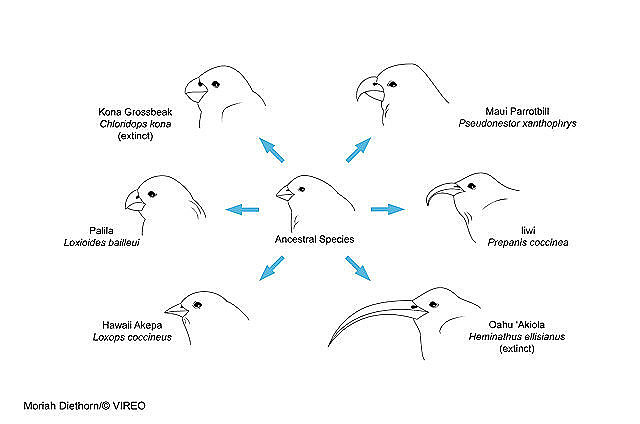
adaptive radiation Carduelis tristis
air sacs
A set of thin-walled chamber that allow air to flow in a continuous direction in the lungs. The air sacs are depicted in blue.
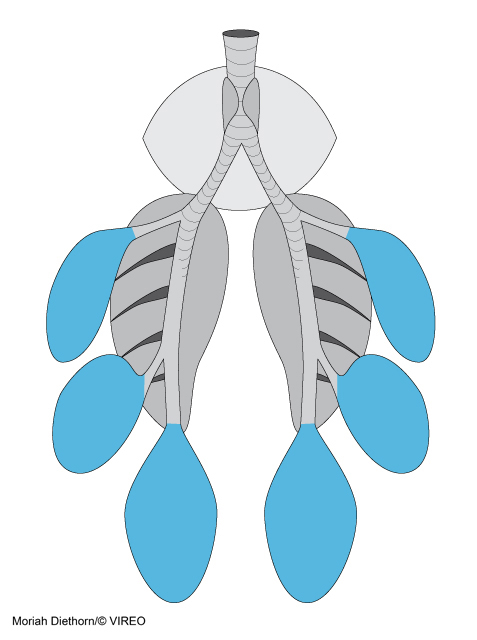
air sacs 0
airfoil
A wing or other structure designed (or evolved) to provide lift and control in flight.
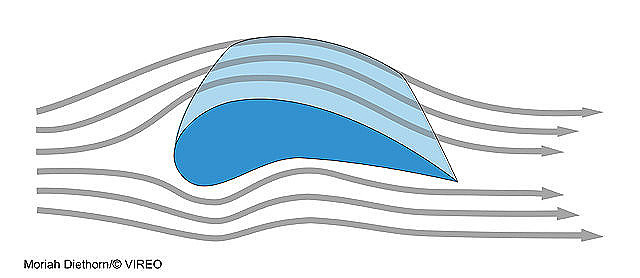
airfoil 0
albino
An animal lacking in pigments resulting in white feathers and reddish soft parts.
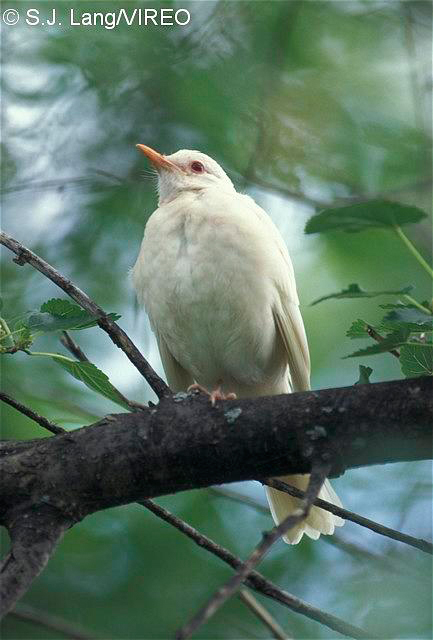
American Robin Turdus migratorius
allopreening
Mutual preening between two birds.
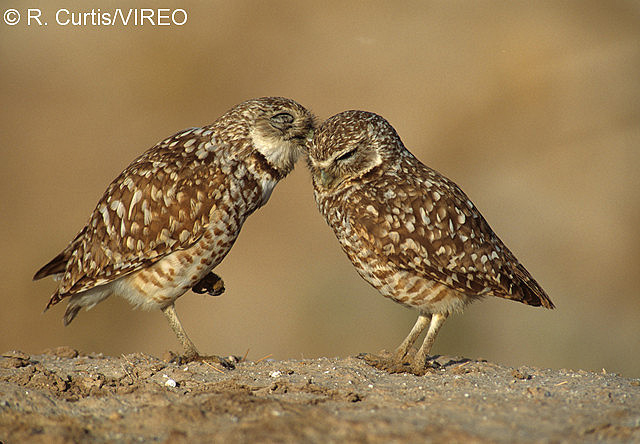
Burrowing Owl Athene cunicularia
alternate plumage
Breeding plumage or nuptial plumage.
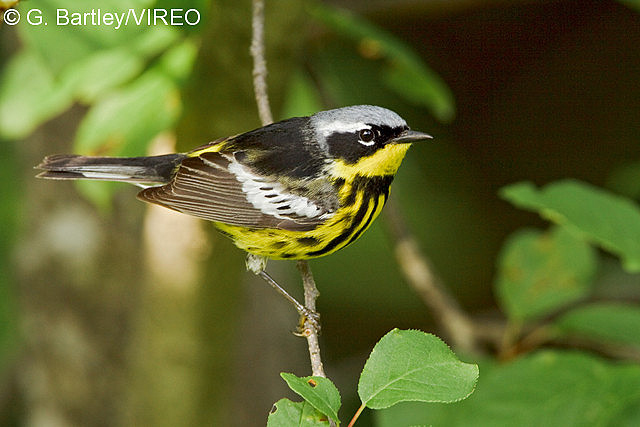
Magnolia Warbler Setophaga magnolia
altricial
Born helpless, often naked with eyes closed.
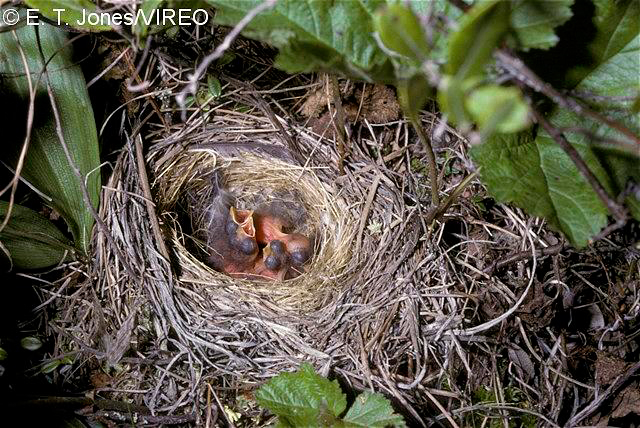
Palm Warbler Setophaga palmarum
alula
Three to five feathers in wrist of the wing that are used in slow flight or landing, much as slots on an airplane.
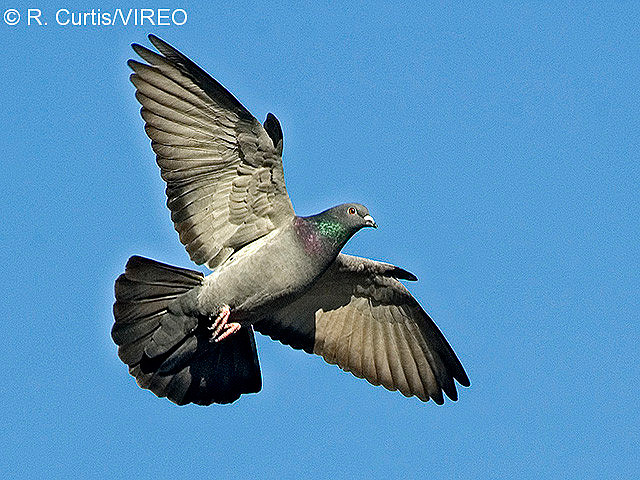
Rock Pigeon Columba livia
anisodactlyl feet
Most common pattern of bird toes, with the hallux pointing to the rear and three toes pointing forward.
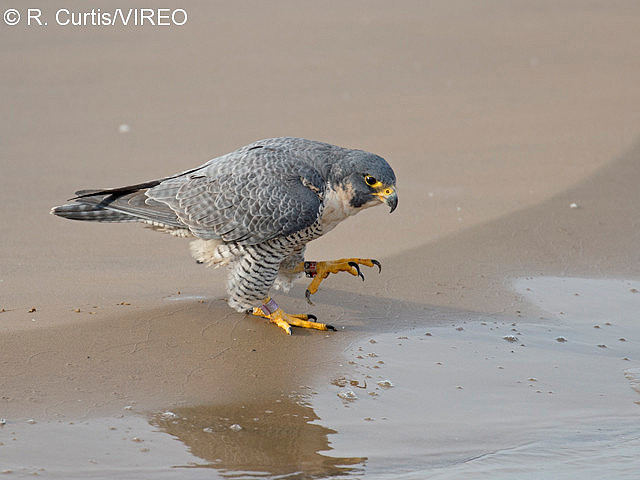
Peregrine Falcon Falco peregrinus
aposematic
A warning signal that advertises the unpalatablity of a bird or other animal.
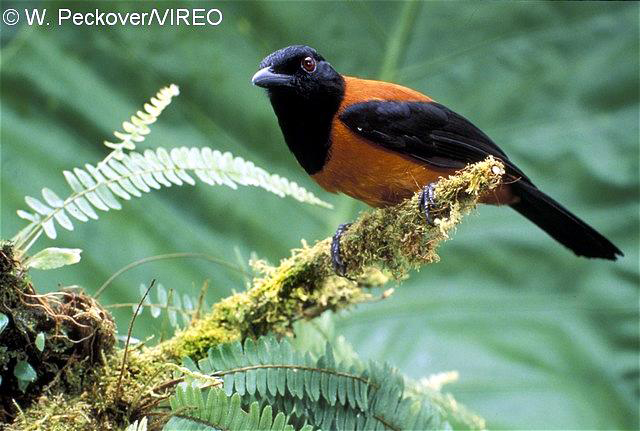
Black-headed Pitohui Pitohui dichrous
auricular
Area around the ear opening on the side of a bird’s head. Note blue auricular feathers above.
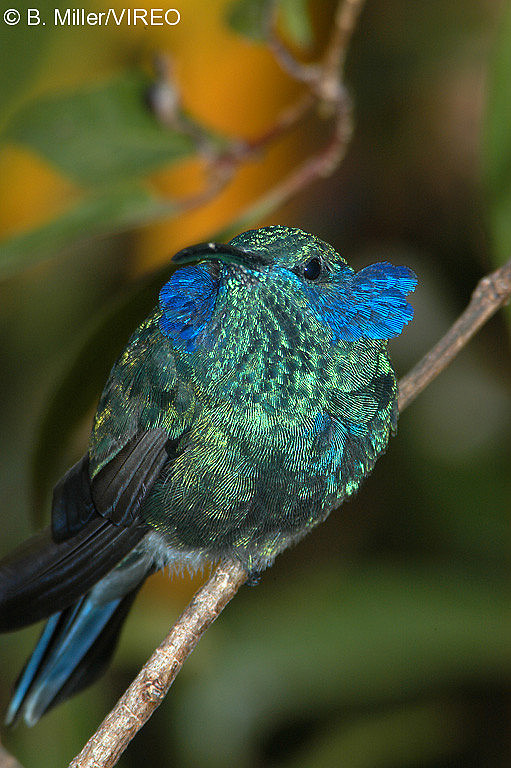
Green Violetear Colibri thalassinus
axillary
Area between the body and ventral surface of the wing. Note black axillary feathers in Black-bellied Plover
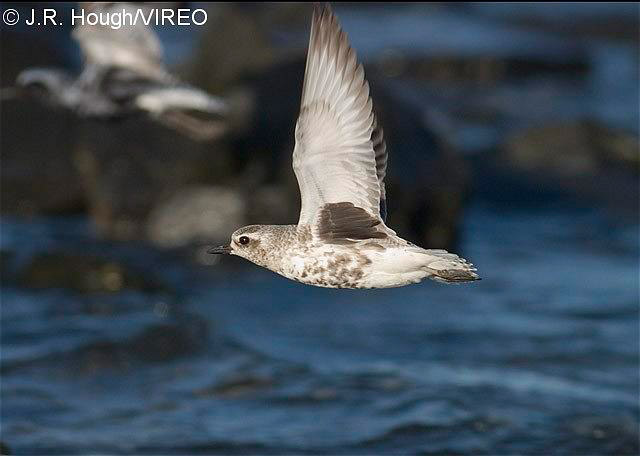
Black-bellied Plover Pluvialis squatarola
Bbasic plumage
Non-breeding or winter plumage - typically duller colored
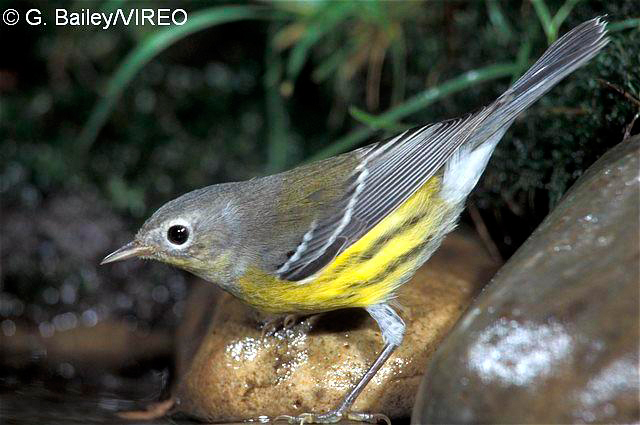
Magnolia Warbler Setophaga magnolia
belly
The ventral part of the bird below the breast and above the legs. Above, it is the red area above the legs.
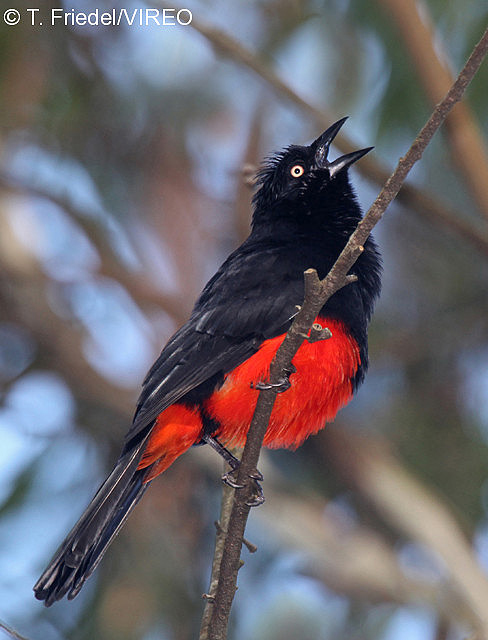
Red-bellied Grackle Hypopyrrhus pyrohypogaster
bill
The beak
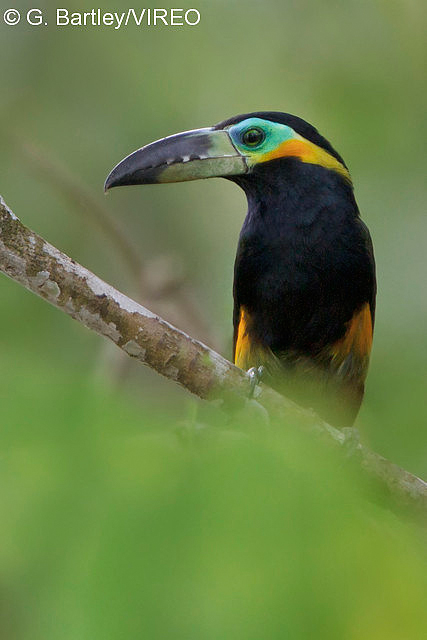
Golden-collared Toucanet Selenidera reinwardtii
bill-wiping
The behavior of birds wiping the bill clean of sticky food or other substances after feeding
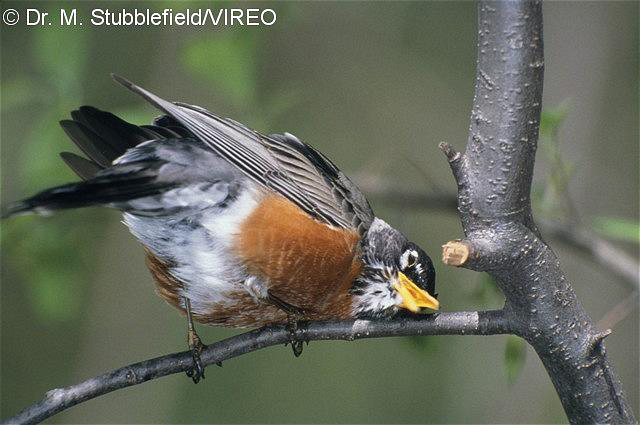
American Robin Turdus migratorius
binocular vision
Three-dimensional vision resulting from overlapping fields of vision due to placement of the eyes facing forward
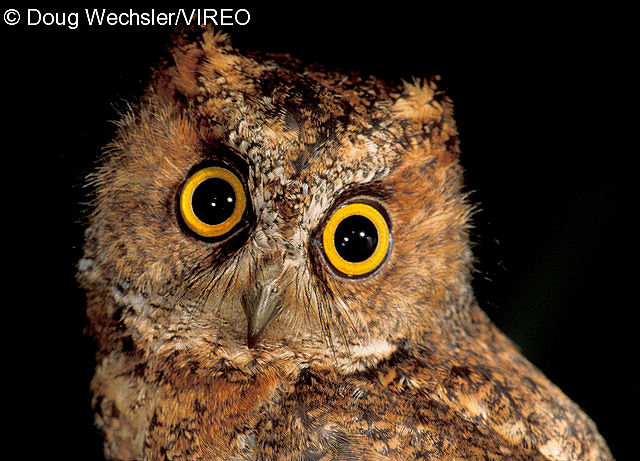
Luzon Scops-Owl Otus longicornis
booming sacs
Inflatable offshoots of the esophagus covered with bright-colored skin used in courtship display
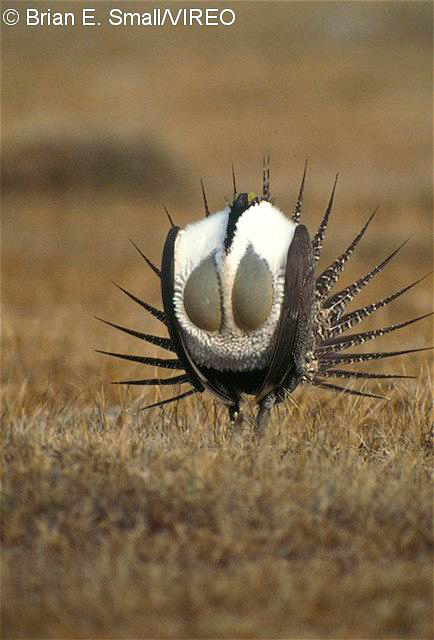
Greater Sage-Grouse Centrocercus urophasianus
bounding flight
Undulating flight pattern with short bursts of flapping followed by wings folded against the body

bounding flight 0
bower
A structure built by males of certain promiscuous species to attract females
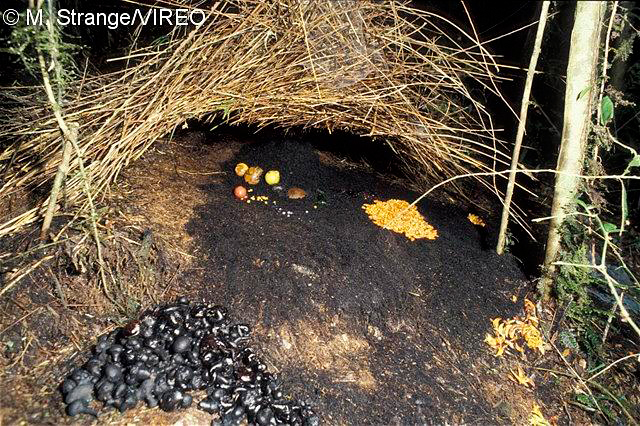
Gardener Bowerbird Amblyornis inornatus
breast
The chest - the area between the throat andbelly. The blue in the front of this kingfisher corresponds to the area of the breast.
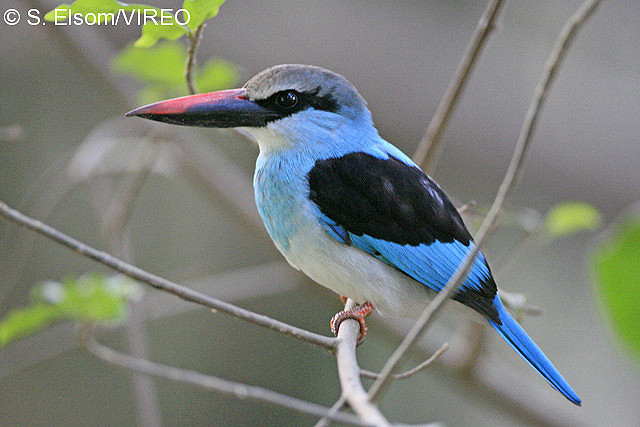
Blue-breasted Kingfisher Halcyon malimbica
bristles
Stiff feathers without vanes or barbules
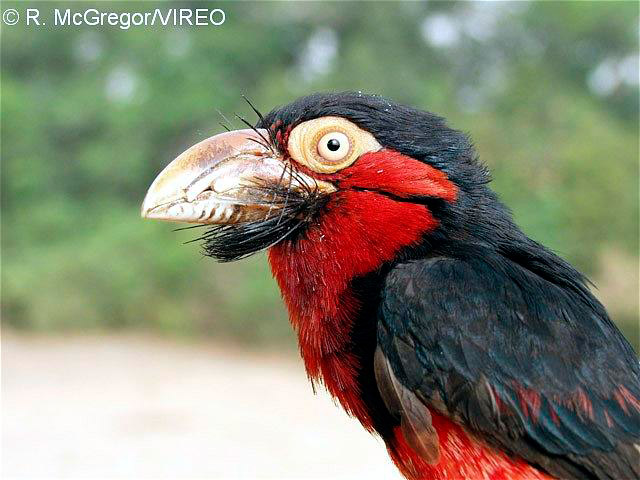
Bearded Barbet Lybius dubius
bronchi
The air passageway that transports air from the trachea to the lungs
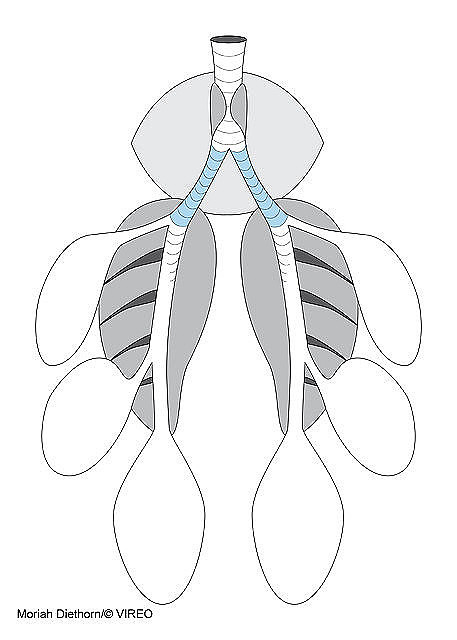
bronchi 0
brood
The young birds derived from one clutch of eggs
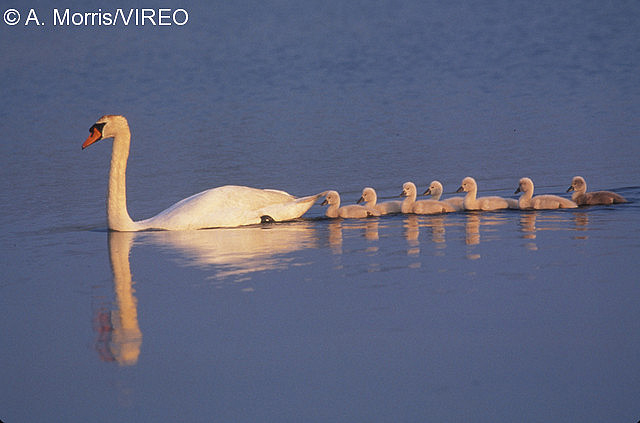
Mute Swan Cygnus olor
brood parasite
A bird that lays its egg in the nest of another bird. Cowbirds and Old World cuckoos are the most familiar examples.
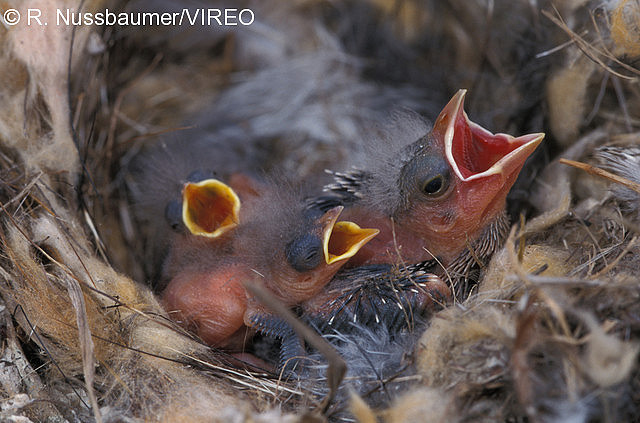
Bronzed Cowbird Molothrus aeneus
brood patch
A highly vascularized, featherless area on the belly of incubating birds
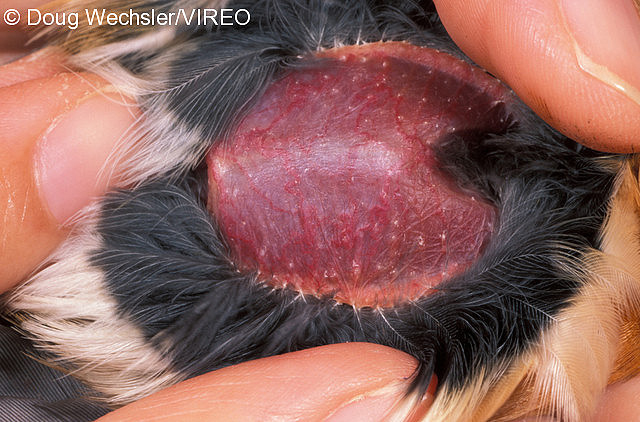
Large-billed Blue-Flycatcher Cyornis caerulata
Ccamouflage
Use of features that blend in with the environment to hide
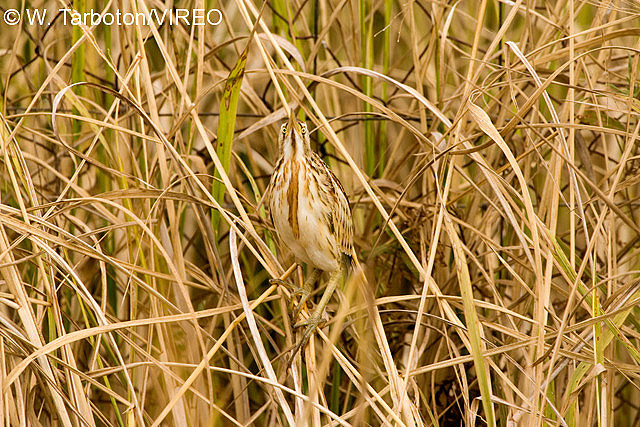
Little Bittern Ixobrychus minutus
carotenoid
Organic pigments derived from plants and used by birds to color feathers and soft parts
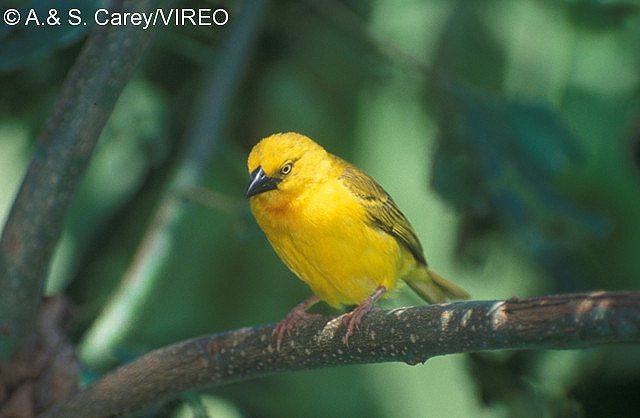
Holub's Golden Weaver Ploceus xanthops
casques
Hollow, bony extension of the skull in hornbills, such as in some hornbills and cassowaries.
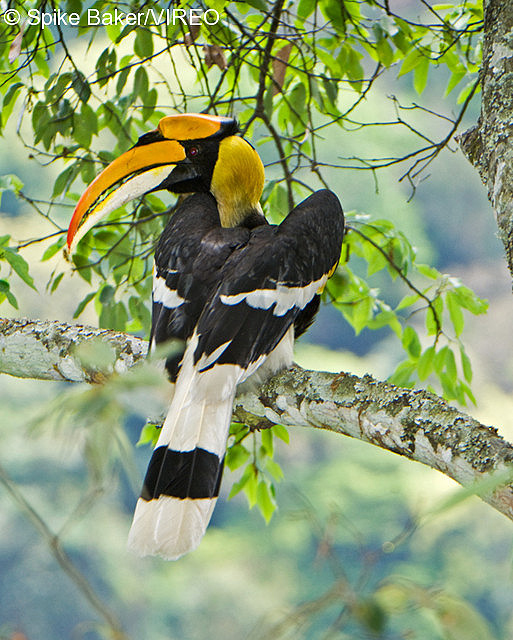
Great Hornbill Buceros bicornis
cavity nest
A nest in a hole in a tree, bank, or the ground
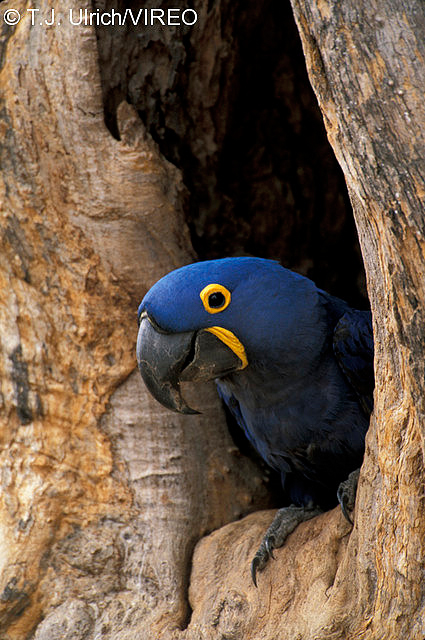
Hyacinth Macaw Anodorhynchus hyacinthinus
central fovea
An area of densely packed cells near the center of the retina that perceives sharper images
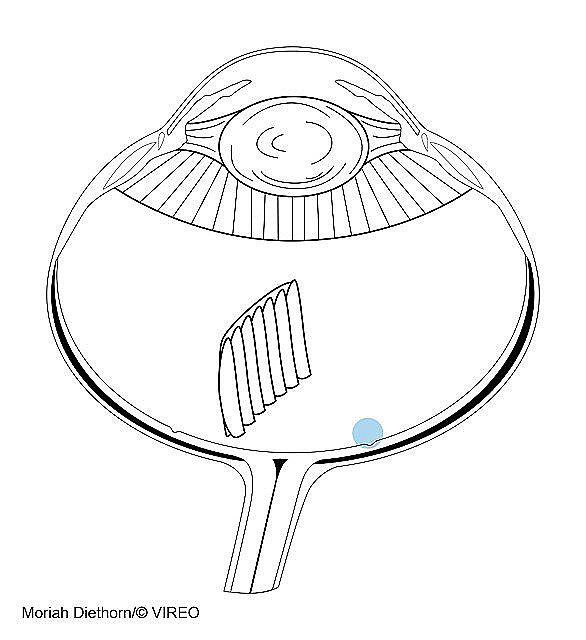
central fovea
cere
Leathery skin around the nostrils in birds such as hawks and pigeons
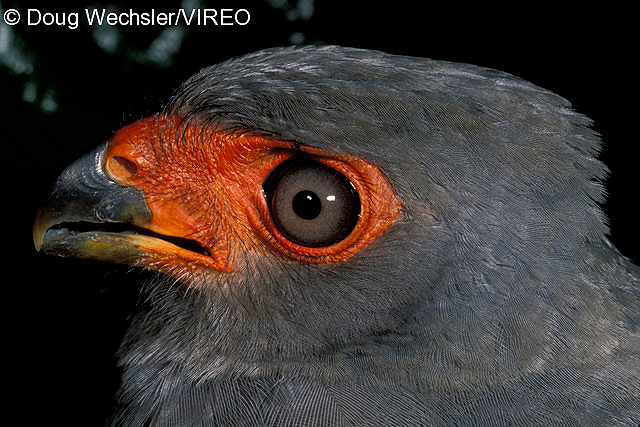
Plumbeous Forest-Falcon Micrastur plumbeus
chin
A small area directly behind the mandible
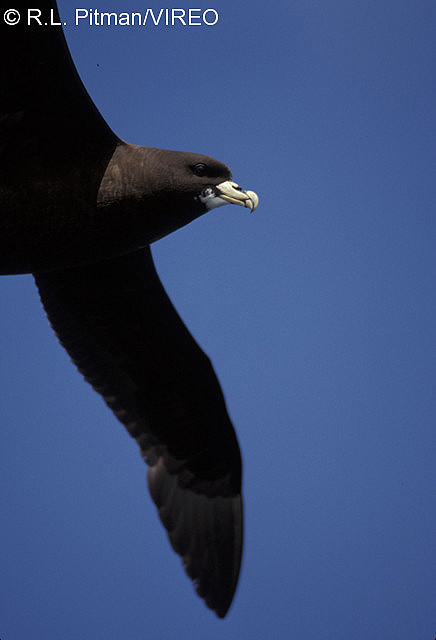
White-chinned Petrel Procellaria aequinoctialis
choacal protuberance
Enlargement of the cloacal region in some birds during breeding season, caused by the swelling of tubules that store sperm
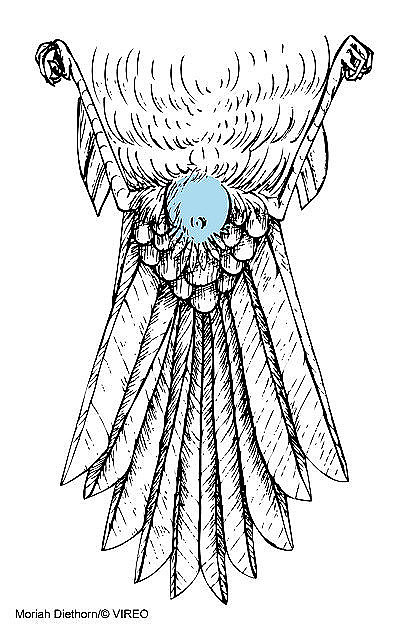
cloacal protuberance
choana
An opening in the roof of the mouth that leads to the two nasal cavities
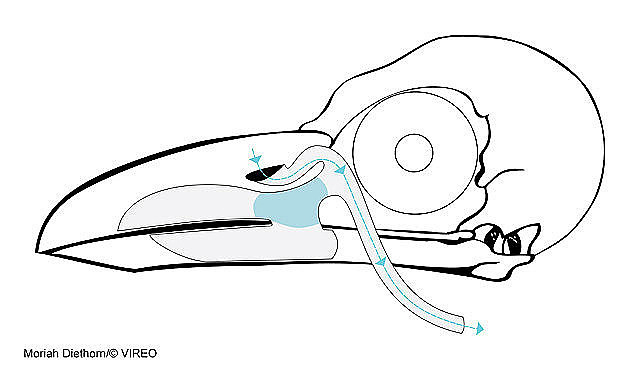
choana
clay lick
An area of clay visited by birds, which eat the clay for its mineral content
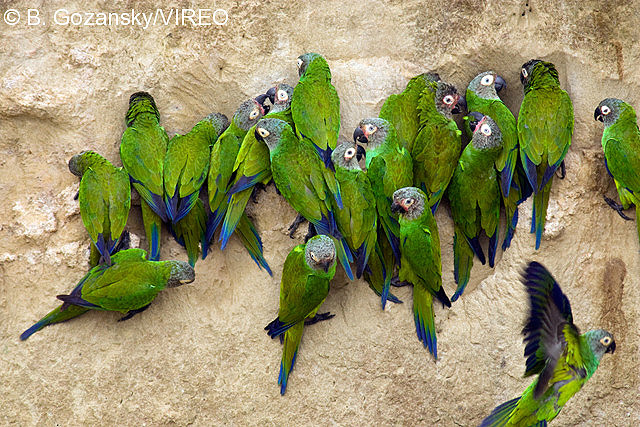
Dusky-headed Parakeet Aratinga weddellii
cline
A gradual change in characters of members of the same species along a gradient of environmental or geographical transition
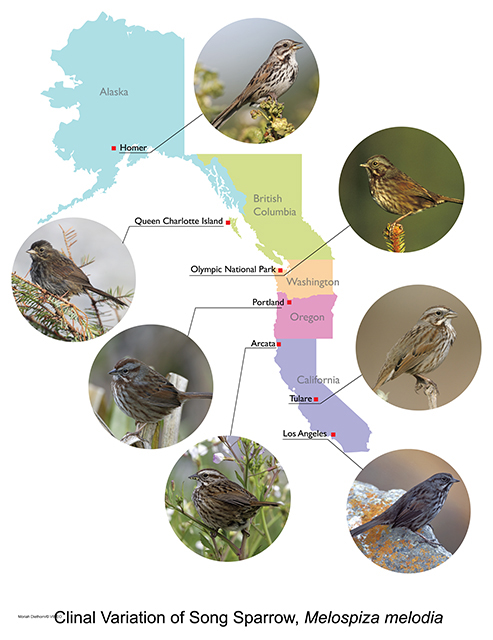
cline
cloaca
Common opening for excretory, urinary, and reproductive systems
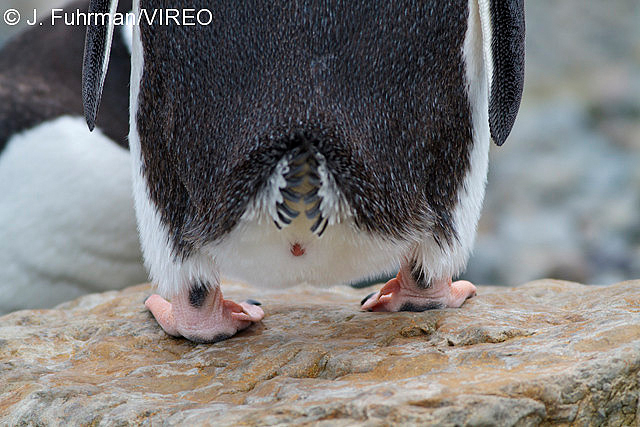
Gentoo Penguin Pygoscelis papua
cloacal bursa
An organ off of the cloaca, active in young birds, that produces B cells, specialized white blood cells
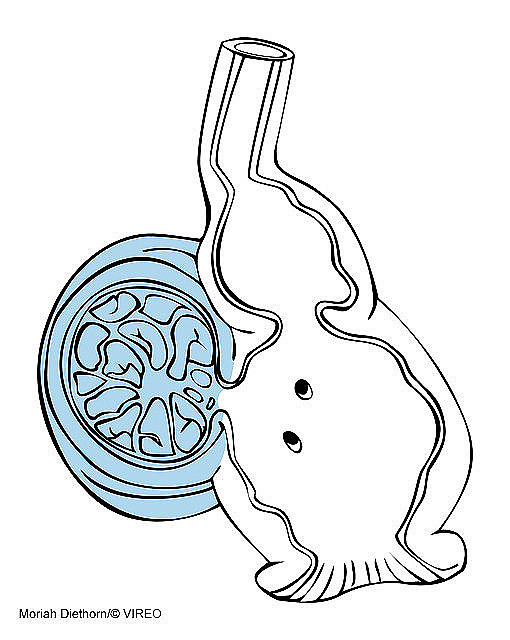
cloacal bursa
clutch
The set of eggs laid by a single female during one bout of nesting. Here is a clutch size of four.
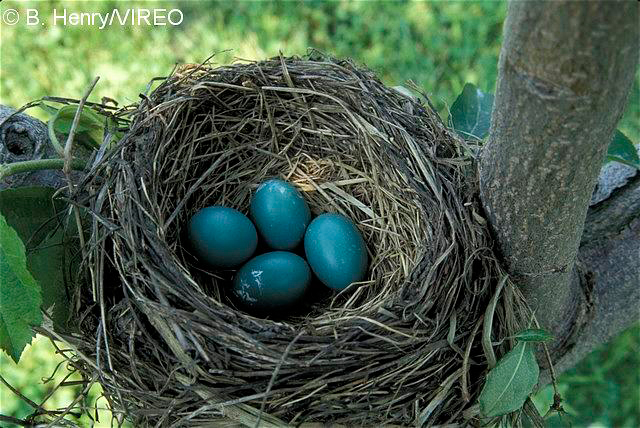
American Robin Turdus migratorius
coevolution
Reciprocal adaptations evolved by two or more organisms in response to changes in the other species
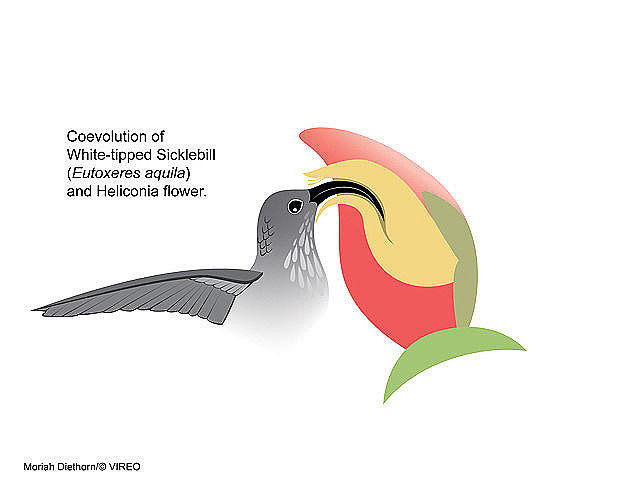
coevolution
colony
A group of birds nesting together
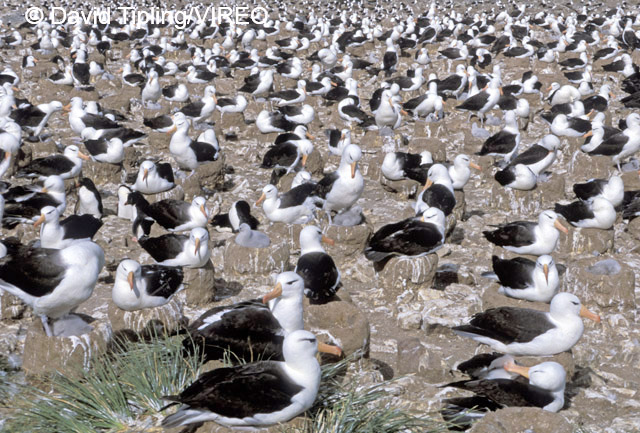
Black-browed Albatross Thalassarche melanophris
comb
A fleshy growth on the top of the head, especially in chickens
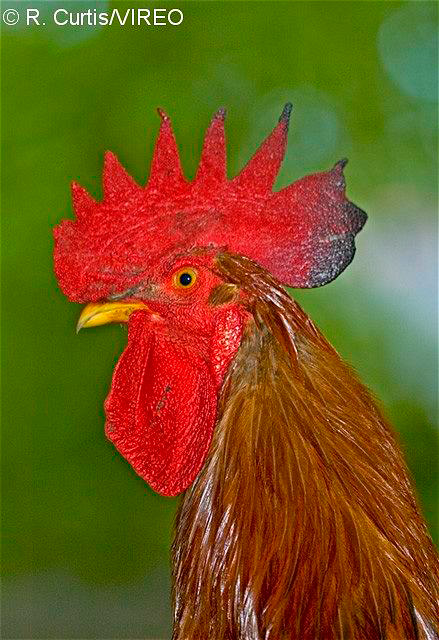
Red Junglefowl Gallus gallus
commensal
A relationship between to animals that helps one species while being neither a help or hindrance to the other
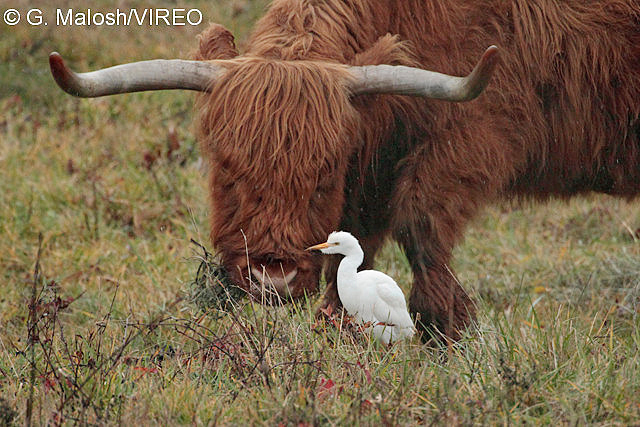
Cattle Egret Bubulcus ibis
communal roost
A site used by large numbers of birds to sleep
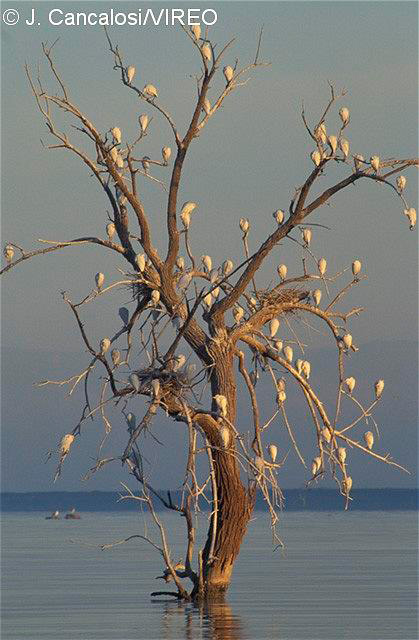
Cattle Egret Bubulcus ibis
cones
Color sensitive cells in the retina
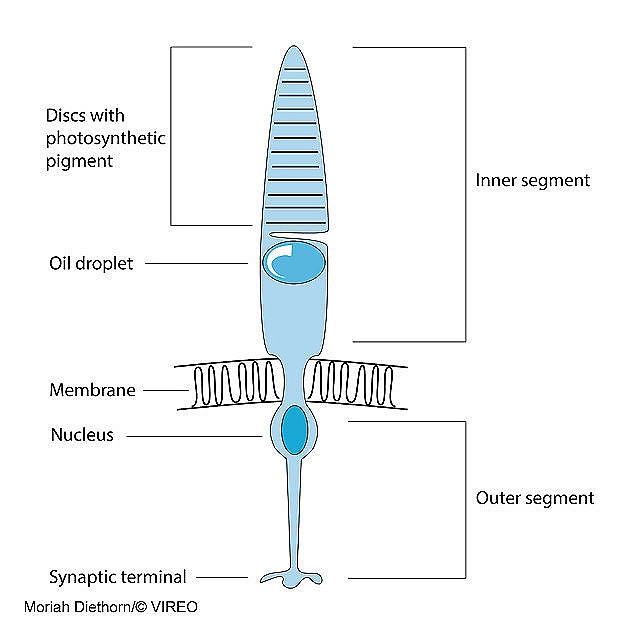
cone
contour feathers
The typical feathers covering a bird with a long central shaft and a broad vane
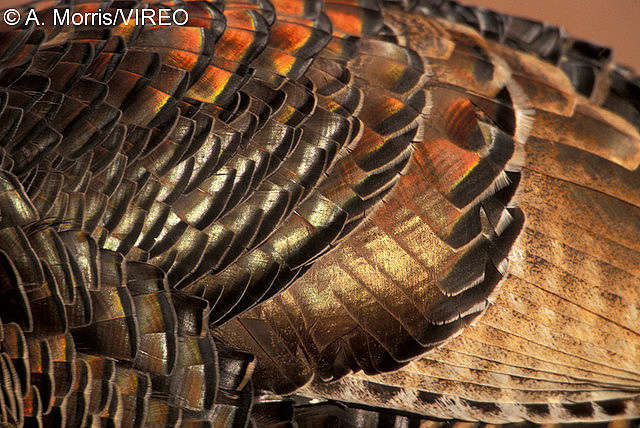
Wild Turkey Meleagris gallopavo
convergent evolution
A situation where two unrelated species evolve similar features because of similar environments. Example: Yellow-throated Longclaw from Africa and Eastern Meadowlark from the Americas.
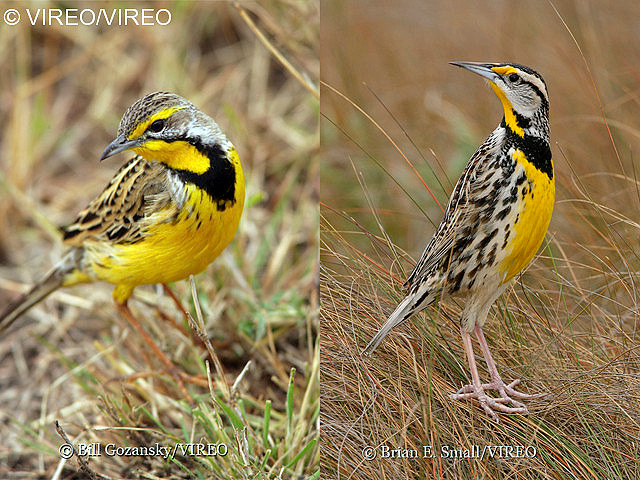
Yellow-throated Longclaw Macronyx croceus
cooperative foraging
A feeding strategy in which individuals in a group benefit by working together to catch prey
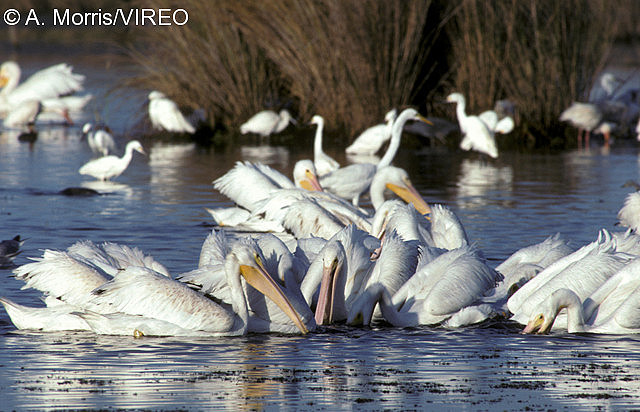
American White Pelican Pelecanus erythrorhynchos
coracoid
Bone connecting the sternum to the shoulder
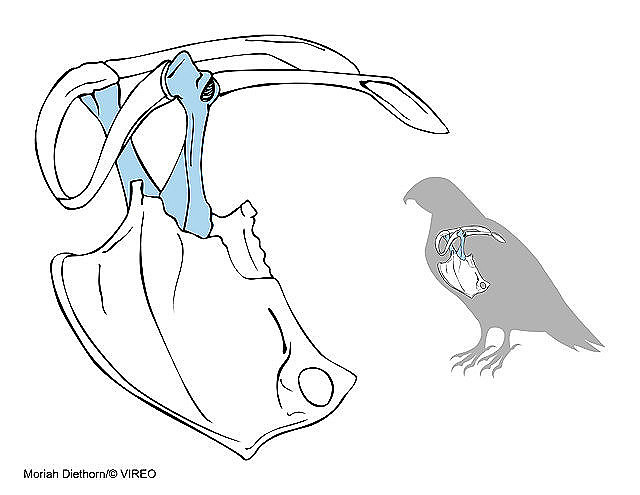
coracoid
courtship display
Ritualized posturing and movements used mostly by males, or both sexes together, to attract mates
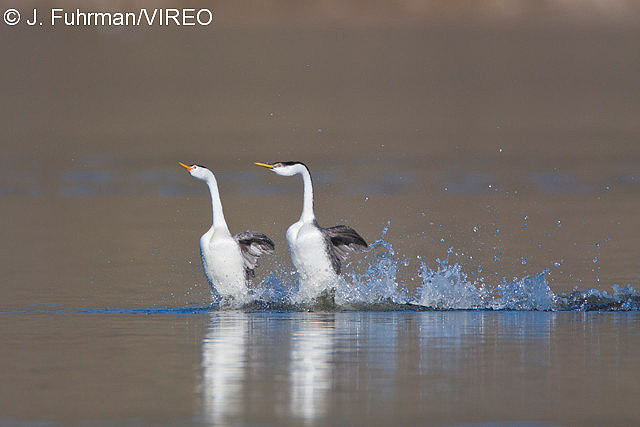
Western Grebe Aechmophorus occidentalis
courtship feeding
Transfer of food from the male to the female during courtship and early stages of nesting
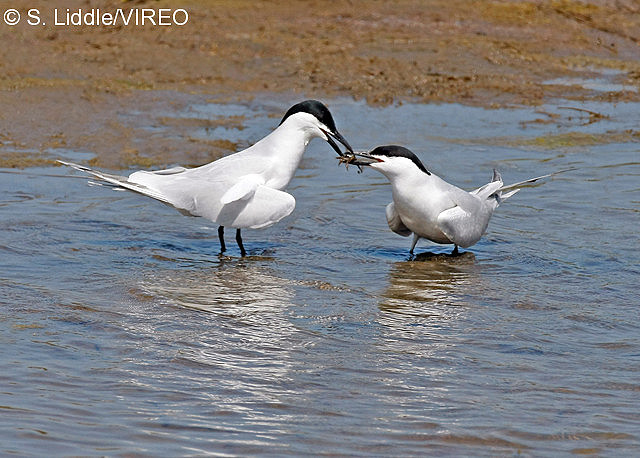
Gull-billed Tern Gelochelidon nilotica
coverts
Feathers that overlap wing or tail feathers, covering the base of those feathers
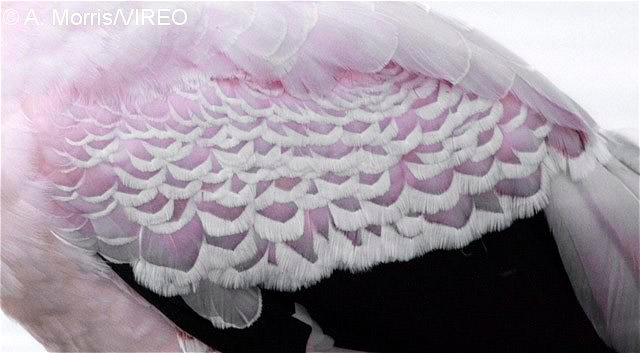
Yellow-billed Stork Mycteria ibis
crèche
A group of bird chicks from different broods attended by a smaller number of adults, freeing other parents to forage
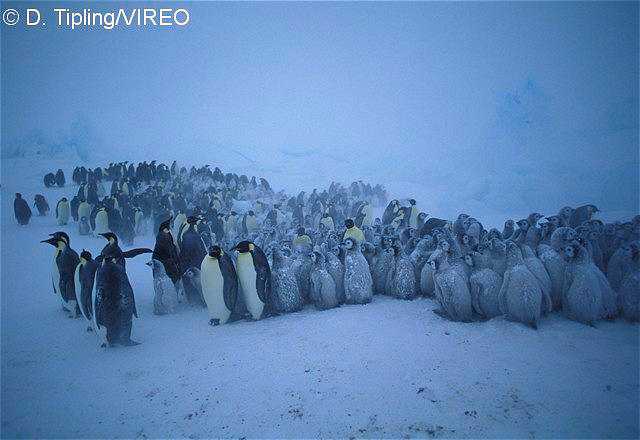
Emperor Penguin Aptenodytes forsteri
crepuscular
Active at dusk or dawn
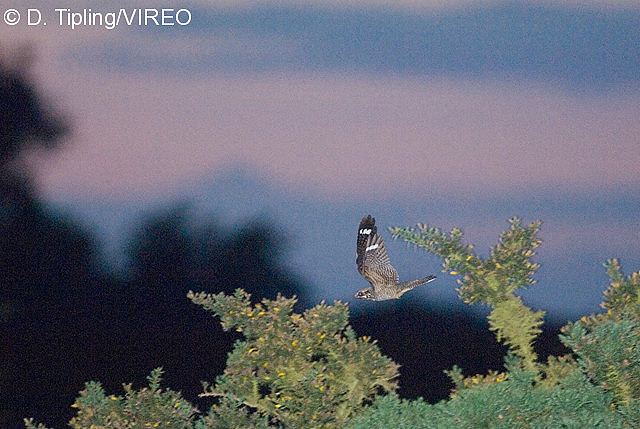
European Nightjar Caprimulgus europaeus
crop
A sac off of the esophagus used to store food
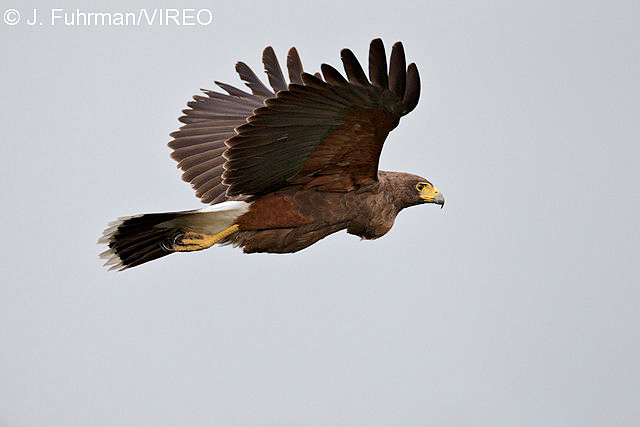
Harris's Hawk Parabuteo unicinctus
crop milk
Liquid protein from cells grown in a pigeon's crop. Also known as pigeon milk.
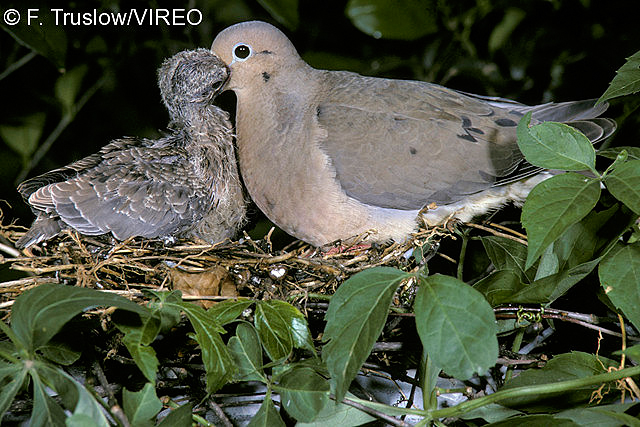
Mourning Dove Zenaida macroura
crown
The top of a birds head
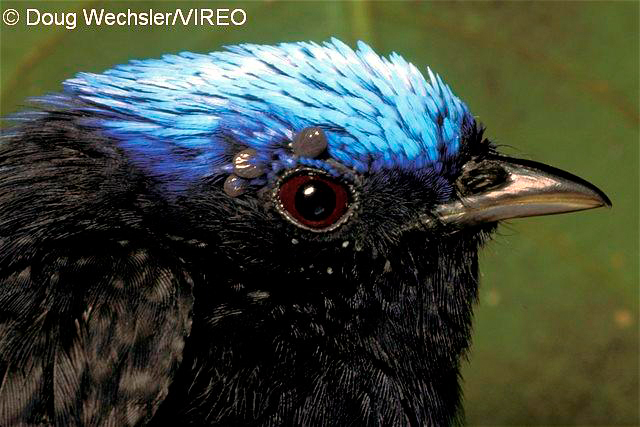
Blue-crowned Manakin Lepidothrix coronata
cup nest
An open nest with a shape like a teacup minus the handle
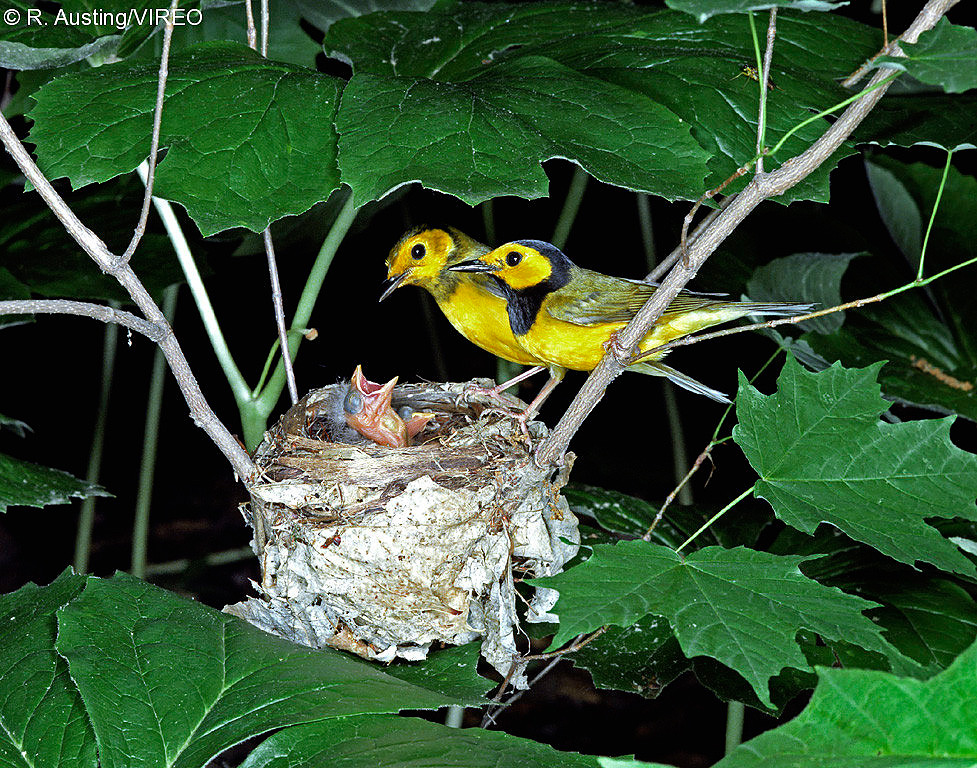
Hooded Warbler Setophaga citrina
Ddecurved
Curved in a downward fashion
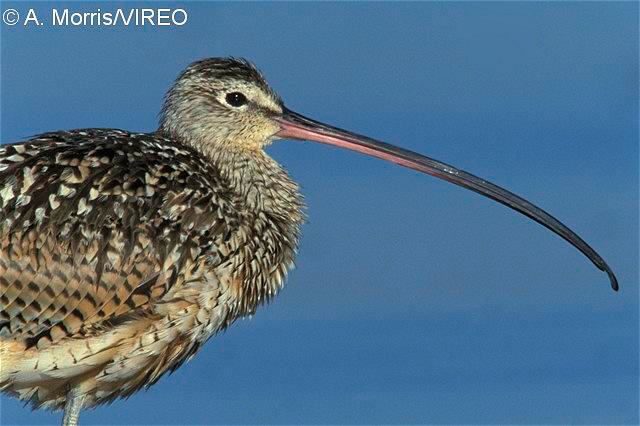
Long-billed Curlew Numenius americanus
disjunct range
An area of distribution for an organism that is separate from the main area of distribution
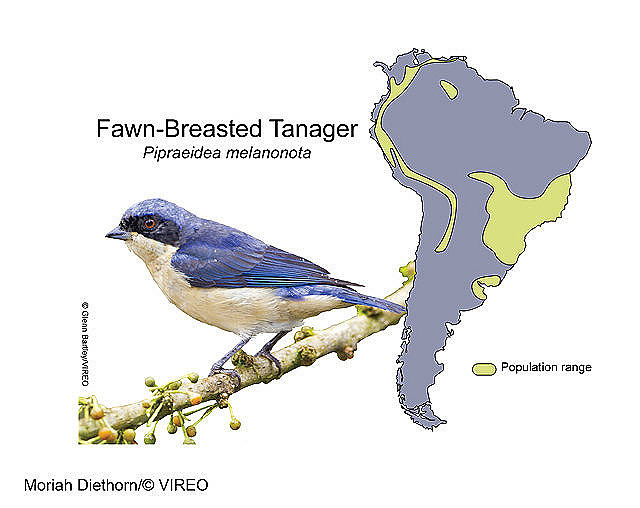
disjunct range
distraction display
Actions taken by a parent bird, such as feigning a broken wing, or acting uncoordinated to distract a predator from the nest or chicks
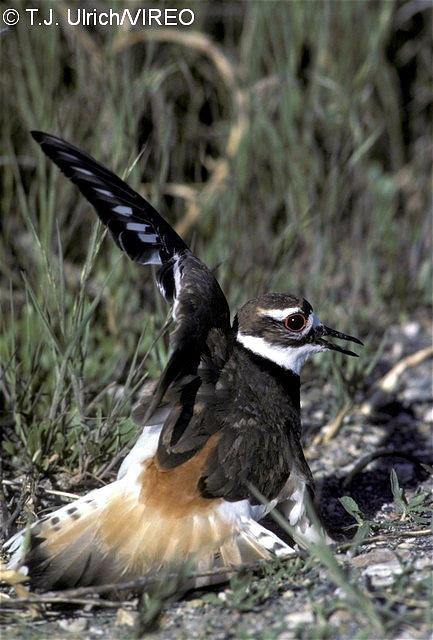
Killdeer Charadrius vociferus
#N/Adown feathers
Fluffy, soft feathers of young birds or similar feathers beneath the contour feathers of some adult birds
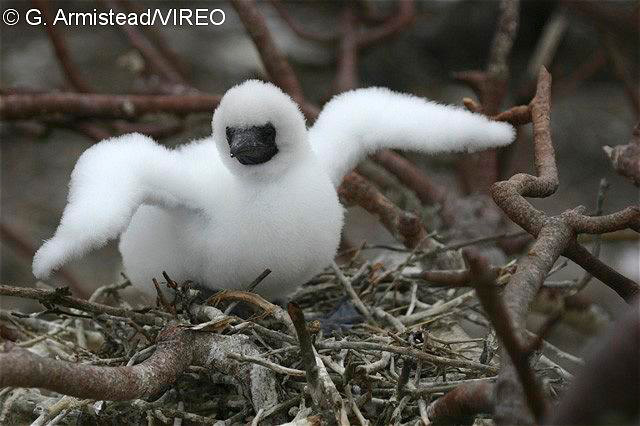
Red-footed Booby Sula sula
drag
The force that resists movement through the air
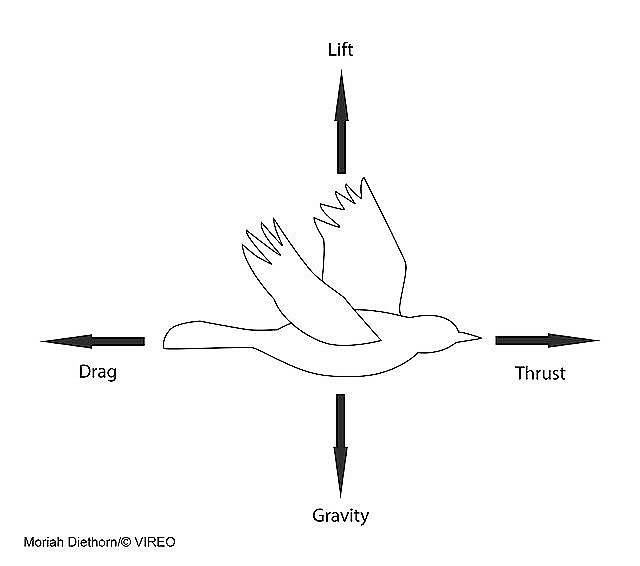
drag force
drumming
The beating of the wings by a grouse during courtship causing the air to make a thumping sound. Also the rapid hammering of a woodpecker to create a sound proclaiming its territory
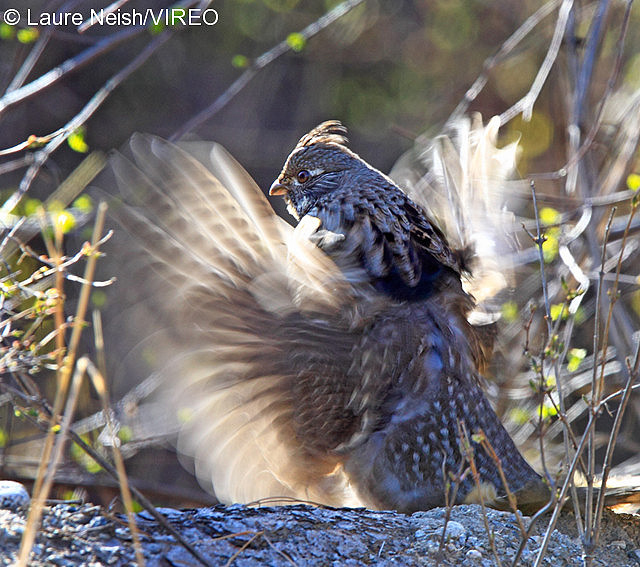
Ruffed Grouse Bonasa umbellus
dust-bathing
Crouching and fluttering in dust or dry dirt to spread fine particles into feathers to get rid of ectoparasites and maintain feathers
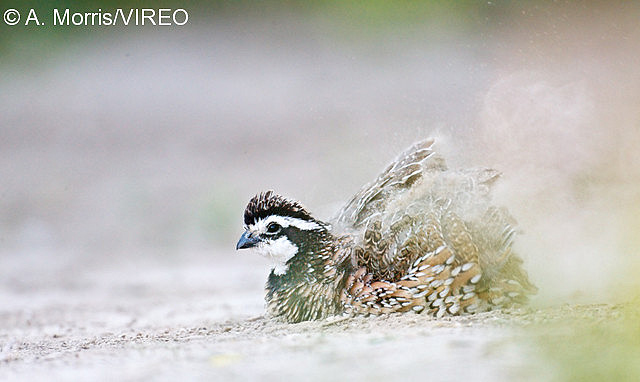
Northern Bobwhite Colinus virginianus
dynamic soaring
A mode of flight in which the bird gains energy by repeatedly crossing between air masses with different velocities. Albatrosses, for example, gain lift by repeatedly crossing from the calm of a wave trough to headwinds above the waves.
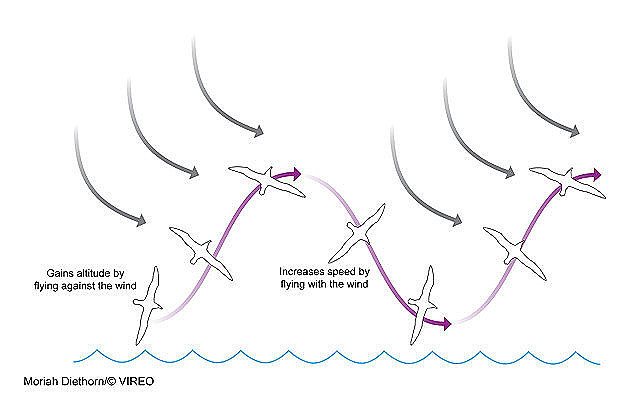
dynamic soaring
Eeclipse plumage
A female-like plumage acquired by male ducks and some other birds after breeding
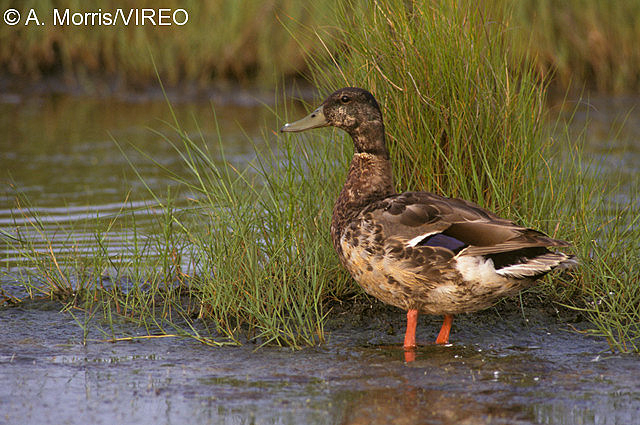
Mallard Anas platyrhynchos
ectoparasite
A parasite that lives on the outside of an animal, such as a tick, mite, or leech
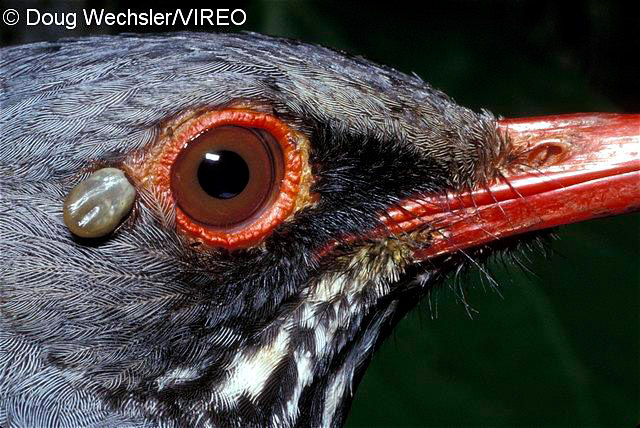
Red-legged Thrush Turdus plumbeus
egg
The reproductive product of a bird
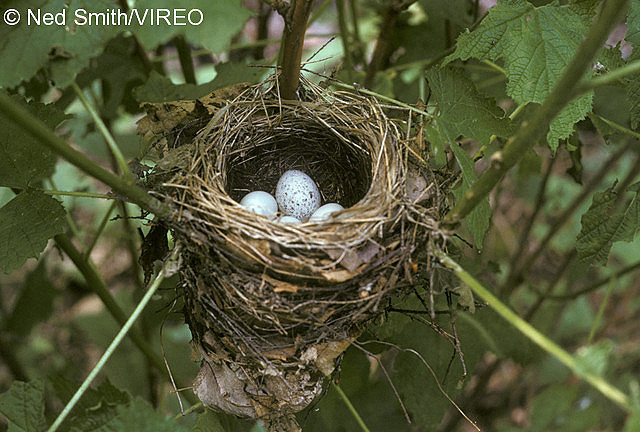
Brown-headed Cowbird Molothrus ater
egg tooth
A small sharp knob near the tip of the beak that helps the chick break open the egg. It falls of or is resorbed within a few days of hatching.
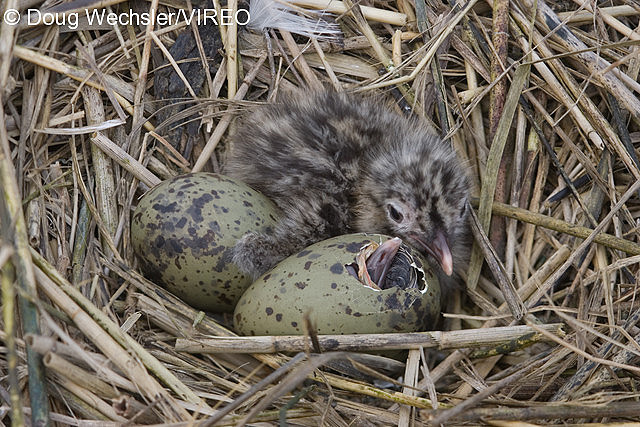
Laughing Gull Leucophaeus atricilla
embryo
The developing chick within an egg
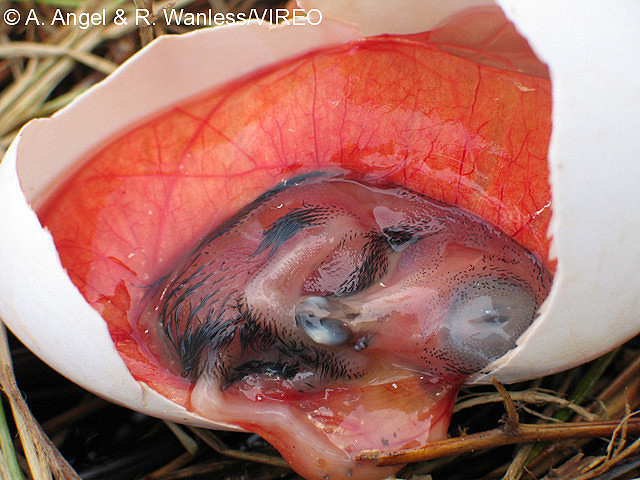
Atlantic Petrel Pterodroma incerta
epaulettes
Bright-colored patches of feathers at the base of a bird's wings
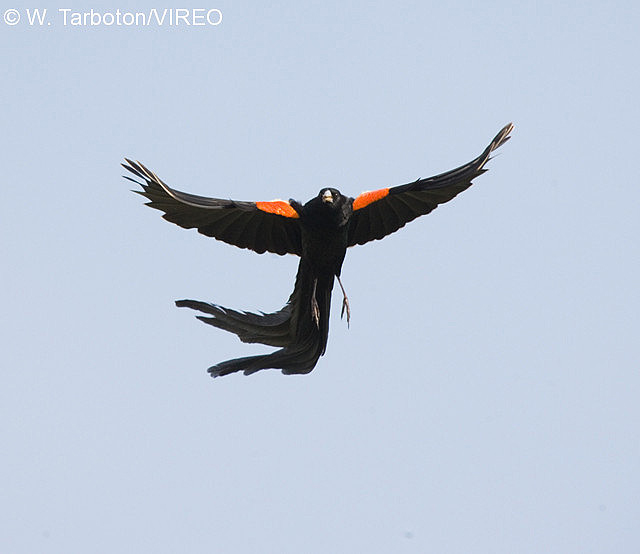
Long-tailed Widowbird Euplectes progne
esophagus
The passageway from the mouth to the stomach
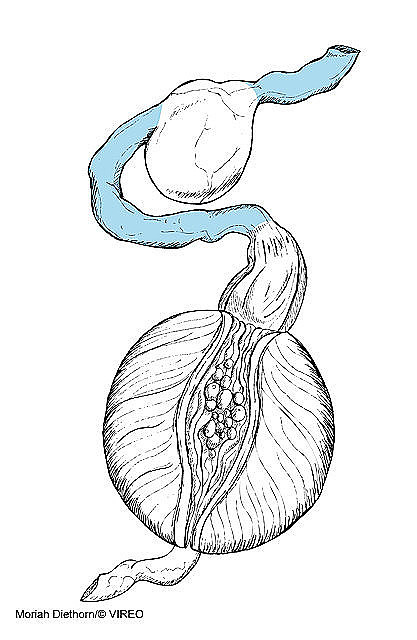
esophagus
external ear
The open of the ear leading to the tympanum or ear drum. In most birds it is shallow and covered with specialized feathers.
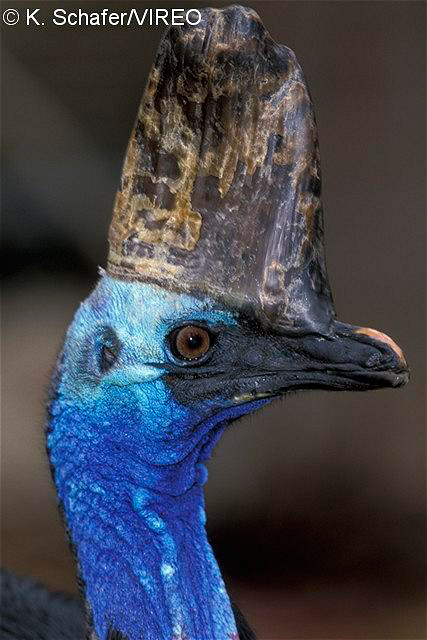
Double-wattled Cassowary Casuafalcorius casuarius
eye comb
A bright-colored skin over the eye in some birds such as grouse
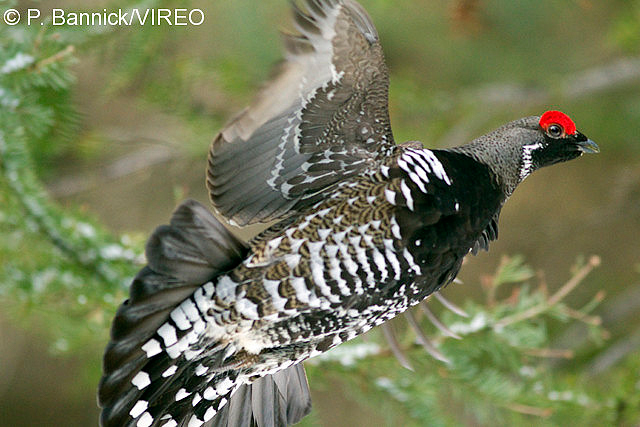
Spruce Grouse Falcipennis canadensis
eye ring
A circle of bare skin immediately around the eye
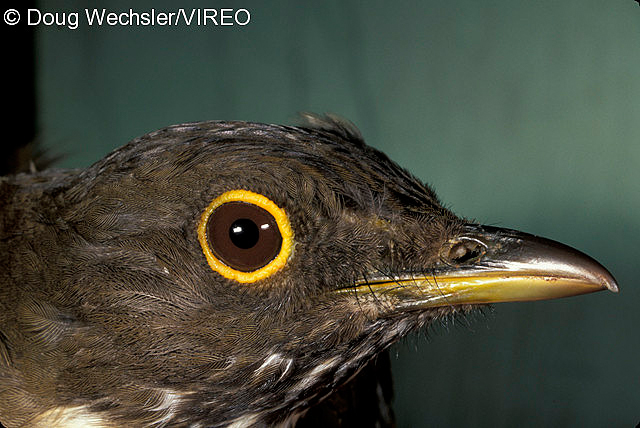
Dagua Thrush Turdus daguae
eyeline
A line created by colored feathers that continues on both sides of the eye
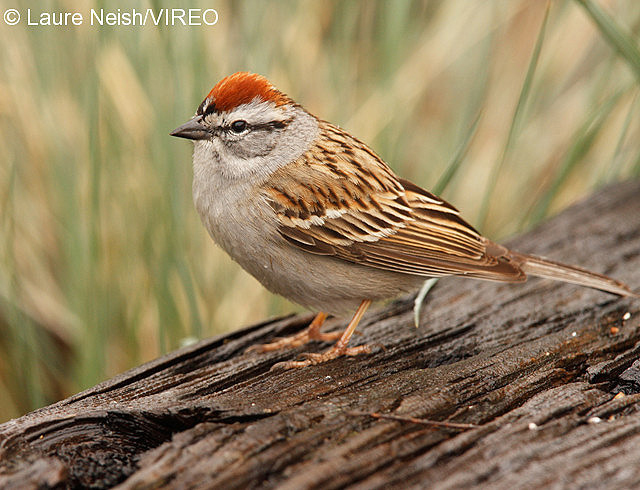
Chipping Sparrow Spizella passerina
Ffeather tracts
Regions of skin where feathers attach, also known as pterylae. Here seen as dark bands on lighter skin.
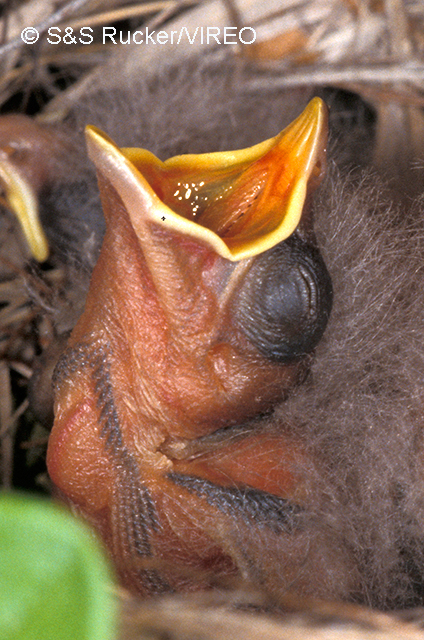
Painted Bunting Passerina ciris
fecal sac
A membrane covered packet containing the feces and uric acid that is collected from the chick's cloaca by the parent bird
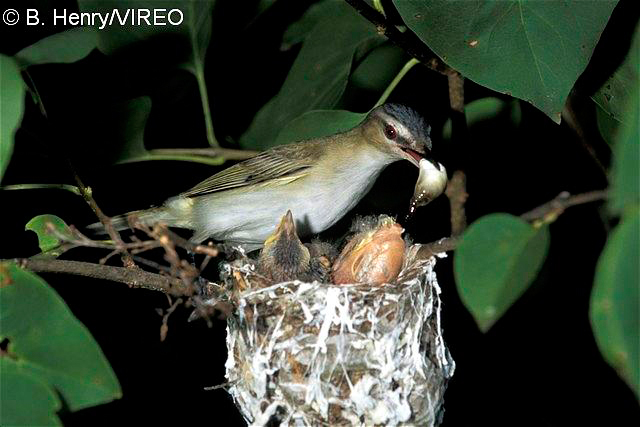
Red-eyed Vireo Vireo olivaceus
femur
The proximal (upper) leg bone
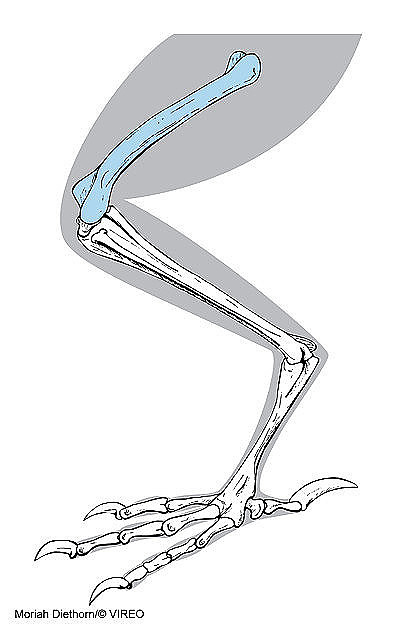
femur
fibula
The smaller of two bones on the shin or calf, familiar to many as the skinny bone in the drumstick
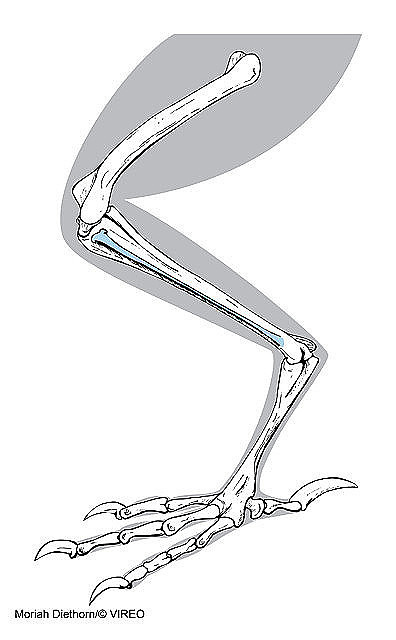
fibula
filoplumes
Fine, vaneless, hairlike feathers that have sensory receptors adjacent to their follicles
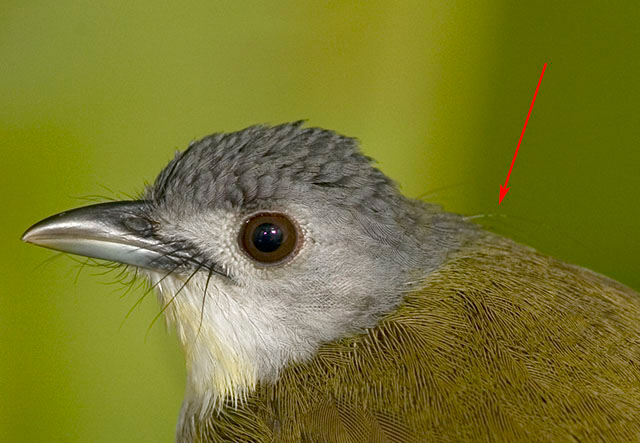
Yellow-bellied Bulbul Criniger phaeocephalus
flank
The upper sides of a bird
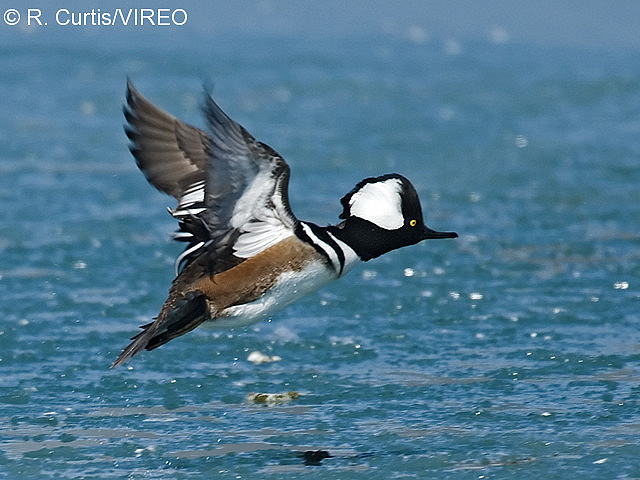
Hooded Merganser Lophodytes cucullatus
fledgling
A chick that has recently flown from the nest for the first time
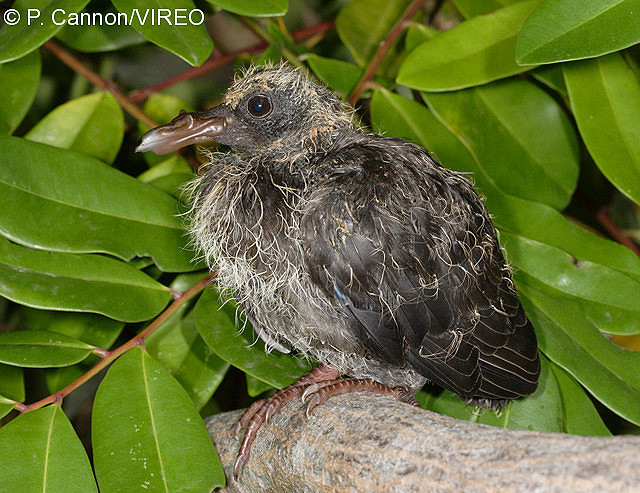
White-crowned Pigeon Patagioenas leucocephala
flight feathers
The remiges and retrices--major tail and wing feathers
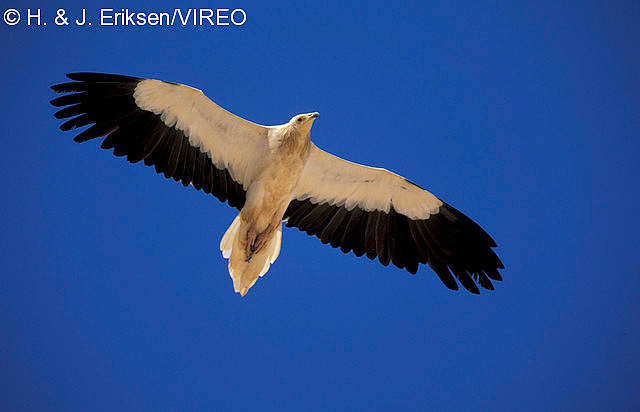
Egyptian Vulture Neophron percnopterus
flight song
A courtship or territorial song sung in flight
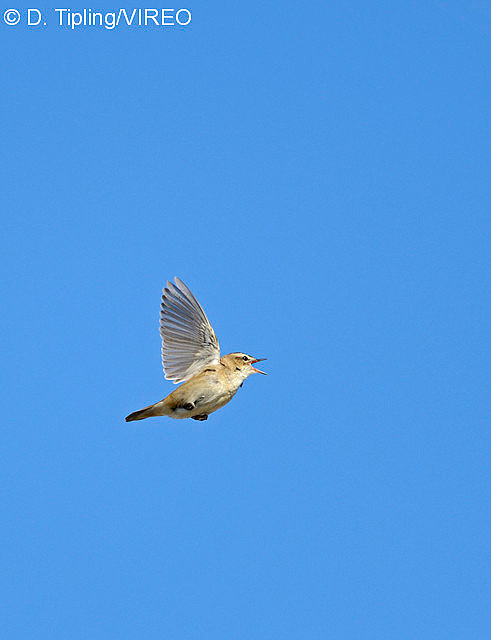
European Sedge-Warbler Acrocephalus schoenobaenus
forehead
The part of the crown just above the beak
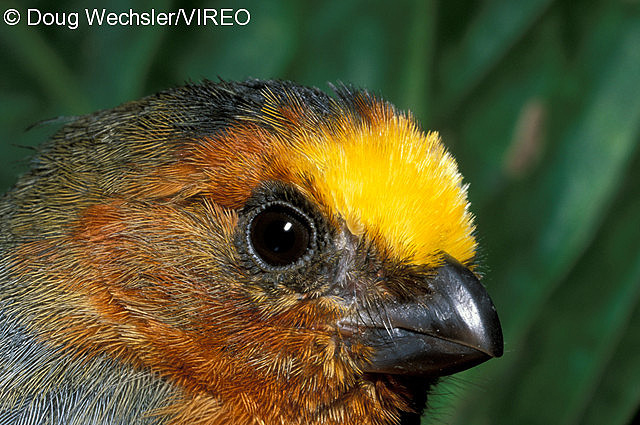
Plushcap Catamblyrhynchus diadema
forked tail
A tail with a notch in the center
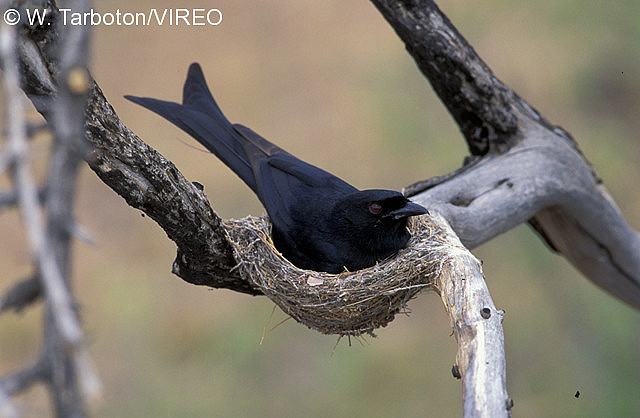
Fork-tailed Drongo Dicrurus adsimilis
frugivorous
Eating fruit as the major part of the diet
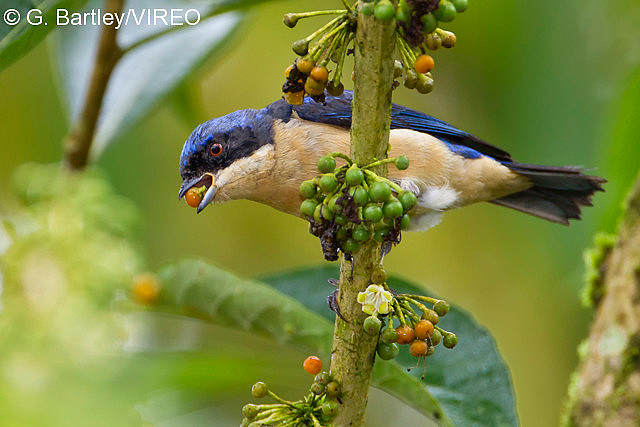
Fawn-breasted Tanager Pipraeidea melanonota
furcula
The fused clavicles of a bird - popularly known as the wishbone
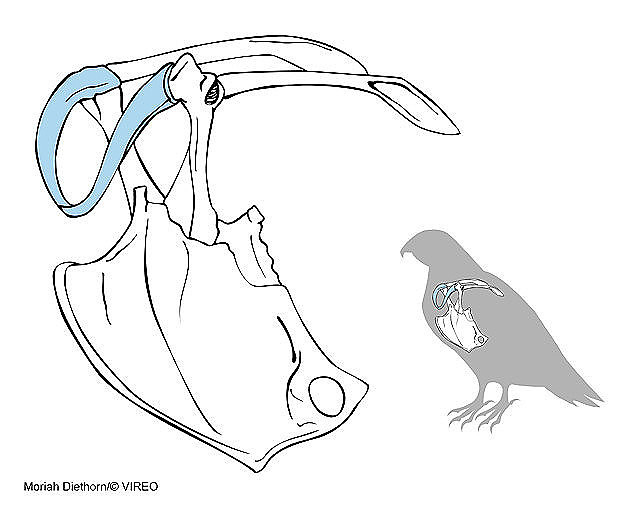
furcula
Ggape flange
The soft tissue where the two halves of the jaw join--often conspicuous in nestlings and juvenile birds
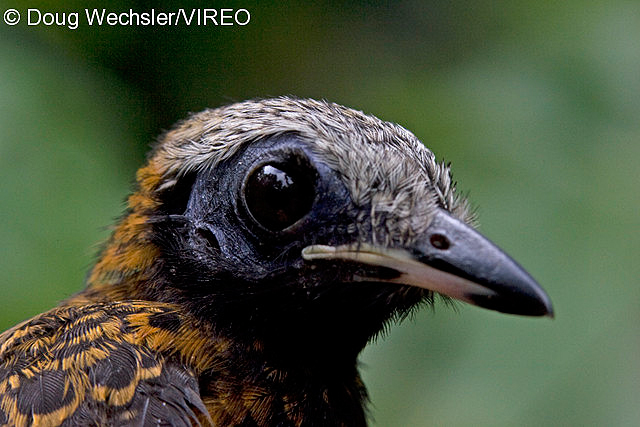
Ocellated Antbird Phaenostictus mcleannani
gizzard
The muscular section of the avian stomach which grinds food
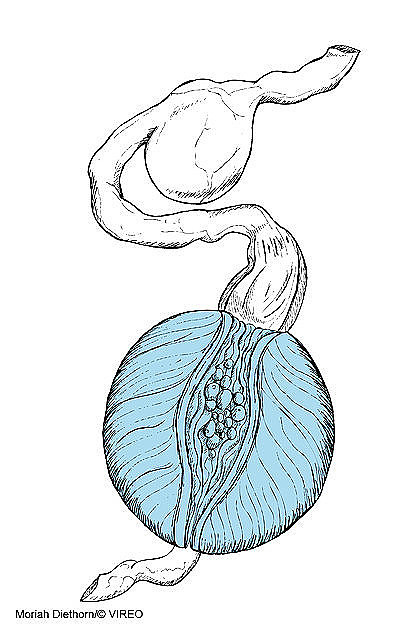
gizzard
gleaning
Picking prey off of leaves and other surfaces
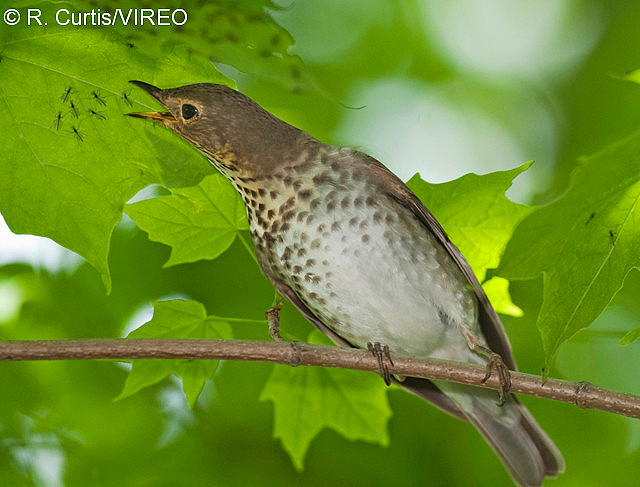
Swainson's Thrush Catharus ustulatus
glenoid fossa
The rounded depression in the scapula that articulates with the head of the humerus and allows the wing to rotate
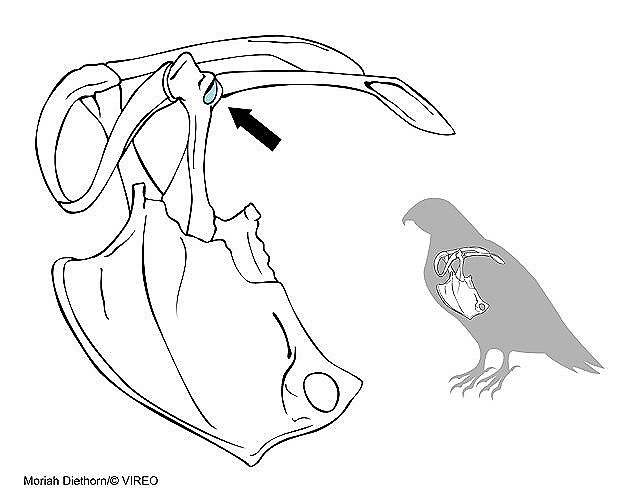
glenoid fossa
gliding
Flying without flapping while losing altitude slowly
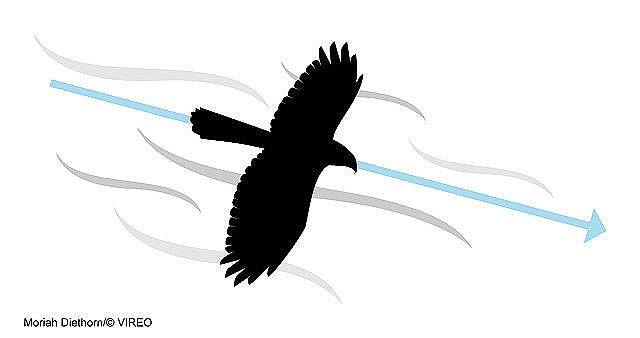
gliding
globular nest
A spherical nest, typically with the opening on the side
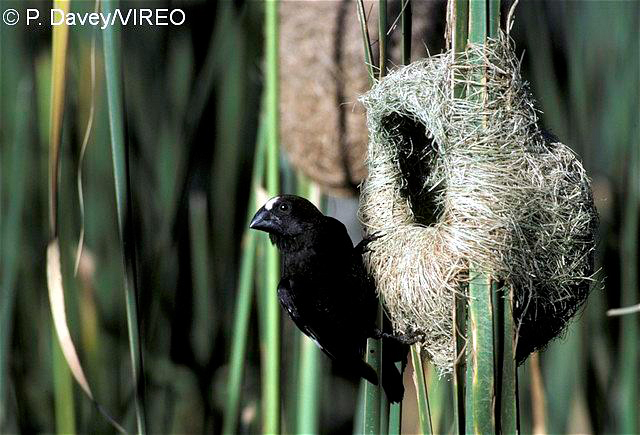
Grosbeak Weaver Amblyospiza albifrons
graduated tail
A tail in which the retrices are progressively longer toward the center
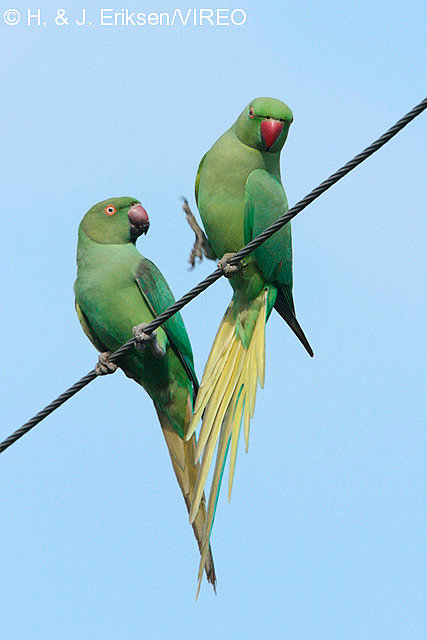
Rose-ringed Parakeet Psittacula krameri
grazing
Feeding on grass and other herbaceous plants
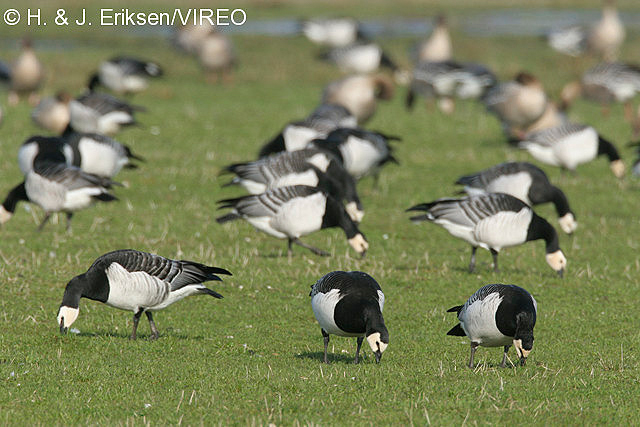
Barnacle Goose Branta leucopsis
greater coverts
The row feathers that lies immediately above the flight feathers (On the shoveler, the white row of feathers above the secondaries and the corresponding row over the primaries)
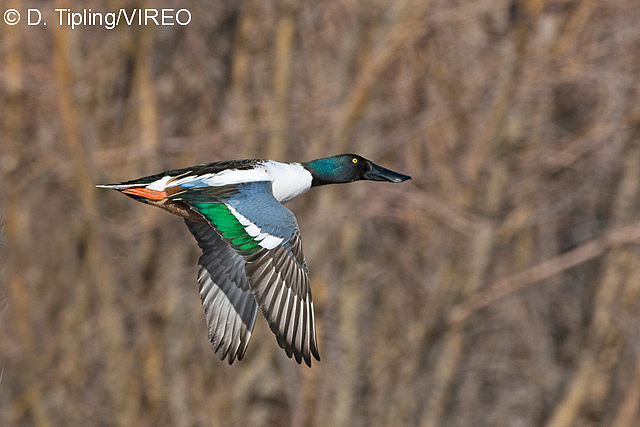
Northern Shoveler Anas clypeata
guano
The accumulated droppings of colonial birds, especially seabirds. It is mined as fertilizer in some places. Guano covers much of this hill.
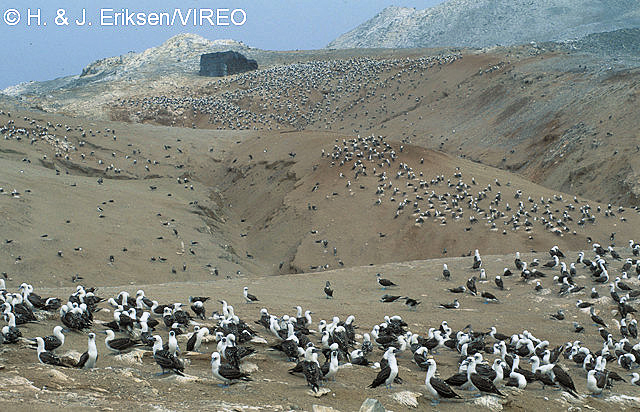
Peruvian Booby Sula variegata
guild
A group of birds in one area that exploits resources in a similar fashion. Illus. army ant followers in Panama: A Northern Barred Woodcreeper, B Plain Brown Woodcreeper, C Rufous-vented Ground-Cuckoo, D Ocellated Antbird, E Gray-headed Tanager, F Spotted Antbird, G Bicolored Antbird
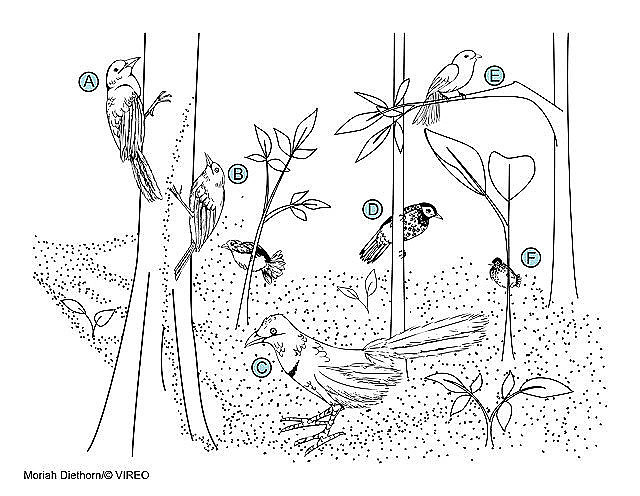
guild
gular Sac
Expandable pouch of skin just below the chin which can be used for panting to cool the bird
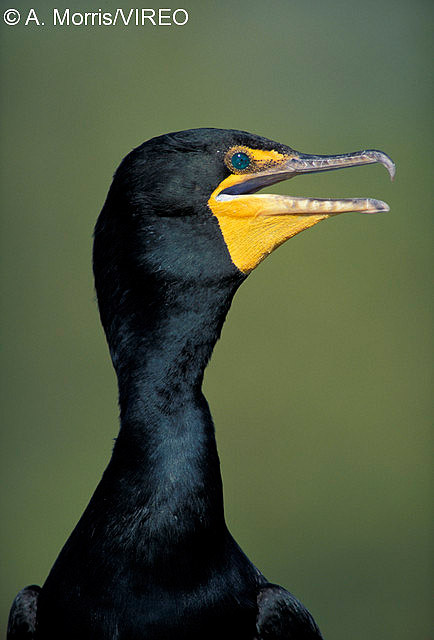
Double-crested Cormorant Phalacrocorax auritus
Hhallux
The first toe, usually pointing backwards
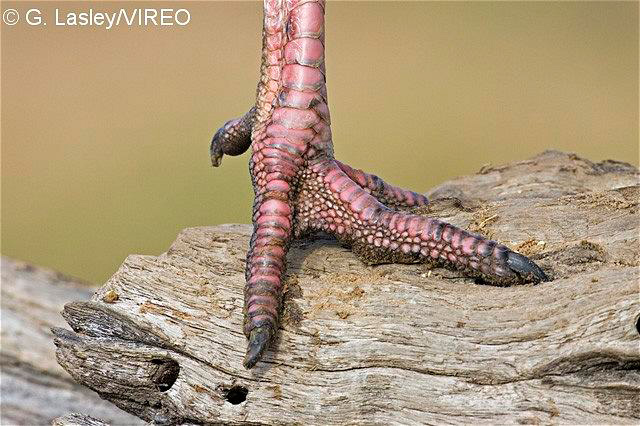
Wild Turkey Meleagris gallopavo
hatch
To emerge from the egg
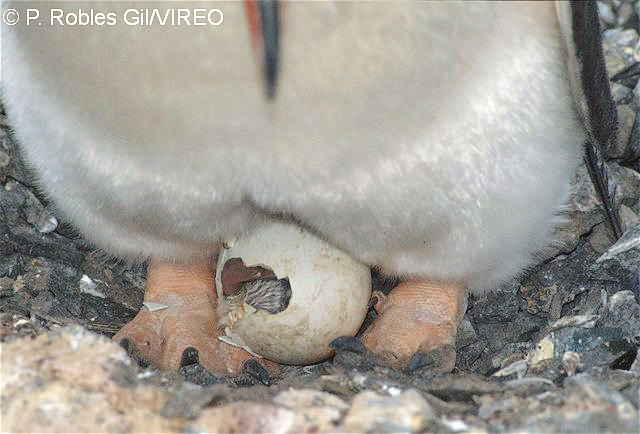
Gentoo Penguin Pygoscelis papua
hatchling
A bird that has just emerged from the egg
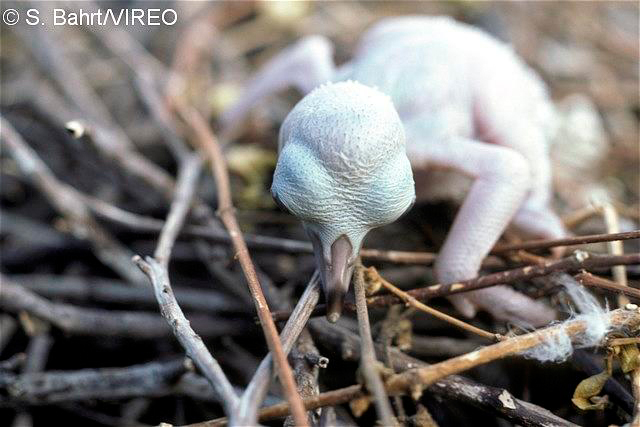
Lesser Frigatebird Fregata ariel
hawking
Feeding by flying out from a perch to snatch prey and returning to that perch
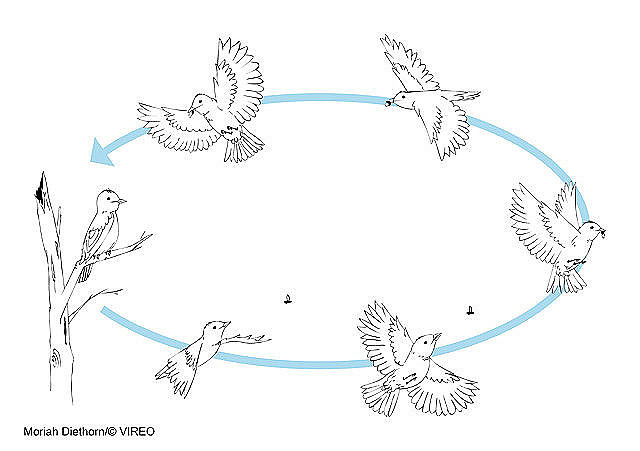
hawking
herbivore
An animal that eats plant material exclusively or almost so
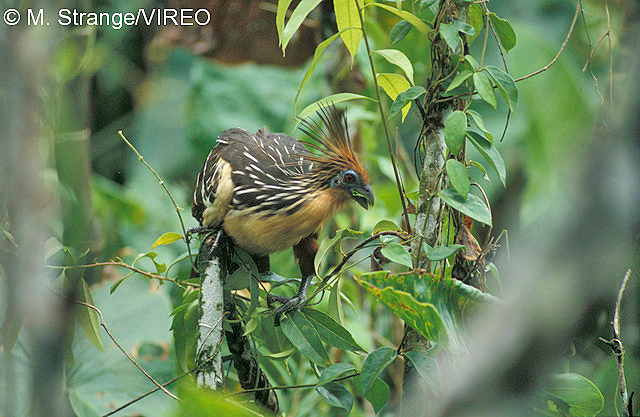
Hoatzin Opisthocomus hoazin
heterodactyl foot
A bird foot in which digits three and four face forward, while the first and second digit face backward. Trogons have this pattern.
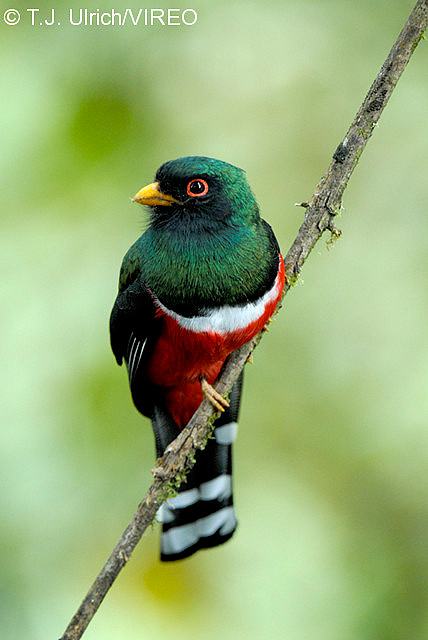
Masked Trogon Trogon personatus
hooklets
Tiny hooks on the barbules of feathers that keep the barbs and barbules from separating
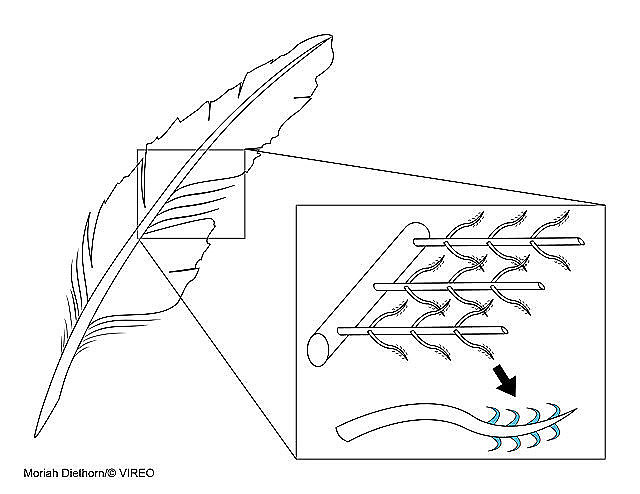
Hooklets
hover
Flying in a stationary position
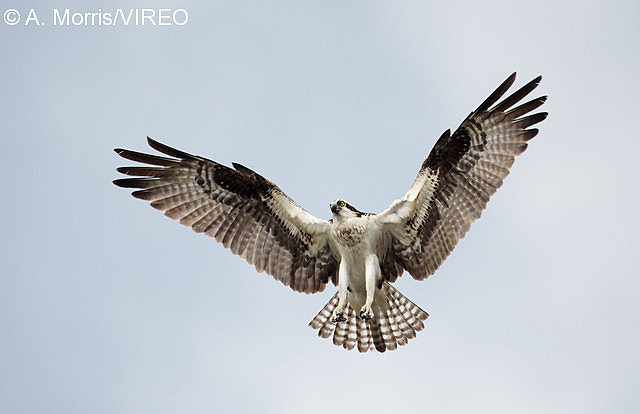
Osprey Pandion haliaetus
humerus
The wing bone closest to the body
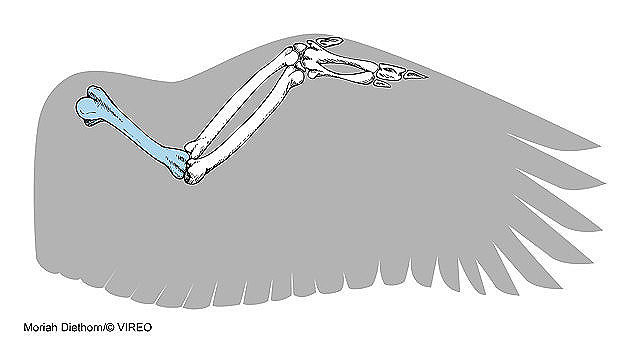
humerus
hybrid
A cross between two different species
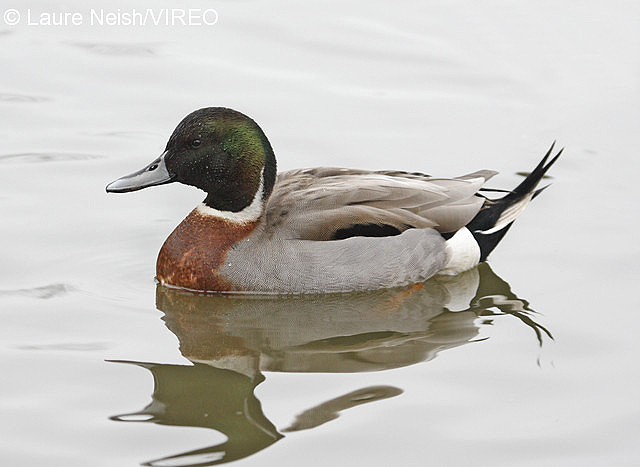
Hybrid Duck Mallard x Pintail A. platyrhynchos x A. acuta
Iilium
The largest and uppermost bone in the pelvic girdle. It is fused with the ischium and synsacrum.girdle.
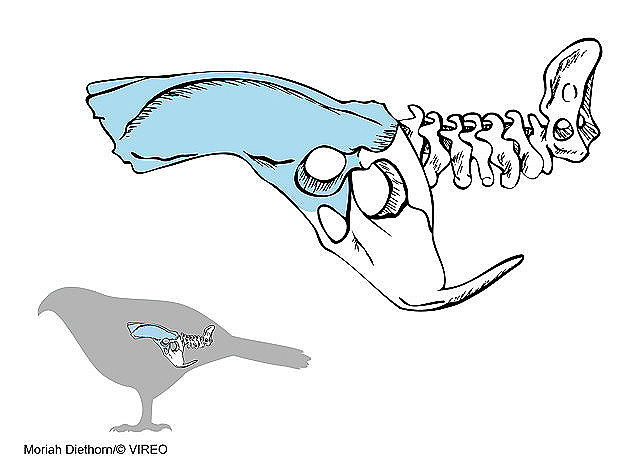
ileum
imprinting
Behaviors that are learned and fixed during a limited critical period in a bird's early life
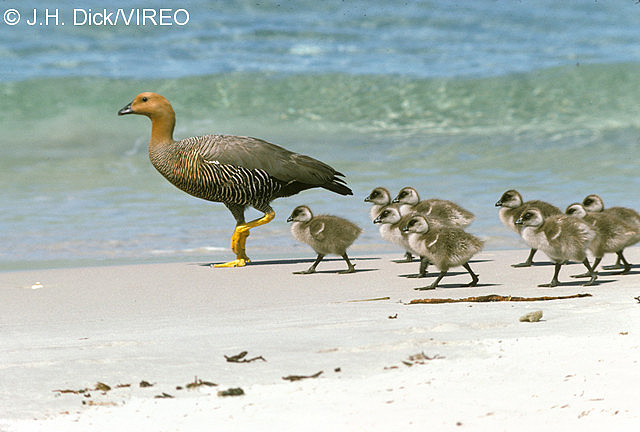
Upland Goose Chloephaga picta
incubation
Maintaining the eggs at a constant temperature ideal for development. Most birds incubate by sitting on the eggs but megapodes incubate in compost or warm sand.
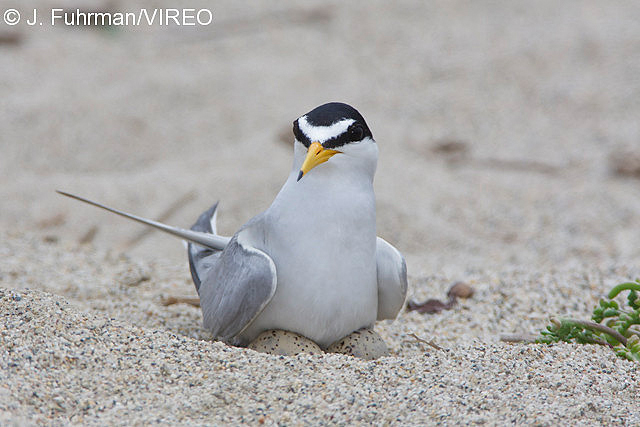
Least Tern Sternula antillarum
infundibulum
The funnel shaped anterior end of the oviduct that accepts the egg during ovulation
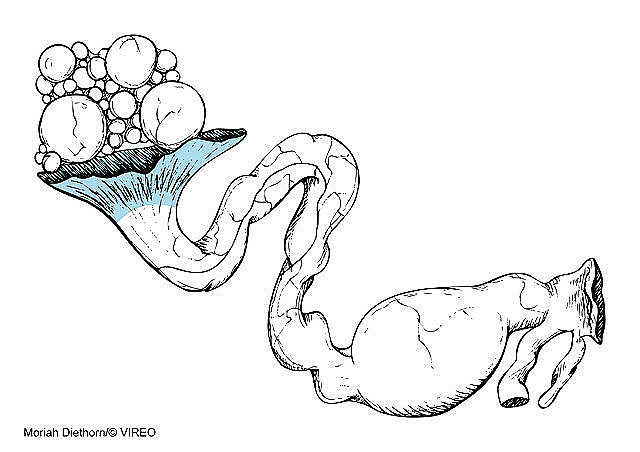
infundibulum
iridescence
Glittering colors that change with the angle of view, caused by structural features of feathers that scatter light. A famiiar example is the feathers on a Rock Pigeon's neck.
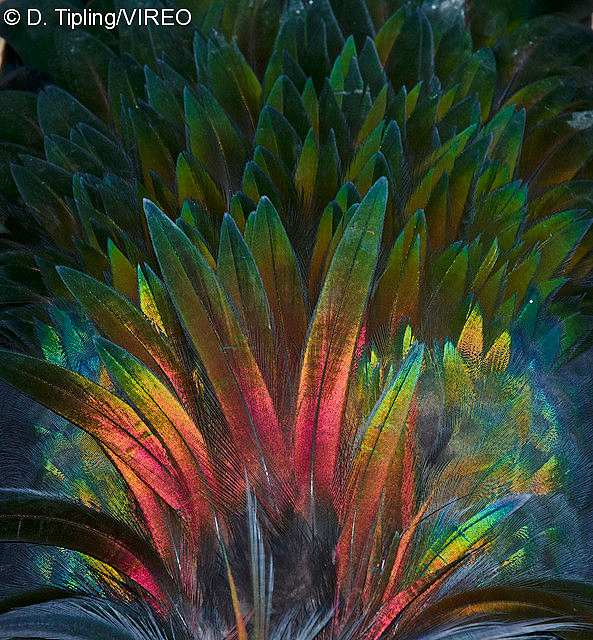
Nicobar Pigeon Caloenas nicobarica
iris
The colored circular diaphragm in the eye that controls the amount of light hitting the retina
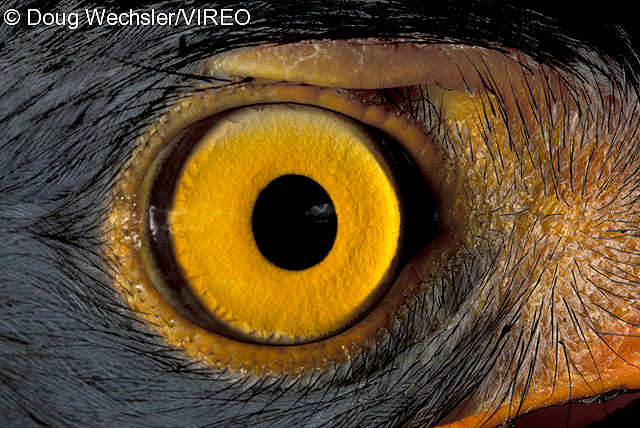
Semiplumbeous Hawk Leucopternis semiplumbeus
ischium
The large pelvic bone posterior to the leg joint and fused with the posterior portion of the synsacrum
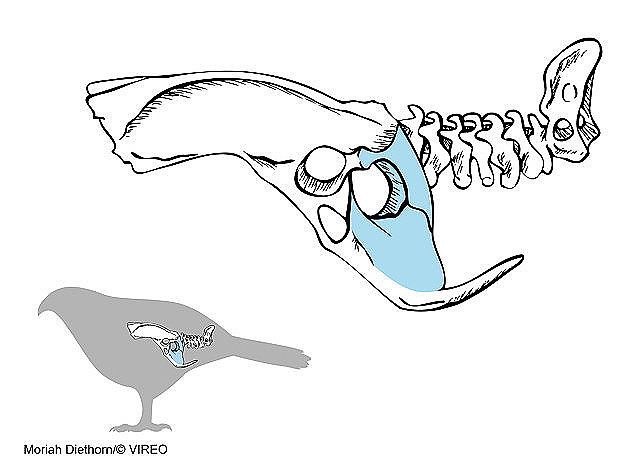
ischium
Jjuvenile
A young bird, usually in the first months after fledging, that has its first set of contour feathers
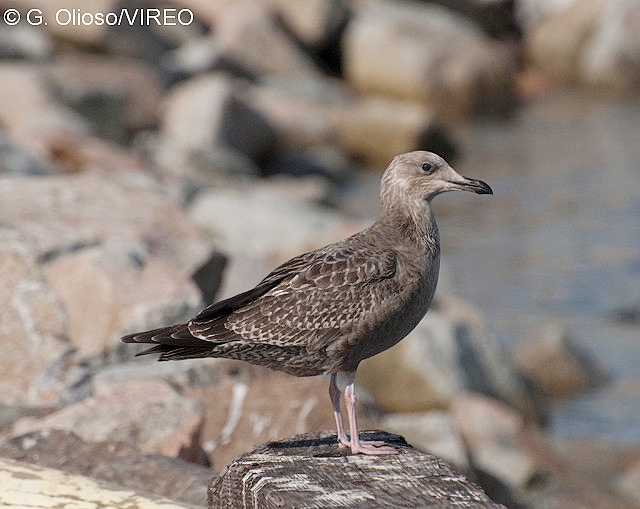
Herring Gull Larus argentatus
Kkeel
A large, flat ridge of bone that extends perpendicularly from the main portion of the sternum The major flight muscles, the pectoralis and the suprcoracoideus, attach to the keel. Also known as carina.
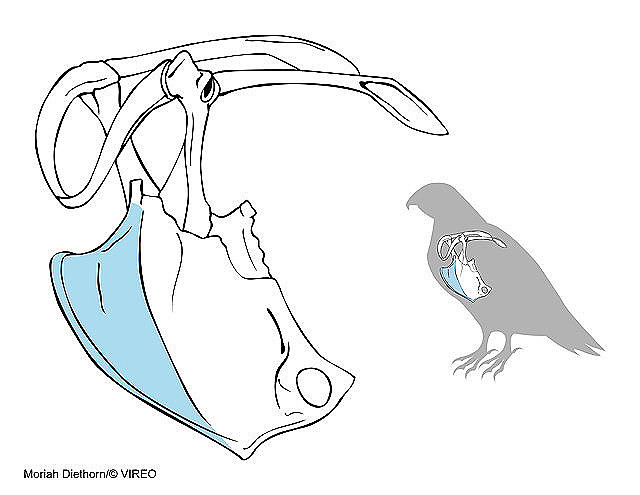
keel
keratin
A fibrous protein that is the chief component of feathers, scales and claws
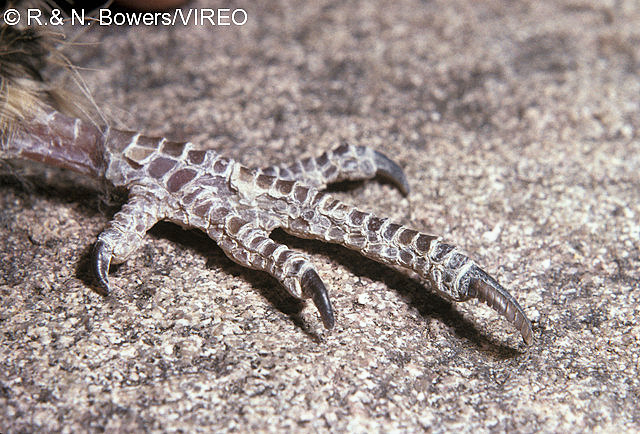
Common Poorwill Phalaenoptilus nuttallii
kettle
A group of rising birds soaring in a spiral motion in a thermal
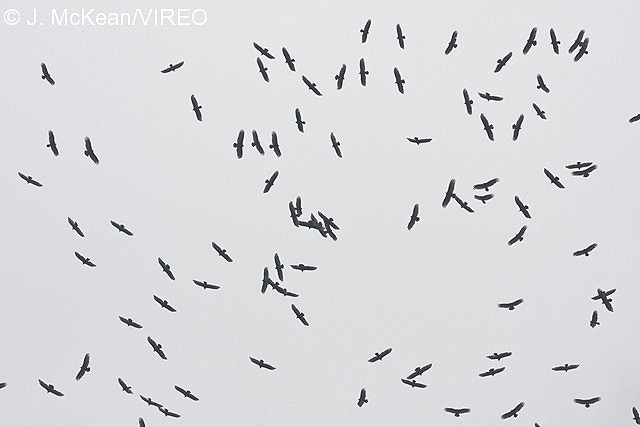
Turkey Vulture Cathartes aura
kleptoparasite
An animal that habitually steals food from another animal
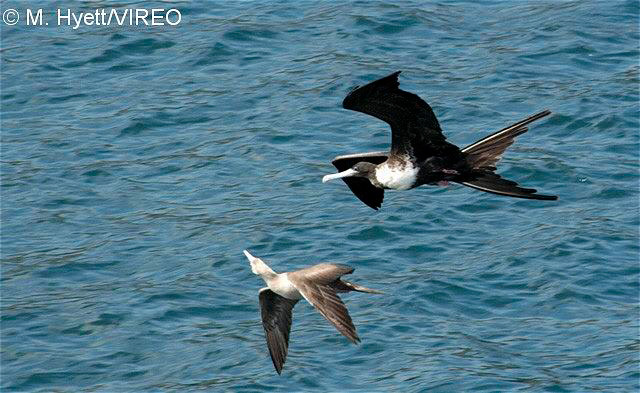
Magnificent Frigatebird Fregata magnificens
Llacrimal gland
The structure at the ventral side of the eye that secretes tears
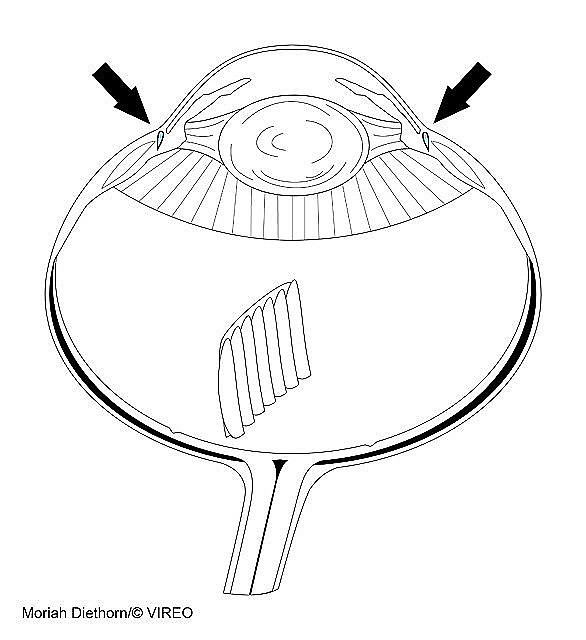
lacrimal glands
laminar flow
Smooth flow of air over the surface of the wing
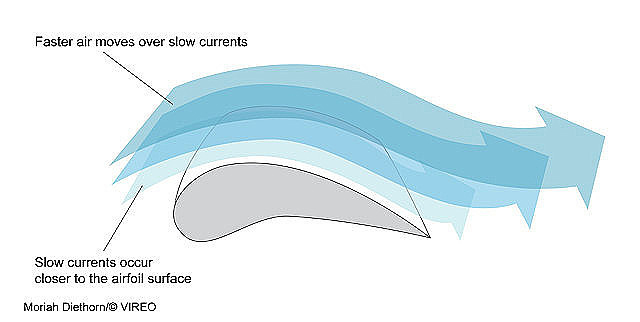
laminar flow
lek
A communal display ground for promiscuous male birds
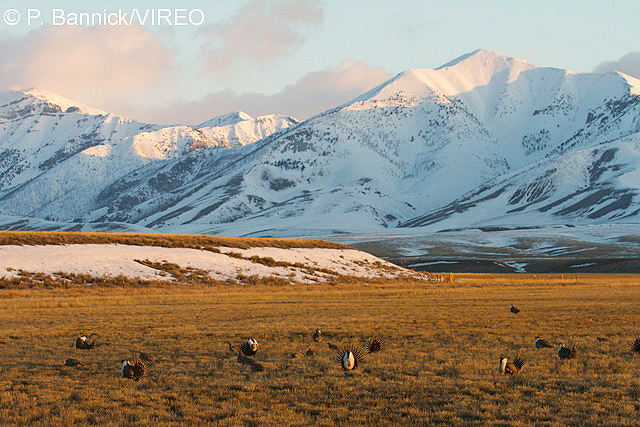
Greater Sage-Grouse Centrocercus urophasianus
lens
The hard, transparent area inside the eye that focuses light
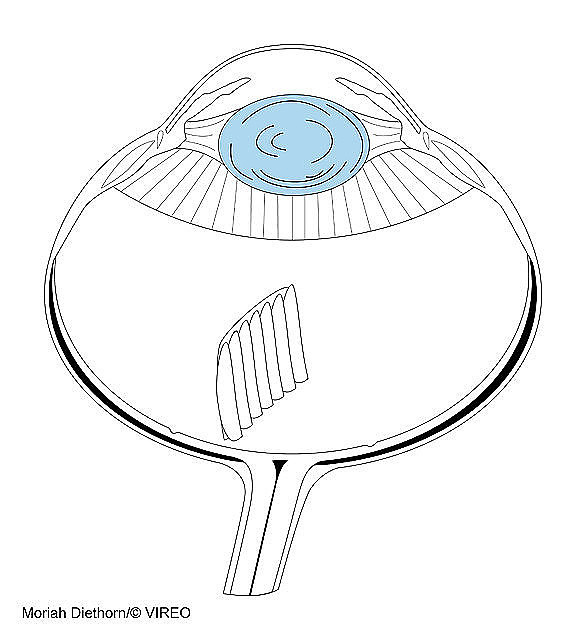
lens
lesser coverts
The rows of feathers on the wing immediately over the greater coverts
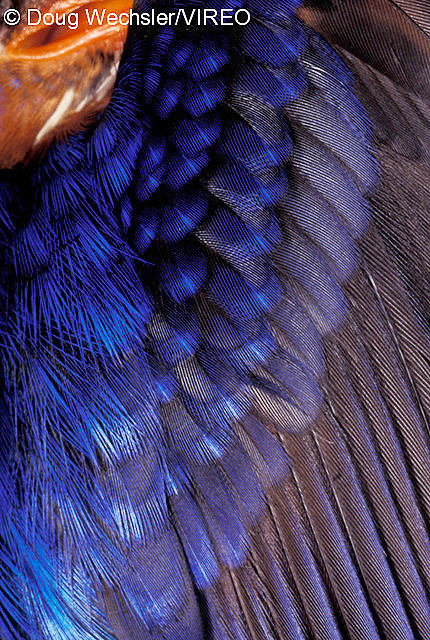
African Pygmy Kingfisher Ispidina picta
lore
The area between the eye and the beak--chartreuse on this breeding Great Egret
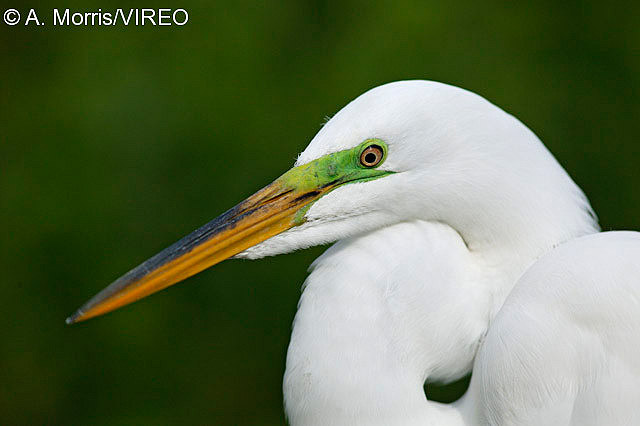
Great Egret Ardea alba
Mmalar region
The lower part of the face extending behind the lower beak, seen here in black on this Northern Flicker
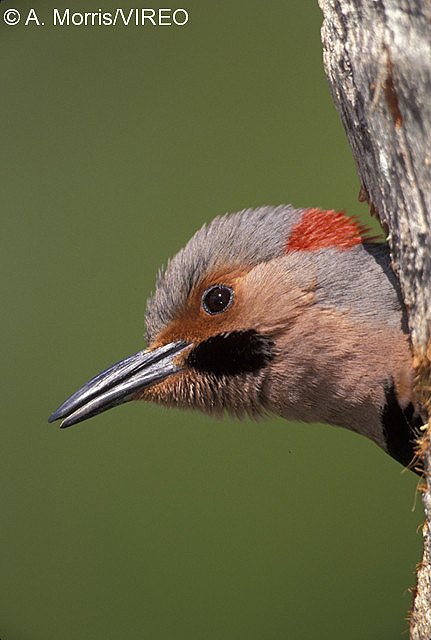
Northern Flicker Colaptes auratus
mandible
The lower half of the beak
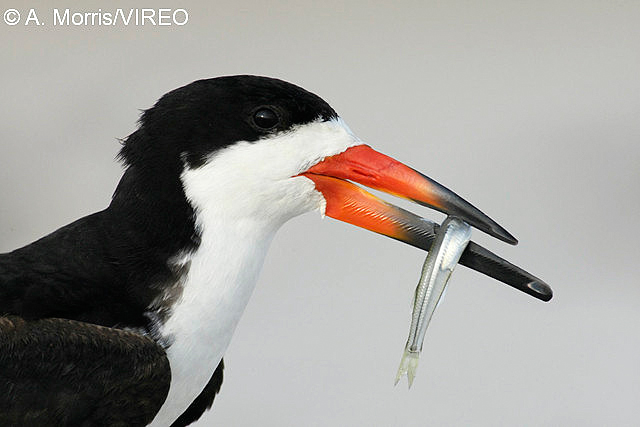
Black Skimmer Rynchops niger
melanism
Darkening of pigmented feathers due to extra melanin (a class of pigments) , in this case making a normally white Cattle Egret, blackish
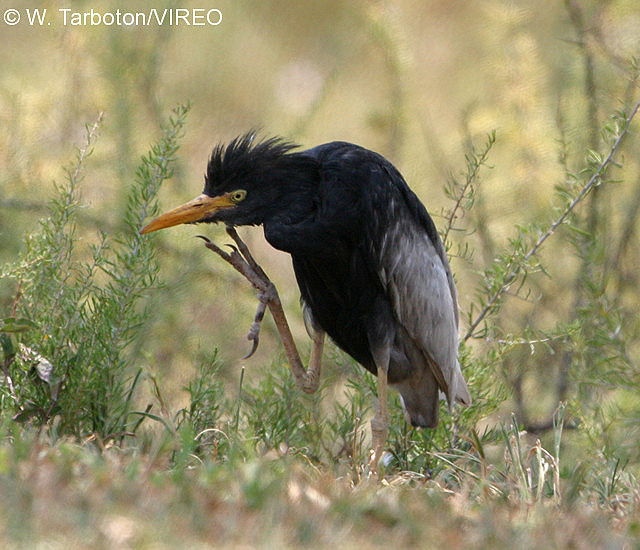
Cattle Egret Bubulcus ibis
mesobronchus
The extension of the bronchus inside the lungs leading to the abdominal air sacs
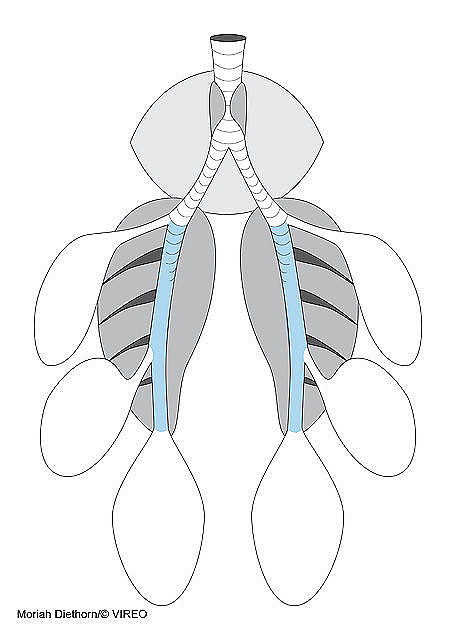
mesobronchi
metacarpals
The three bones that fuse to form the carpometacarpus distal to the humerus
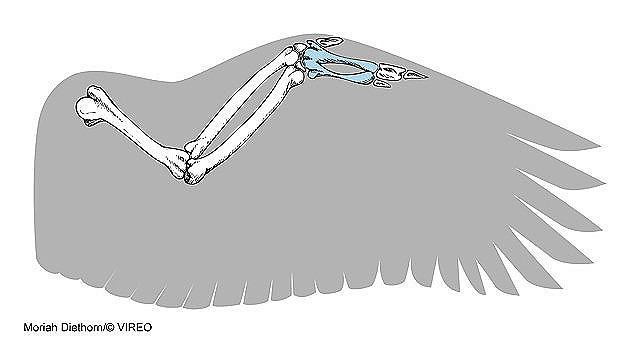
metacarpal
migration
Seasonal movement of birds from one area to another
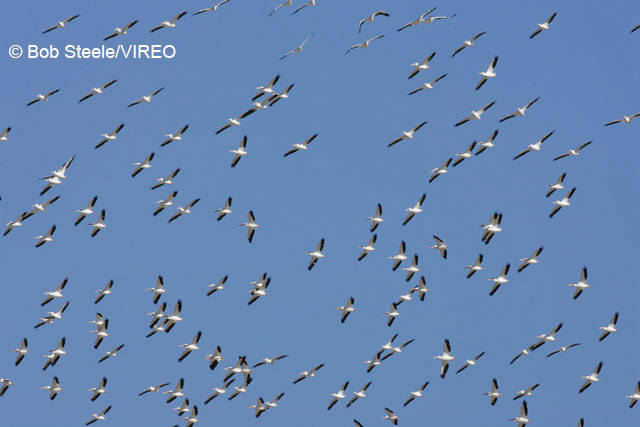
American White Pelican Pelecanus erythrorhynchos
mimicry
In birds, most often used for vocal mimicry, in which one species imitates the vocalizations of another. Mockingbirds are "open-ended" learners and can add new songs to their repetoire thoughout their life.
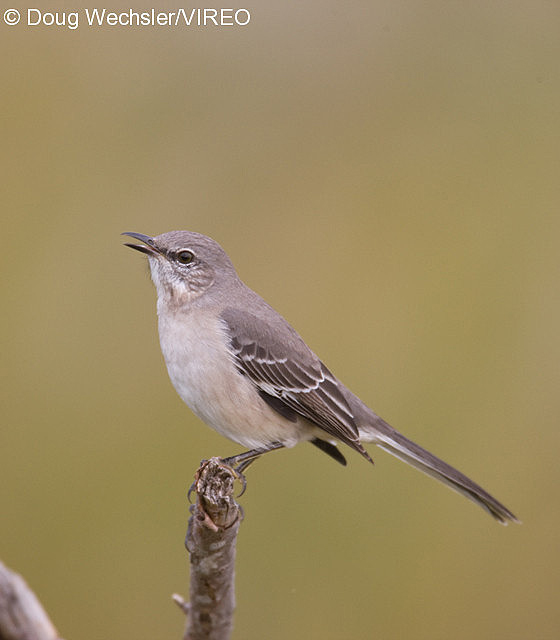
Northern Mockingbird Mimus polyglottos
molt
Periodic loss and regrowth of feathers. This Ring-billed Gull shows wing molt.
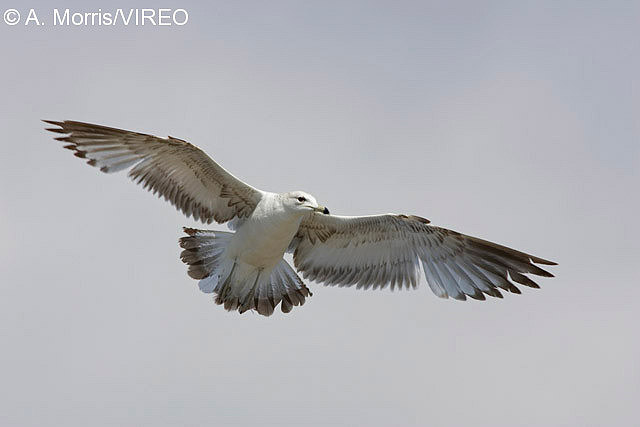
Ring-billed Gull Larus delawarensis
monocular vision
Sight in which each eye is used separately with little overlap in the field of view of each eye
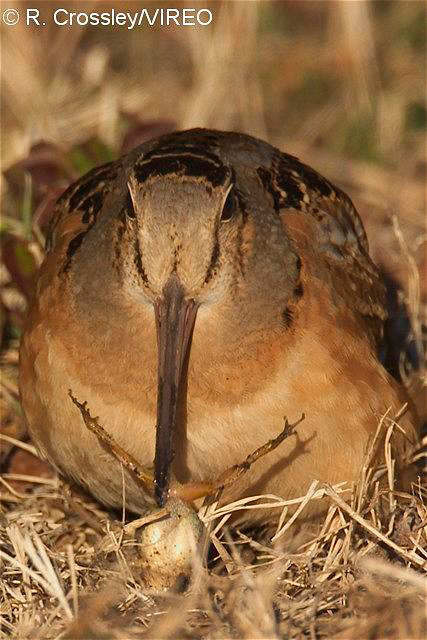
American Woodcock Scolopax minor
monogamy
Maintaining a single mate, at least for the duration of nesting
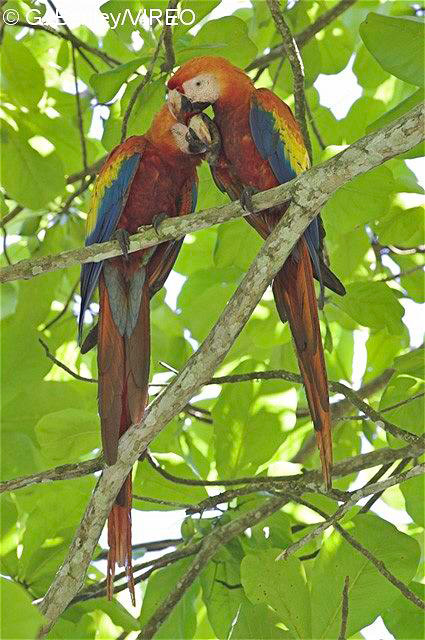
Scarlet Macaw Ara macao
morph
Groups of birds that differ in body size, bill shape, color or other features from other groups of birds of the same species. The two color morphs of Reddish egrets shown here.
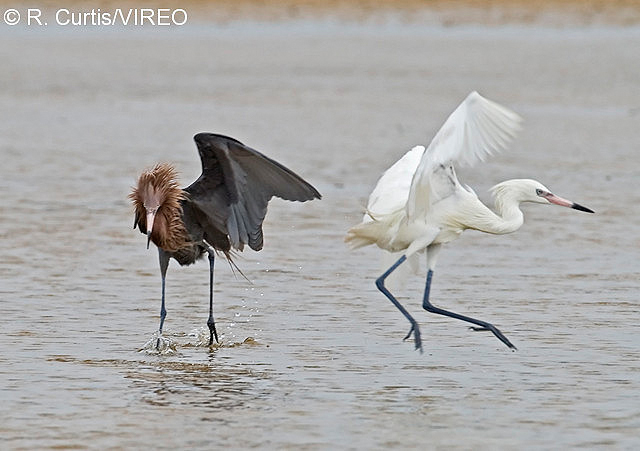
Reddish Egret Egretta rufescens
mound nest
A nest made from a heap of sand, sticks or other material with an egg chamber inside, particularly those of the moundbuilders
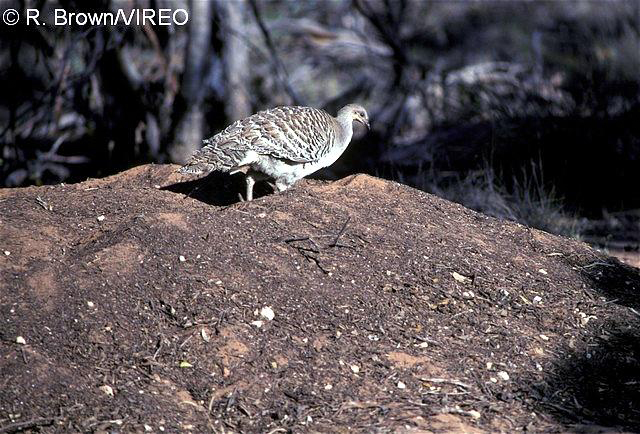
Mallee Fowl Leipoa ocellata
mycoplasmal conjunctivitis
A disease, most commonly observed in House Finches, in which the eye is swollen, crusty and sometimes shut
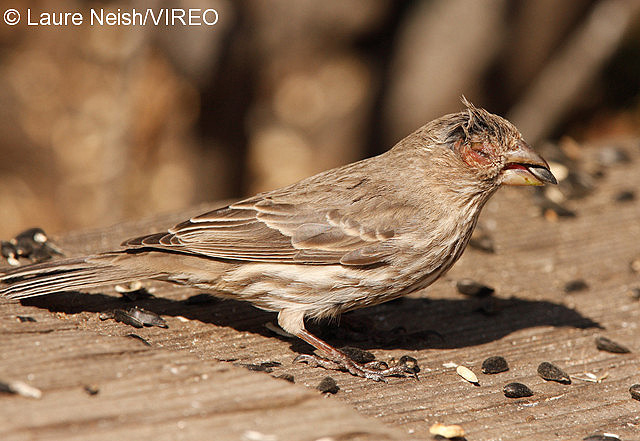
House Finch Haemorhous mexicanus
Nnape
The region at the back of the neck
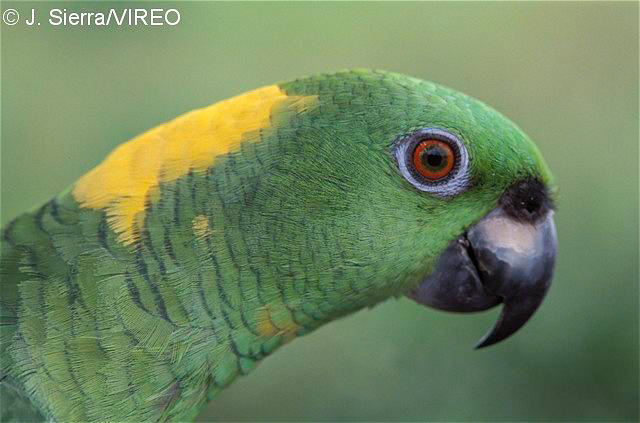
Yellow-naped Parrot Amazona auropalliata
nares
The external openings of the nose
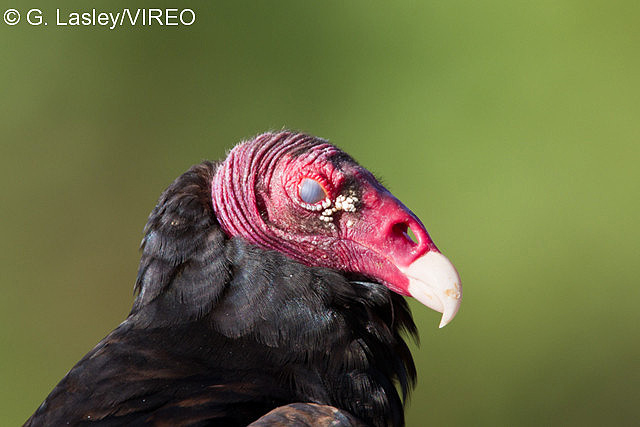
Turkey Vulture Cathartes aura
natal down
Loose, fluffy feathers of young birds prior to developing contour feathers
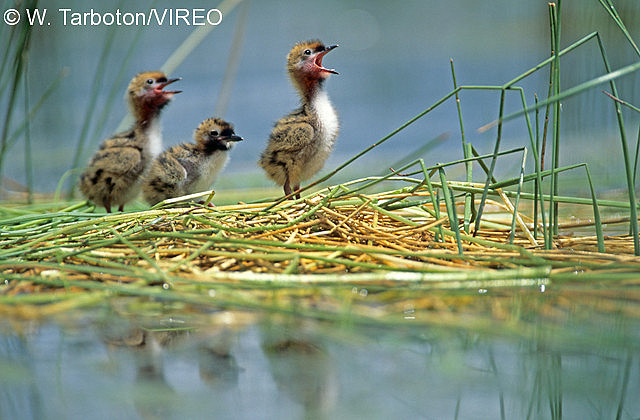
Whiskered Tern Chlidonias hybrida
nest
The structure in which a bird lays and incubates its eggs
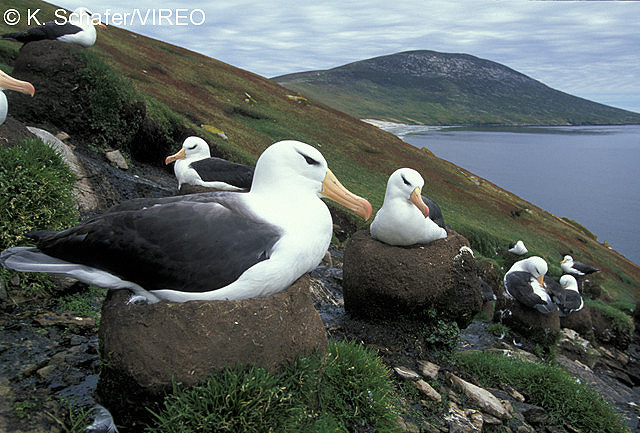
Black-browed Albatross Thalassarche melanophris
nest appropriation
Using the nest of another bird, typically after the other bird has ceased to use it. This horned owl has appropriated a hawk nest.
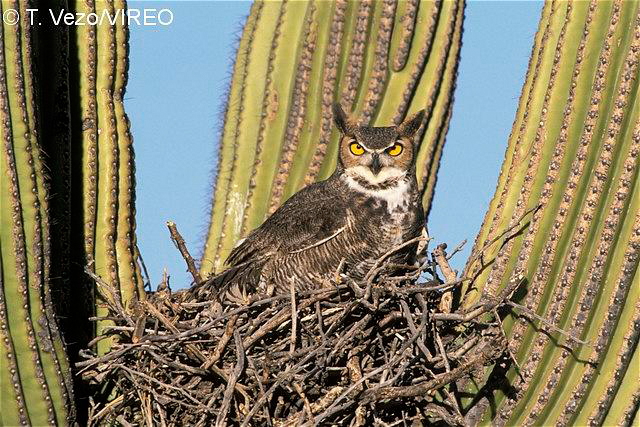
Great Horned Owl Bubo virginianus
nictitating membrane
A transparent membrane that slides sideways over the eye, moistening or protecting it
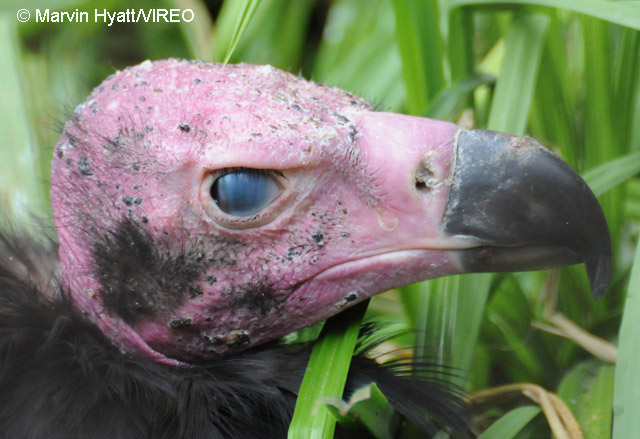
Red-headed Vulture Sarcogyps calvus
nidifugous
Leaving the nest shortly after hatching
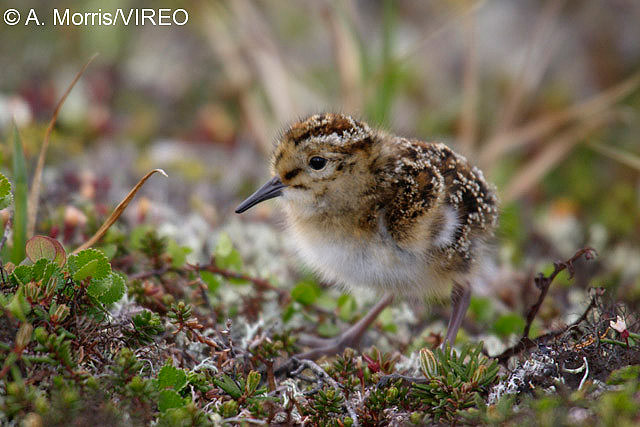
Dunlin Calidris alpina
nocturnal
Active at night
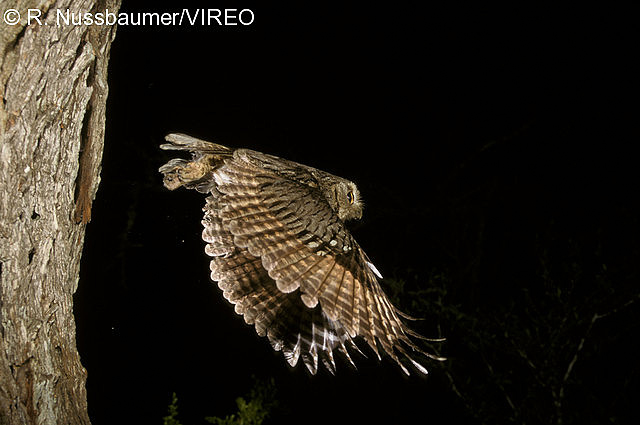
Eastern Screech-Owl Megascops asio
Ooil gland
A sebaceous gland near the dorsal base of the tail that produces oil for preening, also known as uropygial gland or preen gland
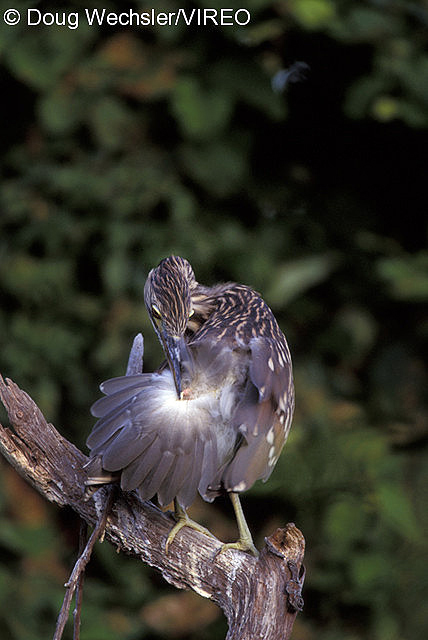
Black-crowned Night-Heron Nycticorax nycticorax
omnivore
An animal that eats both plant and animal material
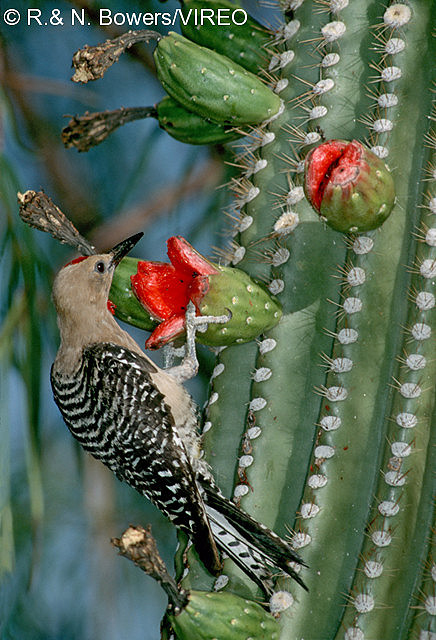
Gila Woodpecker Melanerpes uropygialis
operculum
A structure that covers the nares in some birds
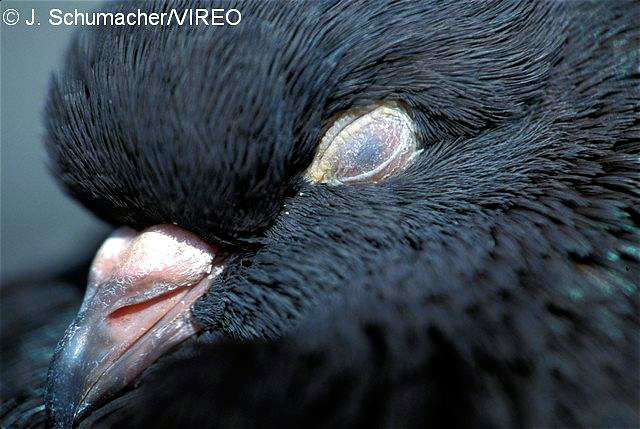
Rock Pigeon Columba livia
oral flanges
See gape flanges
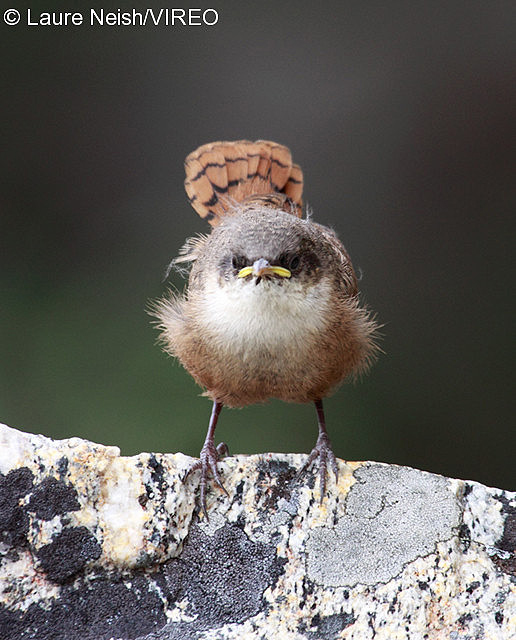
Canyon Wren Catherpes mexicanus
oviduct
The long, convoluted tube through which the egg passes from ovary to cloaca. Albumin, membranes and egg shell are added in the oviduct.
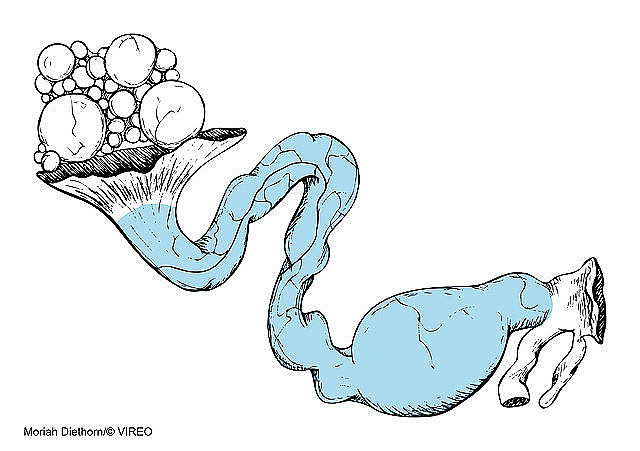
oviduct
Ppamprodactyl feet
Feet with toes all arranged in a forward orientation, as in some swifts
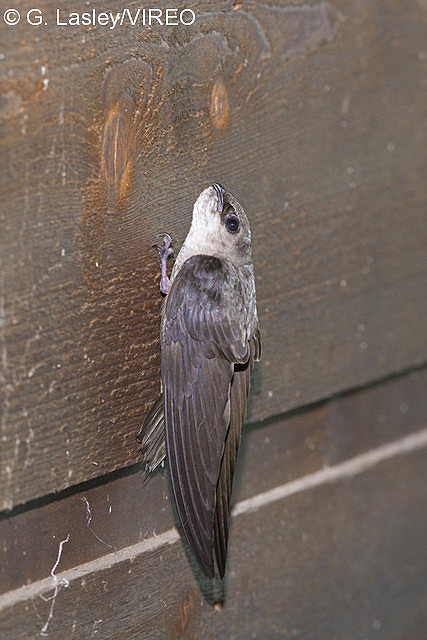
Chimney Swift Chaetura pelagica
pecten
A comb-shaped structure of blood vessels inside the avian eye extending out from the optic nerve. It is thought to nourish the retina and control the ph of the vitreous humor.
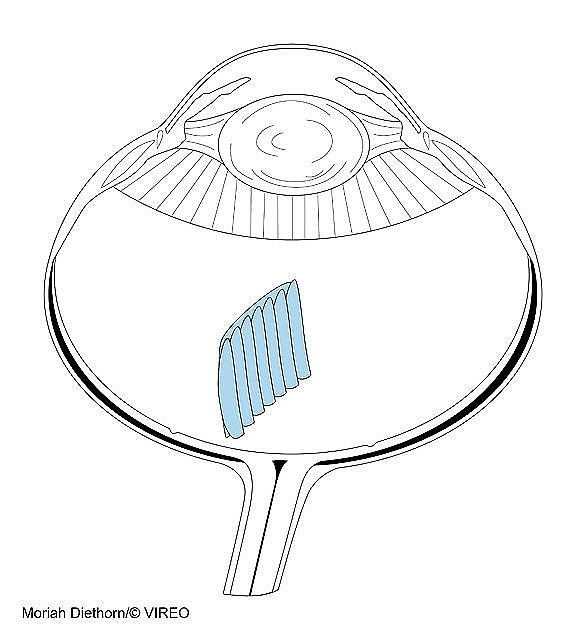
pecten
pectinate claw
A claw with a comb-like edge found in heron family and in nightjars and Barn Owls. It is presumably used for preening.
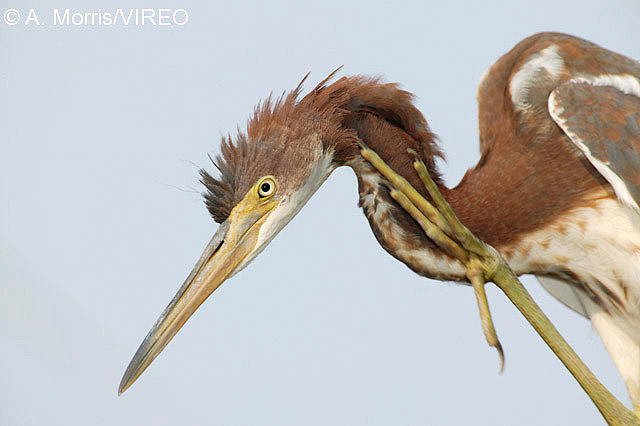
Tricolored Heron Egretta tricolor
pectoral girdle
The bones connecting the wing with the main part of the skeleton. It consists of the furcula, scapulas , coracoids , and sternum.
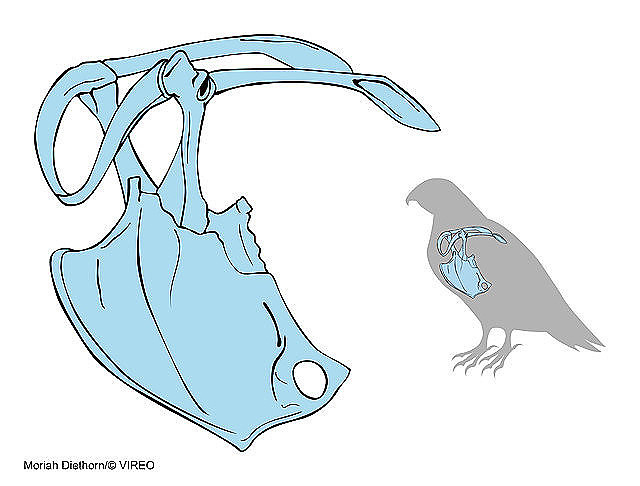
pectoral girdle
pectoralis
The large breast muscle that powers the downstroke of flight by depressing the wing at the shoulder
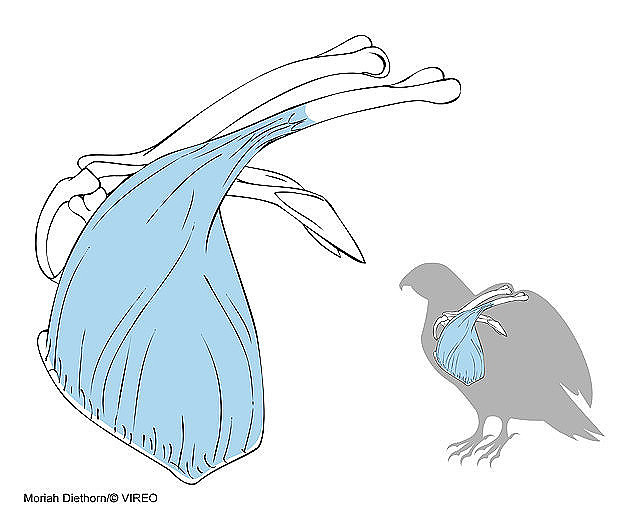
pectoralis major
pelagic species
A bird that spends its life on the open ocean. Pelagic birds typically only coming to land to breed.
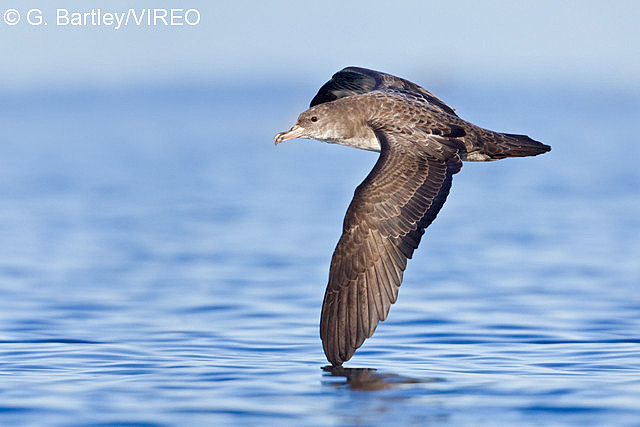
Pink-footed Shearwater Puffinus creatopus
pellet
The regurgitated bolus of indigestible prey parts expelled by owls, kingfishers and other birds
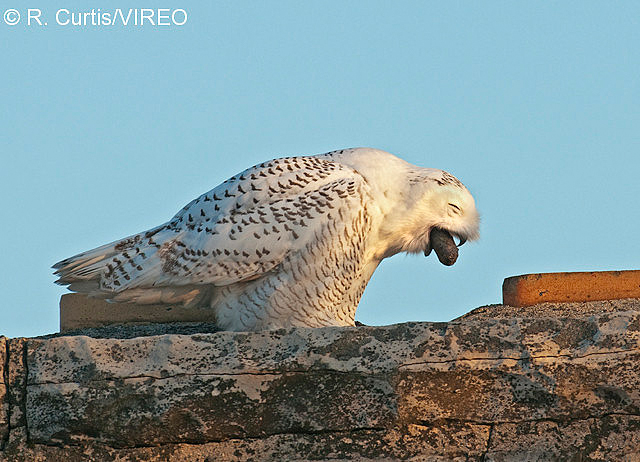
Snowy Owl Bubo scandiacus
pelvic girdle
The fused ilium, ischium, , pubis, and fused sacral vertebrae. Together they form an anchor for the tail and leg muscles.
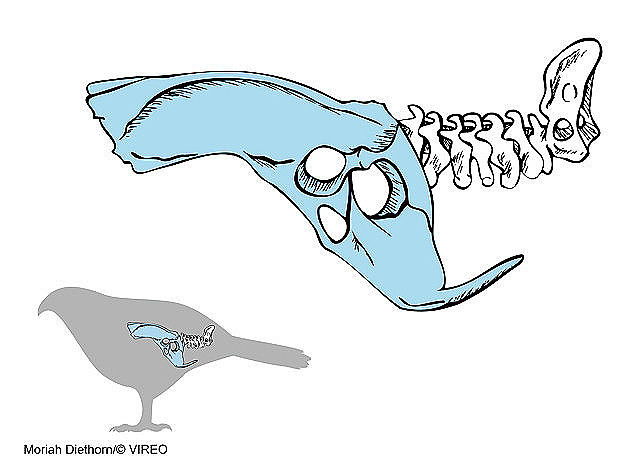
pelvic girdle
pendulous cup nest
A sock-shaped nest suspended from twigs, especially by orioles, oropendolas, and caciques.
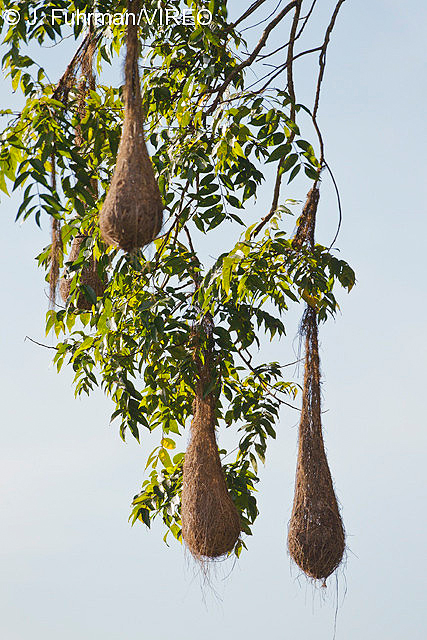
Crested Oropendola Psarocolius decumanus
pensile cup nest
A cuplike nest suspending by the rim typical of vireos, some blackbirds, and kinglets.
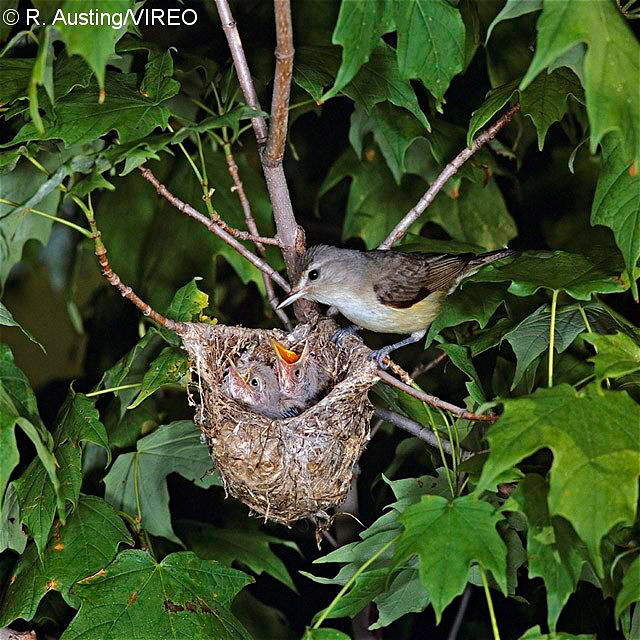
Warbling Vireo Vireo gilvus
phalanges
The finger bones--reduced in birds.
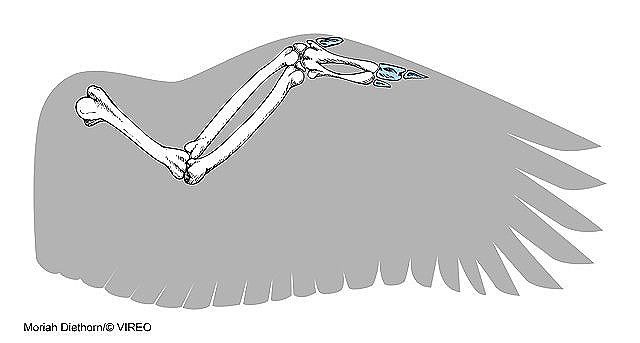
phalanges
pigments
Chemical compounds that absorb light of specific wavelengths giving feathers and soft parts their colors.
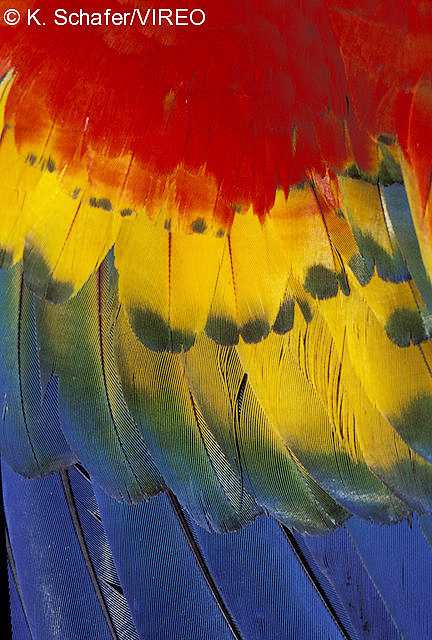
Scarlet Macaw Ara macao
pin feathers
Growing feathers still covered by the feather sheath
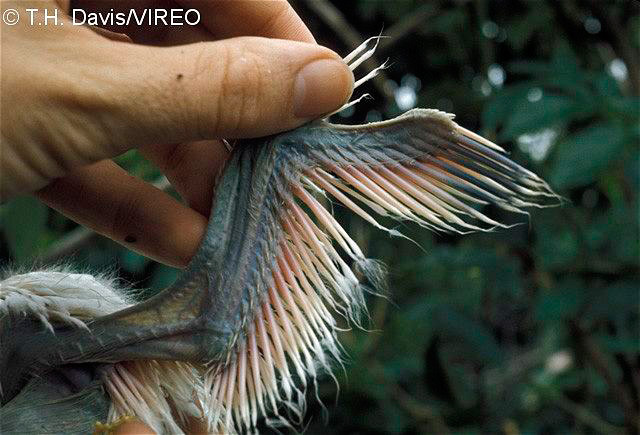
Little Blue Heron Egretta caerulea
pipped
Describing an egg that has a small hole made by a chick about to hatch
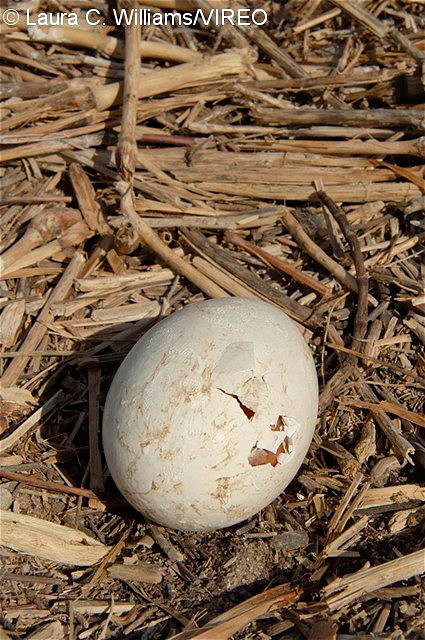
American White Pelican Pelecanus erythrorhynchos
piracy
Stealing food from other birds, typically from other species
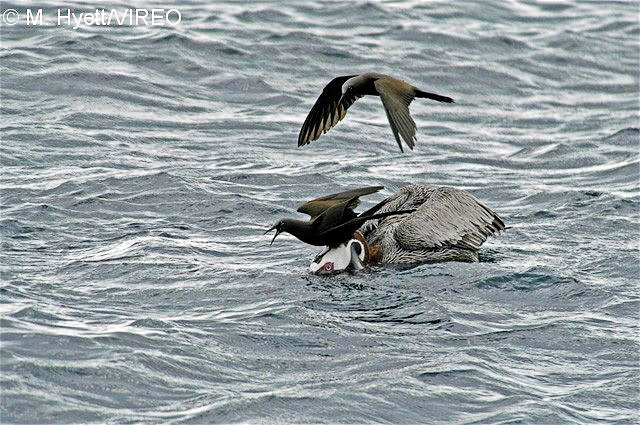
Brown Noddy Anous stolidus
platform nest
Nests built of sticks piled on each other with a low depression for the eggs
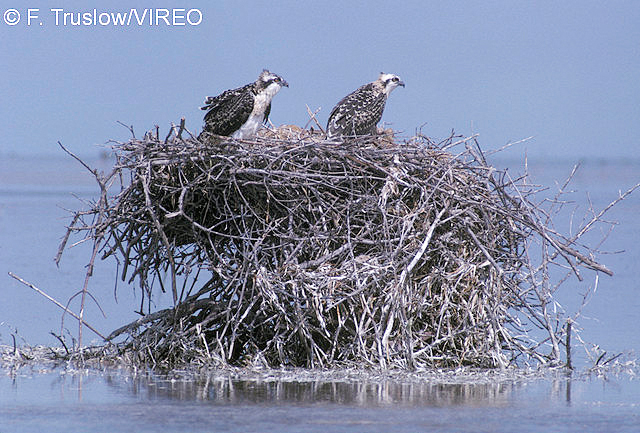
Osprey Pandion haliaetus
plumage
The set of feathers that cover a bird, or a seasonal or age-related pattern of the feathers
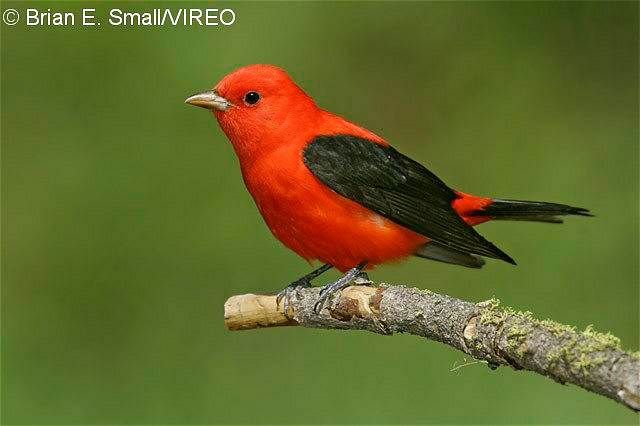
Scarlet Tanager Piranga olivacea
plunge diving
Diving from the air into water after prey using momentum to overcome buoyancy. Typical of pelicans, boobies, gannets, and most terns.
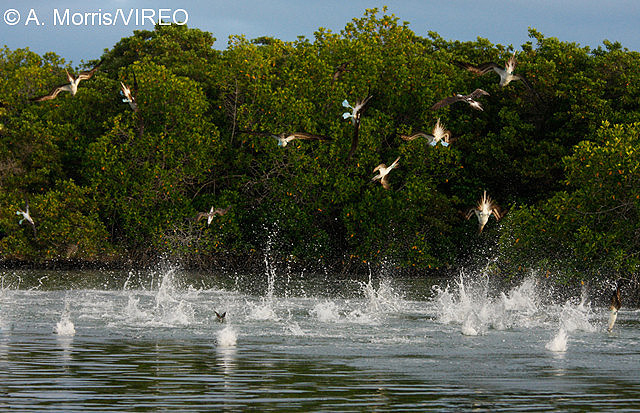
Blue-footed Booby Sula nebouxii
pneumatic bones
Hollow bones containing extensions of air sacs. Their light weight makes them an important adaptation for flight.
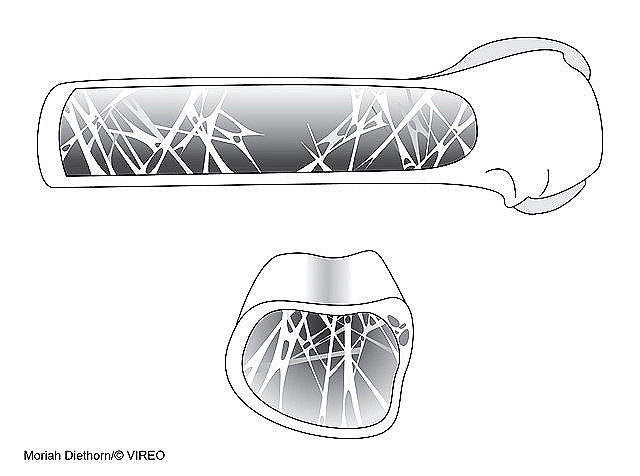
pneumatic bones
polyandry
A form of polygamy in which a female has more than one male mate at a time
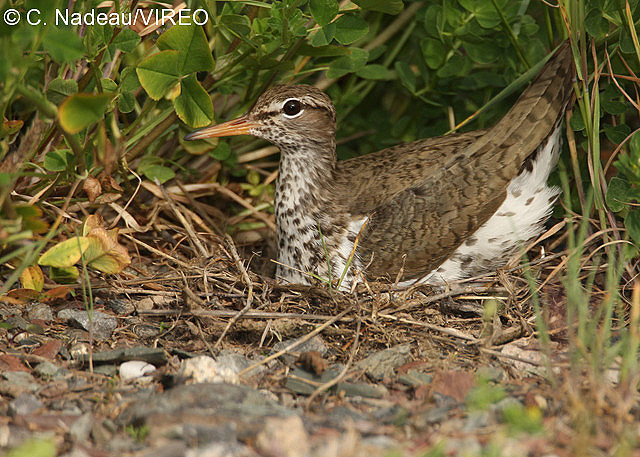
Spotted Sandpiper Actitis macularia
polygamy
A breeding system in which a member of one sex takes multiple mates of the opposite sex
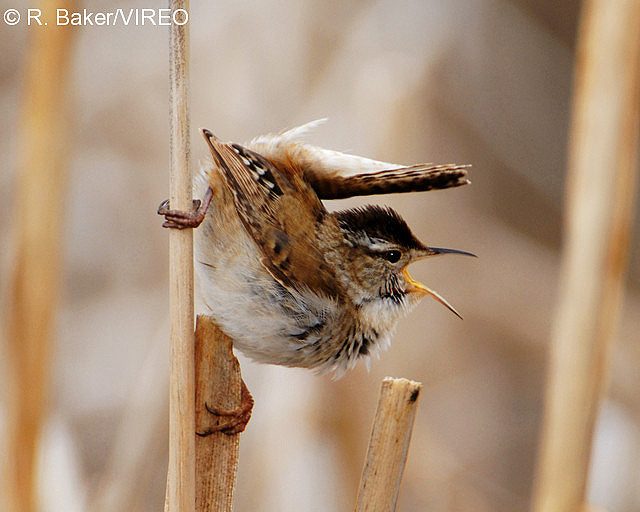
Marsh Wren Cistothorus palustris
polygyny
Mating system in which each male may mate with multiple females
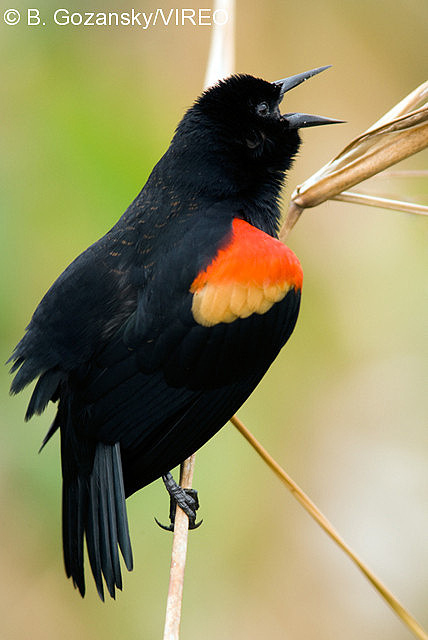
Red-winged Blackbird Agelaius phoeniceus
polymorphism
Two or more different forms (at the same life stage) in the same species, such as two distinct color variations or morphs
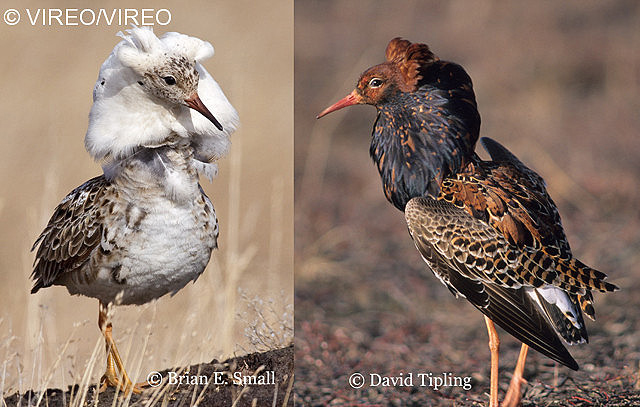
Ruff Philomachus pugnax
porphyrins
A group of pigments responsible for certain brown and green feather coloration and in one case magenta
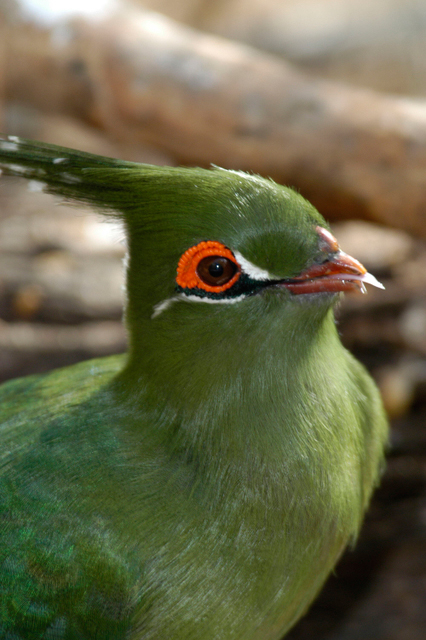
Schalow's Turaco Tauraco schalowi
precocial
Baby birds hatched with down and with eyes open, ready to leave the nest
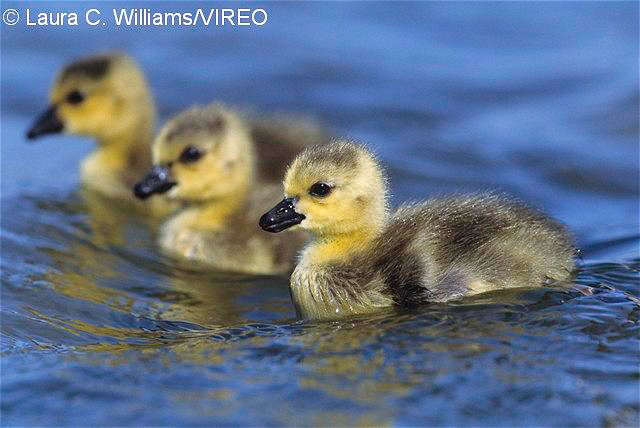
Canada Goose Branta canadensis
precopulatory display
Ritualized postures and vocalizations uniquely performed prior to copulation
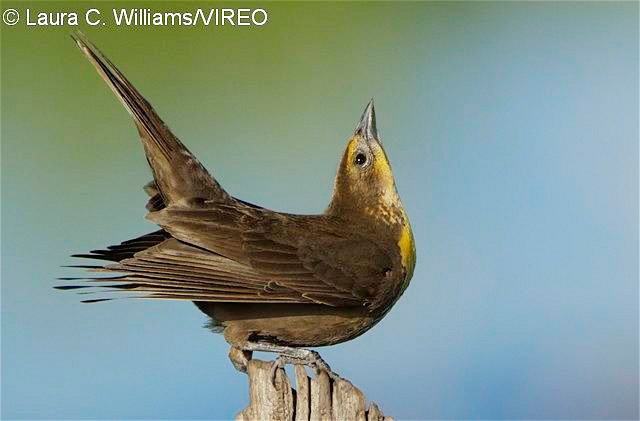
Yellow-headed Blackbird Xanthocephalus xanthocephalus
preening
Cleaning and arranging the feathers typically with the beak
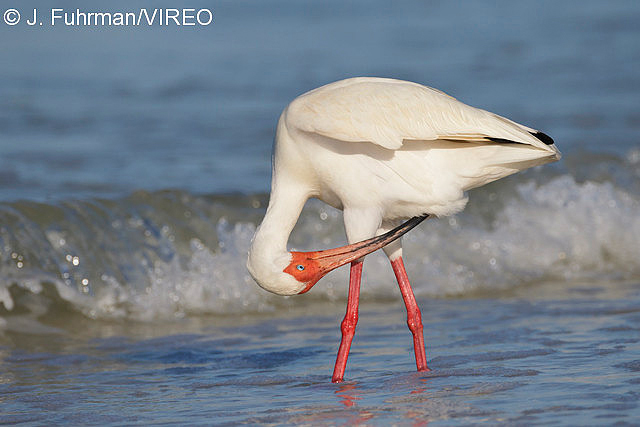
White Ibis Eudocimus albus
premaxilla
The main bone of the upper half of the beak
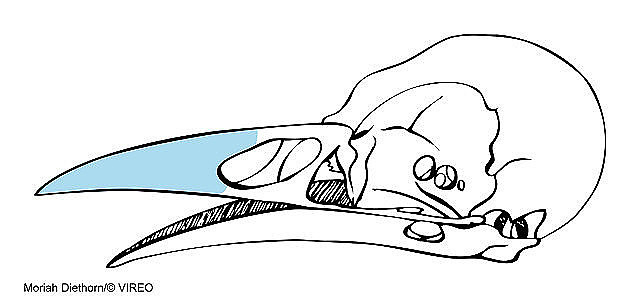
premaxilla
primaries
Flight feathers attached to the outermost segment of the wing. In the Palm Nut Vulture they have white bases.
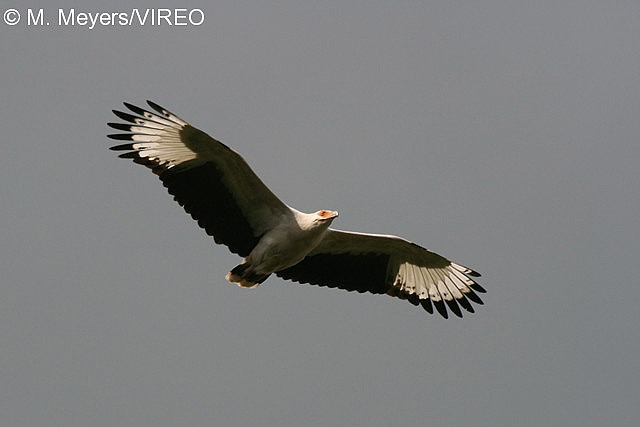
Palm-nut Vulture Gypohierax angolensis
promiscuous
Describing a species in which one sex breeds with multiple mates
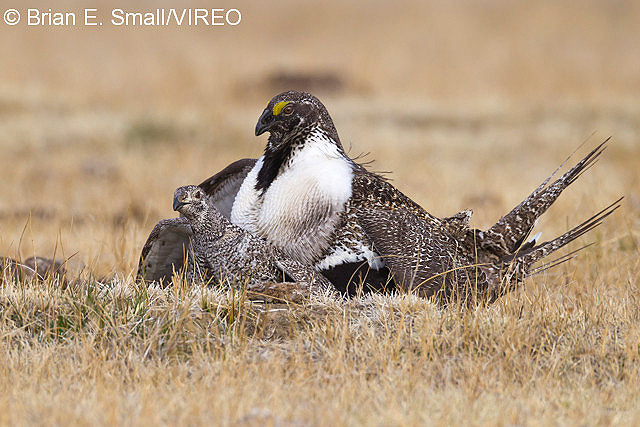
Greater Sage-Grouse Centrocercus urophasianus
proventriculus
The glandular chamber of the avian stomach between the esophagus and the gizzard
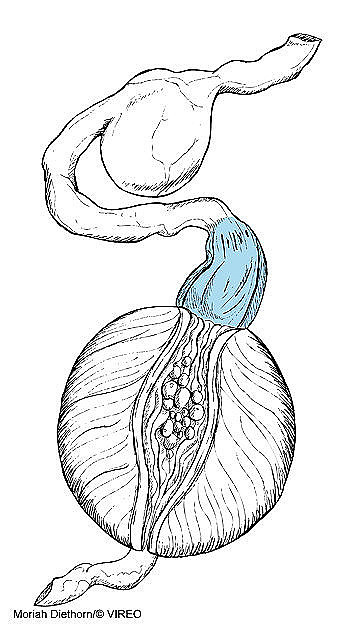
proventriculus
pupil
The opening in the center of the eye, through which light passes
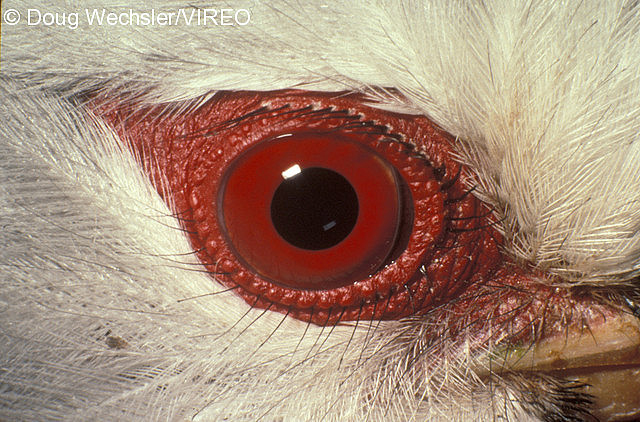
Scale-feathered Cuckoo Lepidogrammus cumingi
pygostyle
The last bone at the posterior end of the vertebral column, which supports the tail feathers and related musculature. It is formed by several fused vertebrae.
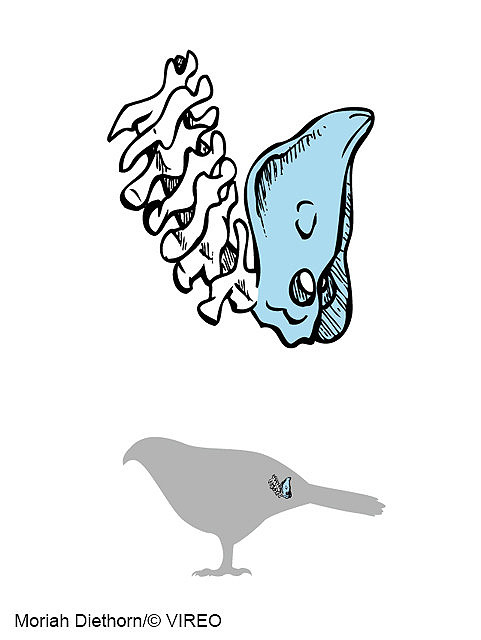
pygostyle
Qrachis
The outer portion of the shaft (central support) of the feather that supports the vanes
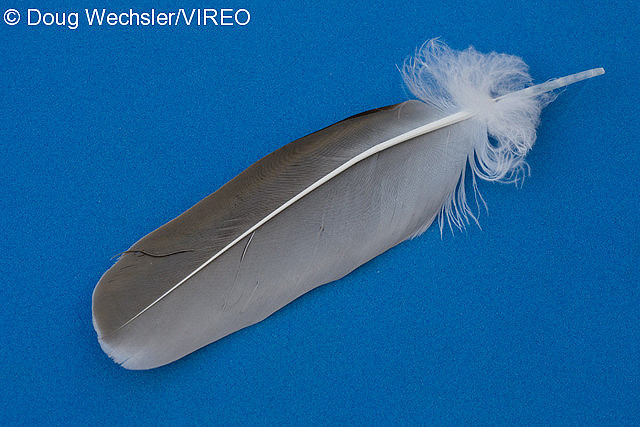
Canada Goose Branta canadensis
radius
The smaller of paired bones in the middle section of the wing
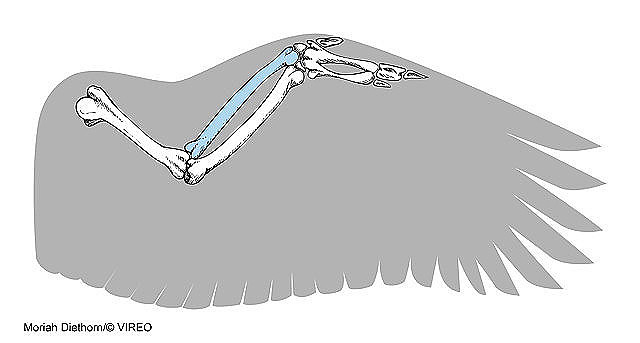
radius
recurved
Curved upwards, as in the beak of an avocet
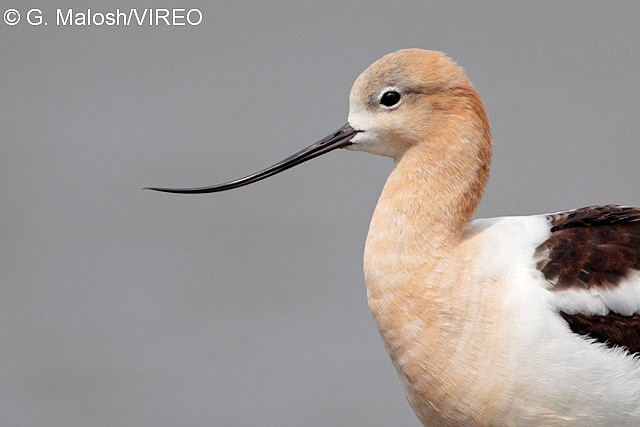
American Avocet Recurvirostra americana
remiges
The flight feathers of the wing -- the primaries and secondaries combined
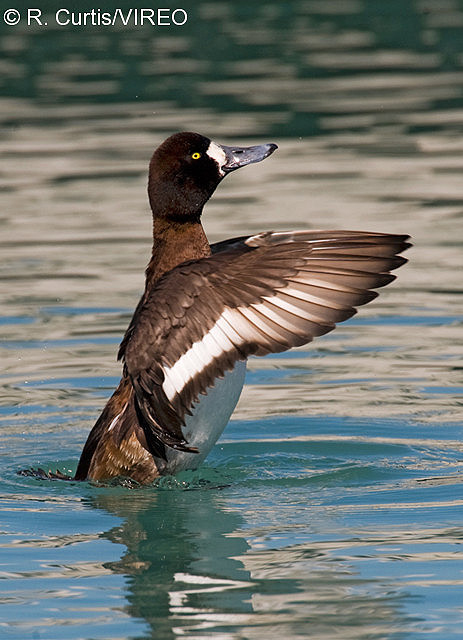
Greater Scaup Aythya marila
retort nest
A globular nest with an entrance tunnel
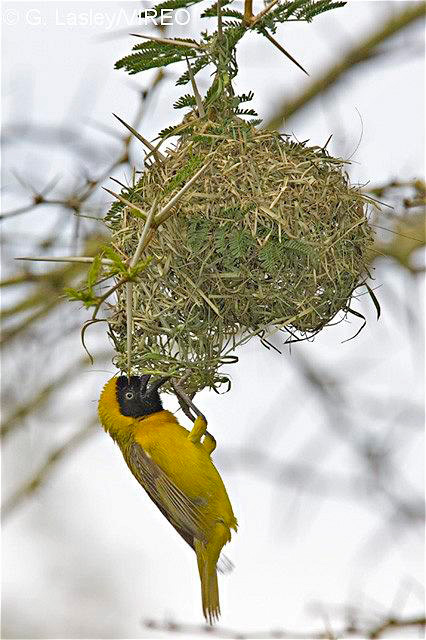
Lesser Masked Weaver Ploceus intermedius
retrices
The major feathers of the tail
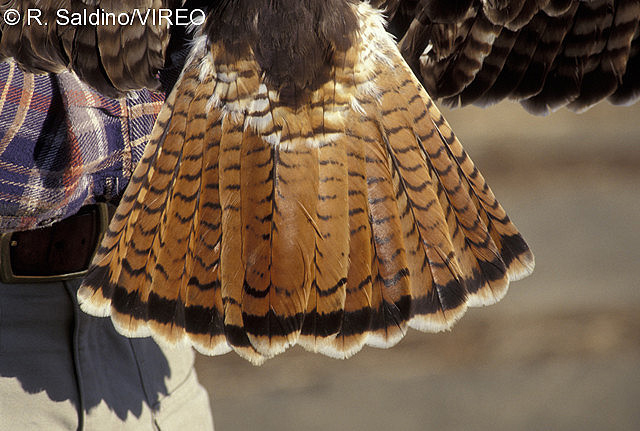
Red-tailed Hawk Buteo jamaicensis
rhamphotheca
A horny sheath of keratin that covers the beak
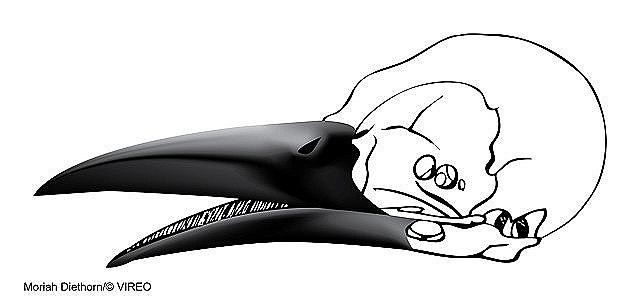
rhampotheca
rictal bristles
Stiff whisker-like feathers around the gape, most commonly found in aerial feeders, which presumably help to guide food into the mouth
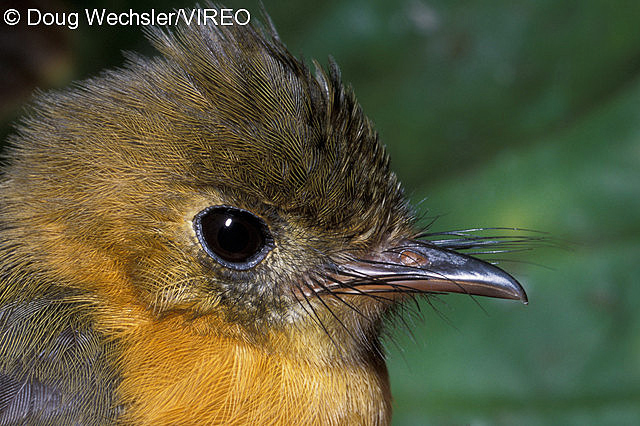
Tawny-breasted Flycatcher Myiobius villosus
rump
The region between the back and the tail on the dorsal side of the bird
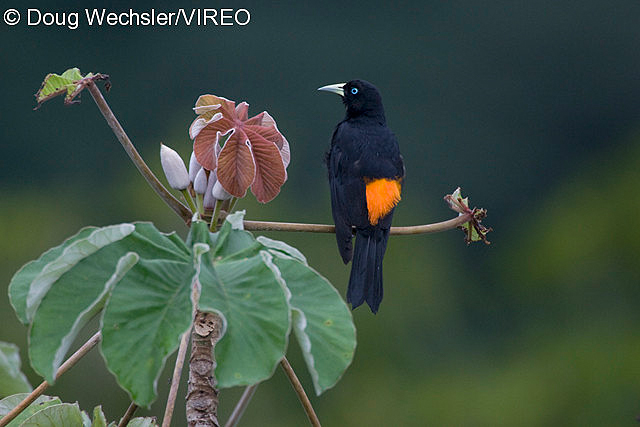
Scarlet-rumped Cacique Cacicus uropygialis
Ssacral vertebrae
Vertebrae just anterior to the caudal vertebrae, which are fused as part of the synsacrum
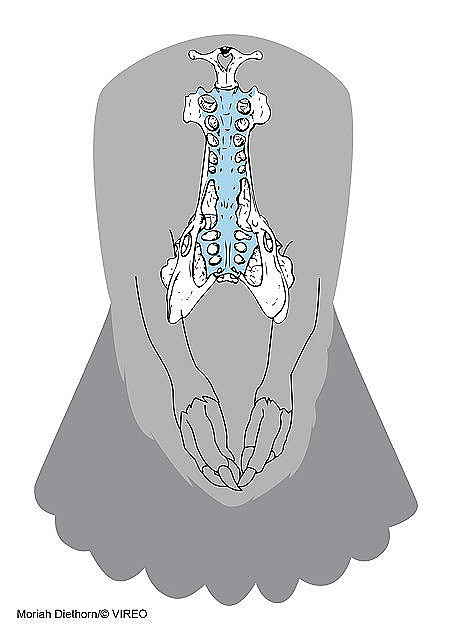
sacral vertebrae
salt gland
An organ for excreting excess salt found in seabirds, located above or in front of the eye
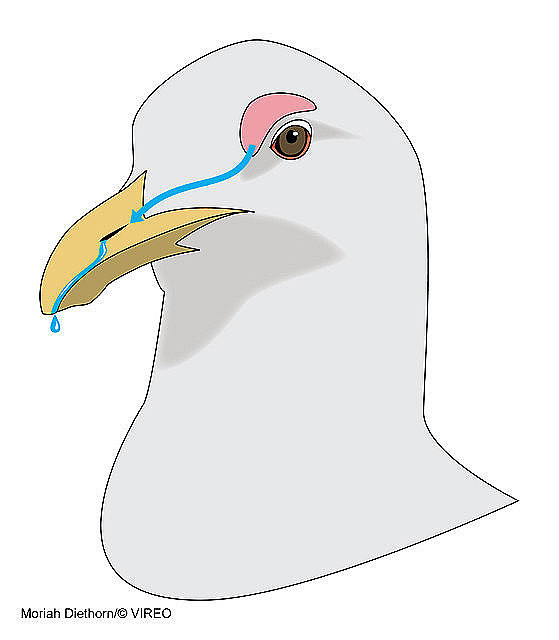
salt gland
sap well
A hole drilled in bark by a sapsucker that allows sap to collect. The woodpecker returns periodically to the well to drink the sap and eat any insects attracted to it.
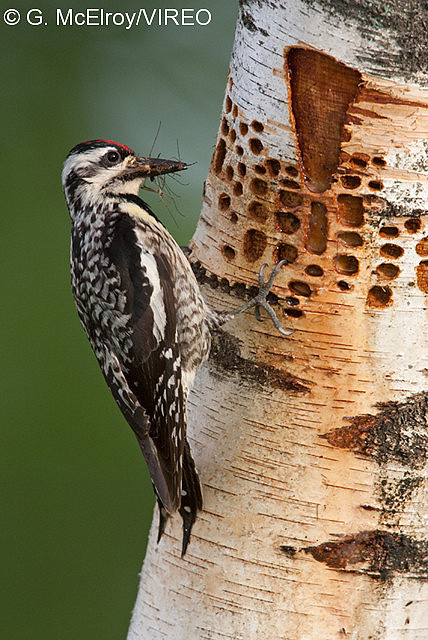
Yellow-bellied Sapsucker Sphyrapicus varius
scapula
The shoulder blade
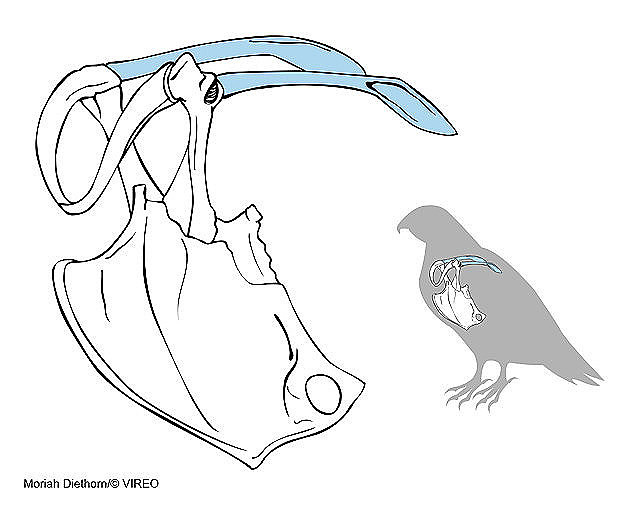
scapula
scapulars
Feathers at the base of the wing lying at the side of the back and often covering the folded wing
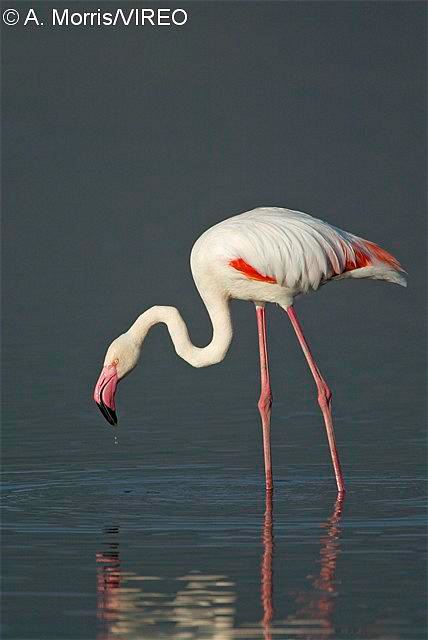
Greater Flamingo Phoenicopterus roseus
scavengers
Animals that feed on dead and decaying plants and animals
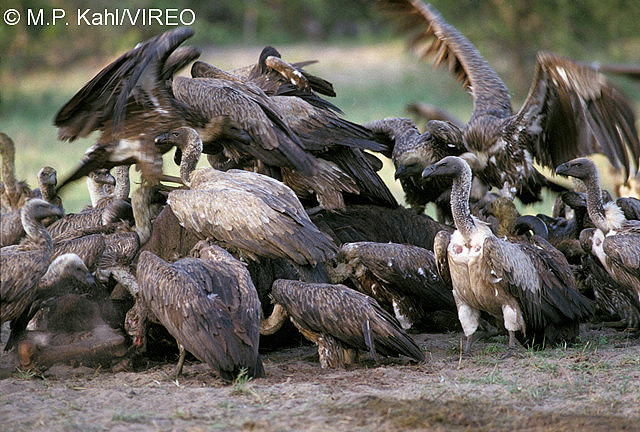
White-backed Vulture Gyps africanus
scleral ossicles
A ring of bones that supports the eye
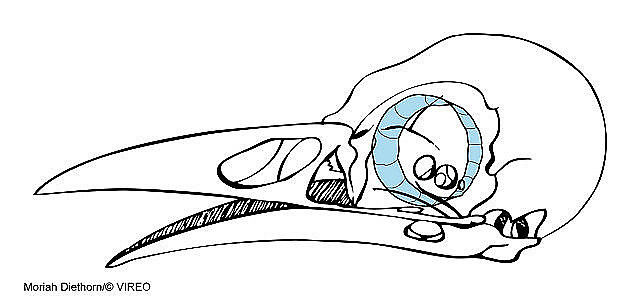
scleral ossicles
scrape
A shallow depression in the ground made by a bird to use as a nest
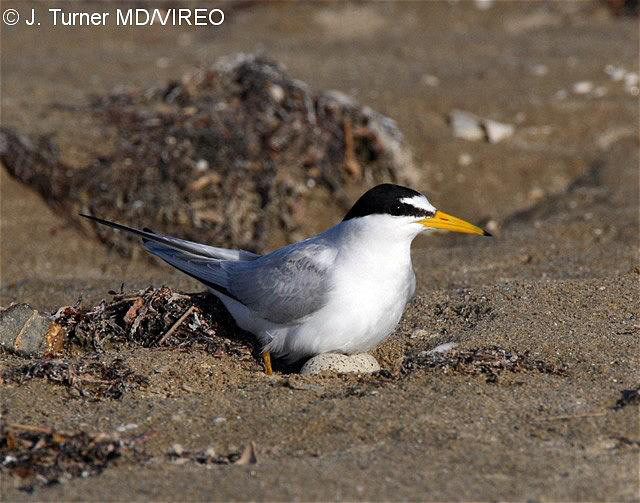
Least Tern Sternula antillarum
secondaries
Flight feathers that attach to the ulna (forearm) inward from the primaries
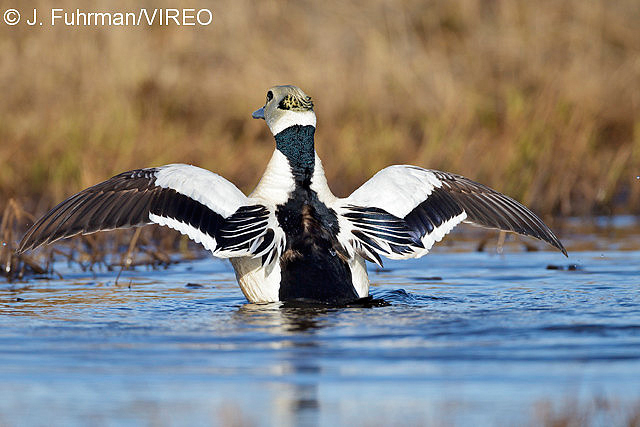
Steller's Eider Polysticta stelleri
slots
Spaces between the primary feathers of certain birds such as vultures that allow individual feathers to act as airfoils and reduce turbulence
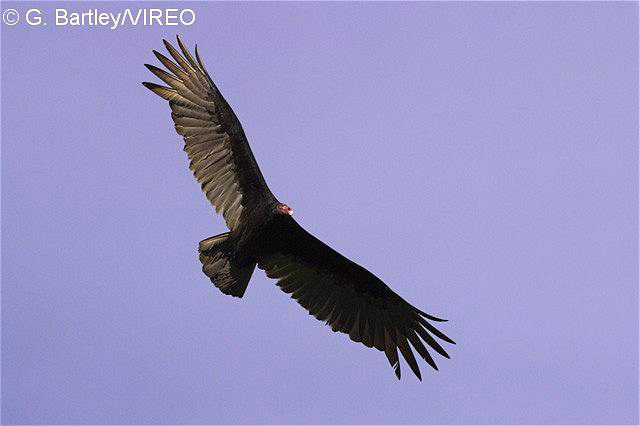
Turkey Vulture Cathartes aura
soaring
Sailing on outstretched wings without flapping or losing altitude
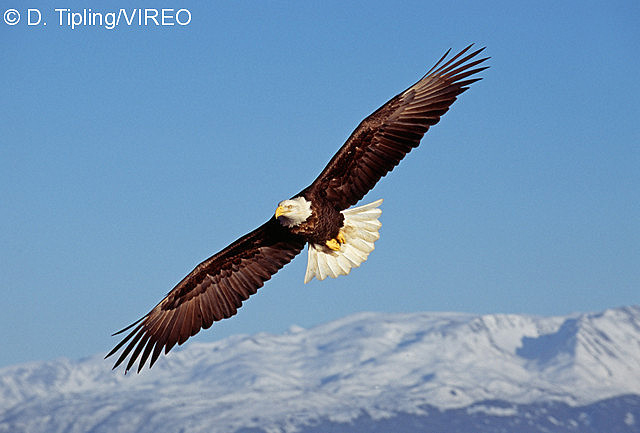
Bald Eagle Haliaeetus leucocephalus
songs
Complex vocalizations communicating territoriality or advertising for a mate
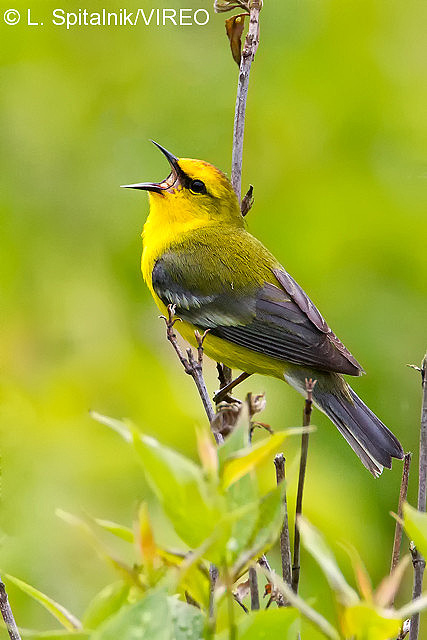
Blue-winged Warbler Vermivora pinus
speculum
A patch of bright feathers on the secodaries of certain ducks' wings
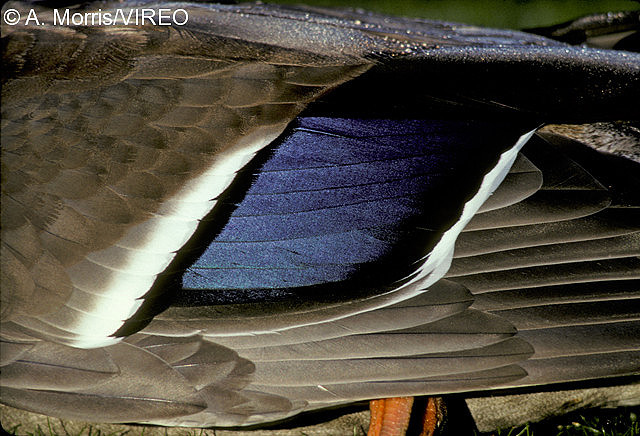
Mallard Anas platyrhynchos
spread-wing posture
Perched stance with wings outspread
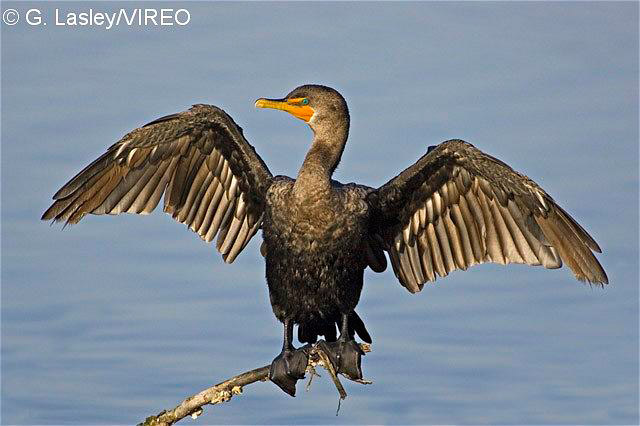
Double-crested Cormorant Phalacrocorax auritus
spur
A bony spike on the wing or tarsus certain birds, such as jacanas, screamers, pheasants, and spurfowl
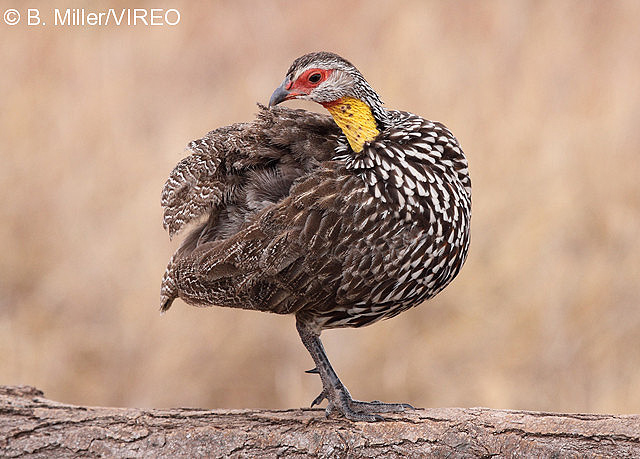
Yellow-necked Spurfowl Francolinus leucoscepus
sternum
The breastbone - the site of attachment for the major flight muscles and the ribs
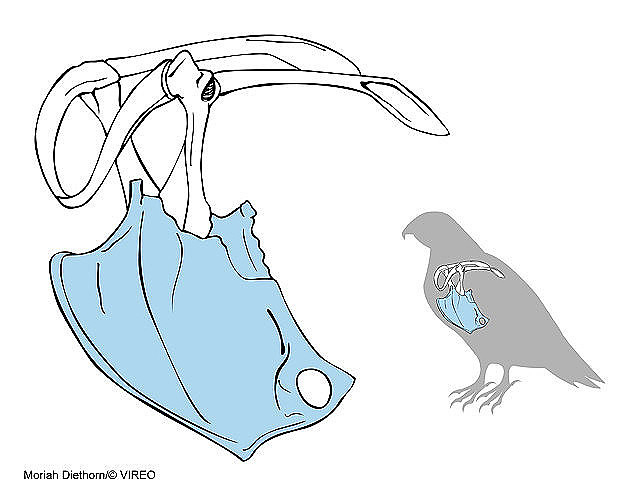
sternum
structural colors
Coloration resulting from light scattering due to the physical structure of feathers
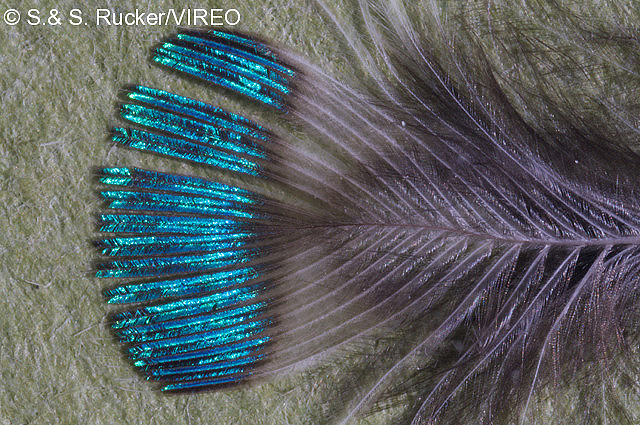
Magnificent Hummingbird Eugenes fulgens
subadult
A bird past the juvenile stage that has not reached maturity
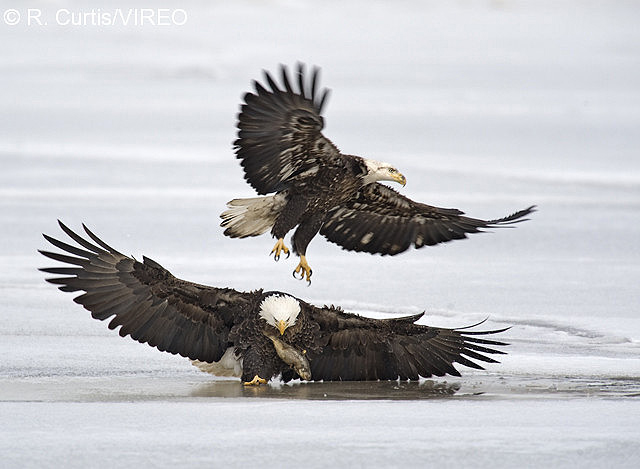
Bald Eagle Haliaeetus leucocephalus
sunning
Posturing to catch solar radiation
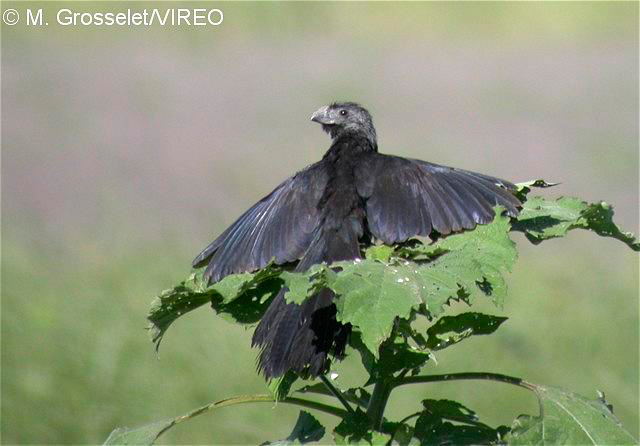
Groove-billed Ani Crotophaga sulcirostris
supracoracoideus
The muscle that powers the upstroke of the wing. It attaches to the sternum and the humerus.
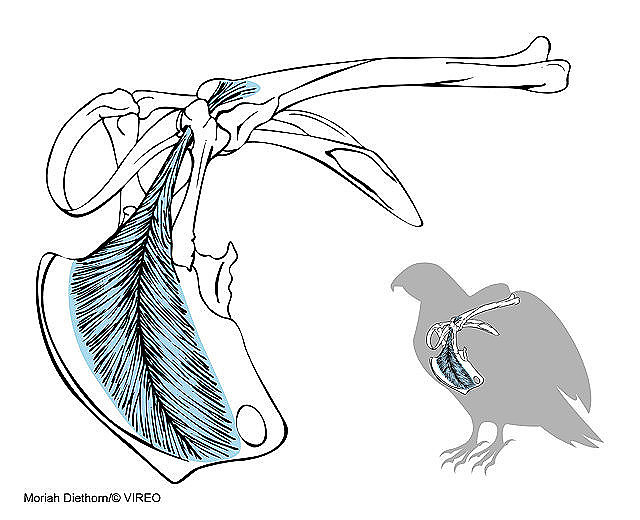
supracoracoideous
surface diving
Diving beneath the water, starting at a swimming position
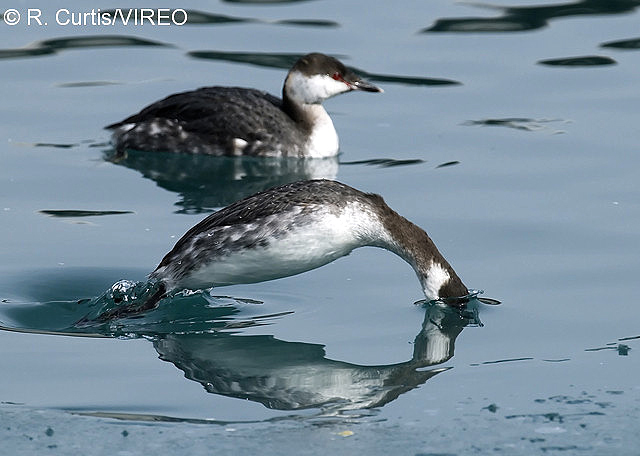
Horned Grebe Podiceps auritus
syndactyl feet
Feet with the outer and middle toes fused for most of the length, such as in kingfishers and hornbills
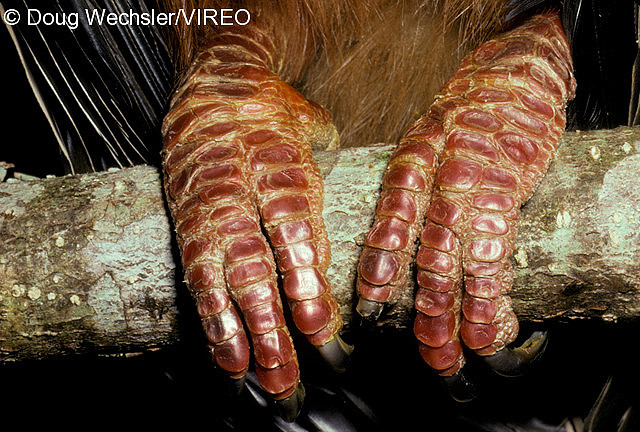
Rufous Hornbill Buceros hydrocorax
syringeal muscles
Muscles that modulate the voice by controlling the shape of the syrinx (avian voice box)
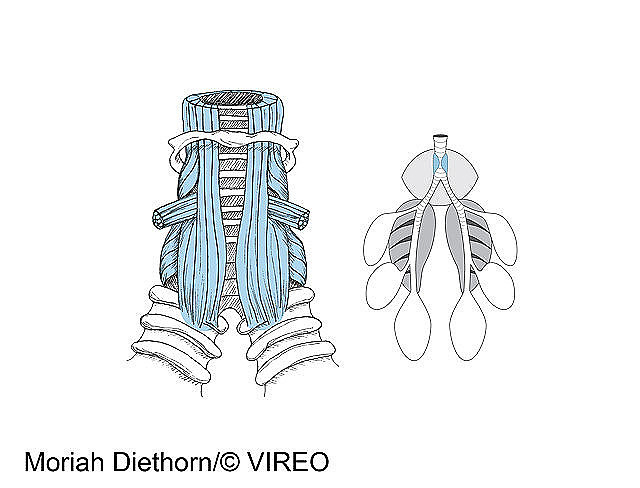
syringeal muscles
Ttarsometatarsus
The outermost of the three long leg bones in a bird. It is homologous to ankle and foot bones of mammals.
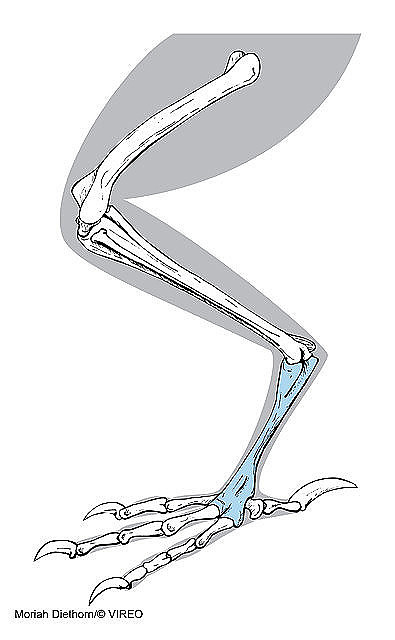
tarsometatarsus
tarsus
Alternate name for the tarsometatarsus and also for that region of the leg
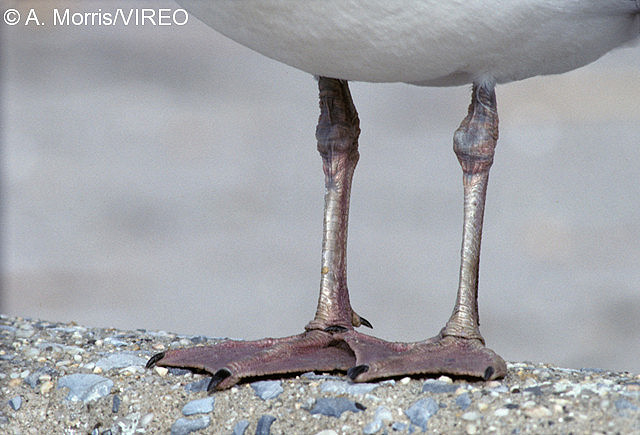
Herring Gull Larus argentatus
temporal fovea
An area of concentrated receptor cells in the retina toward the side of the head. It increases the depth perception in hawks, terns parrots, swallows and doves.
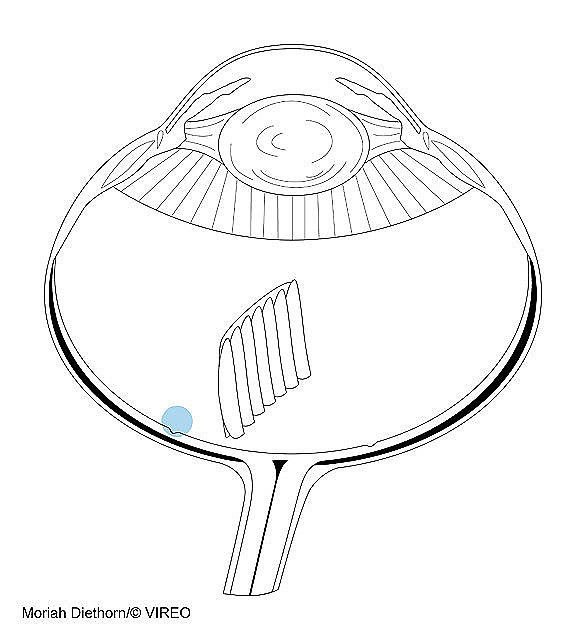
temporal fovea
territory
A space defended by a bird for the exclusive use
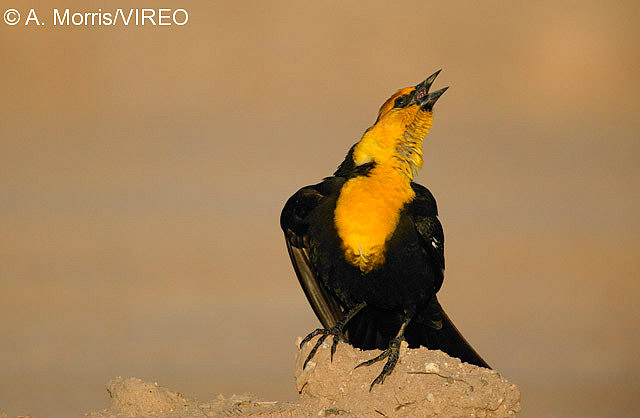
Yellow-headed Blackbird Xanthocephalus xanthocephalus
tibiotarsus
The middle bone of the three long bones of the leg, familiar to us as the drumstick
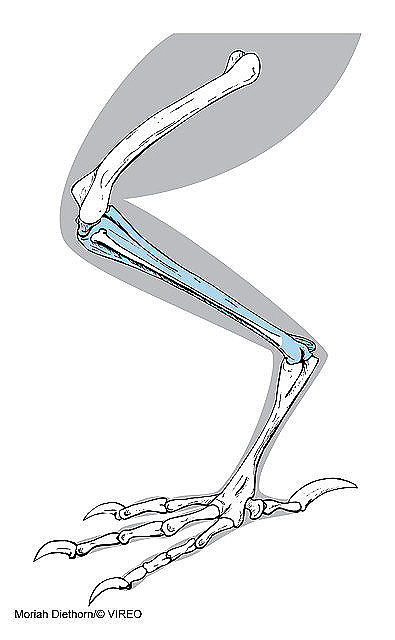
tibiotarsus
torpor
A state of severely decreased metabolism, in which the body temperature of a bird is reduced and energy is conserved
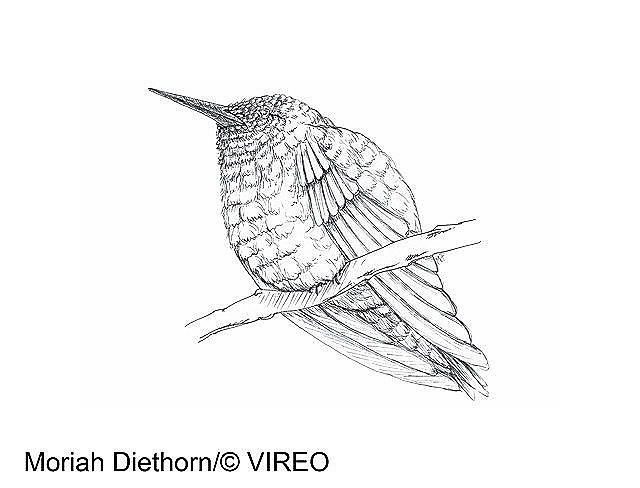
torpor
totipalmate
All four toes joined in a web; typical of pelicans, boobies, and cormorants
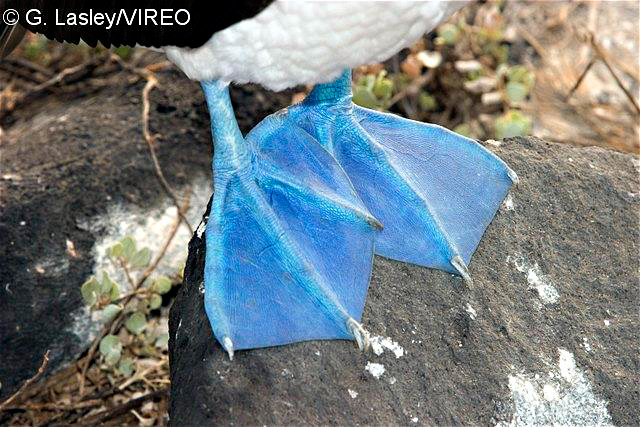
Blue-footed Booby Sula nebouxii
tubular nares
A cylindrical extension of the nostrils in Procelliform seabirds, which helps to expel briny secretions of the salt gland
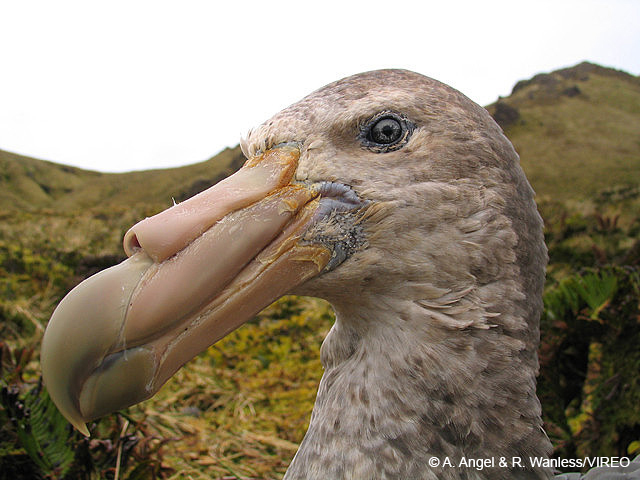
Southern Giant-Petrel Macronectes giganteus
tympanic membrane
The eardrum

Double-wattled Cassowary Casuafalcorius casuarius
Uulna
Larger of paired bones between the humerus and the wrist, to which secondaries attach
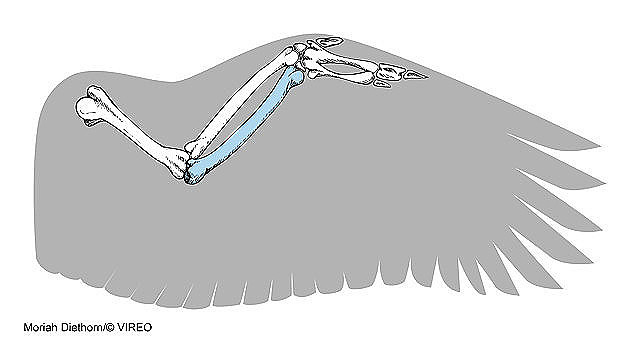
ulna
undertail coverts
The ventral feathers covering the base of the retrices
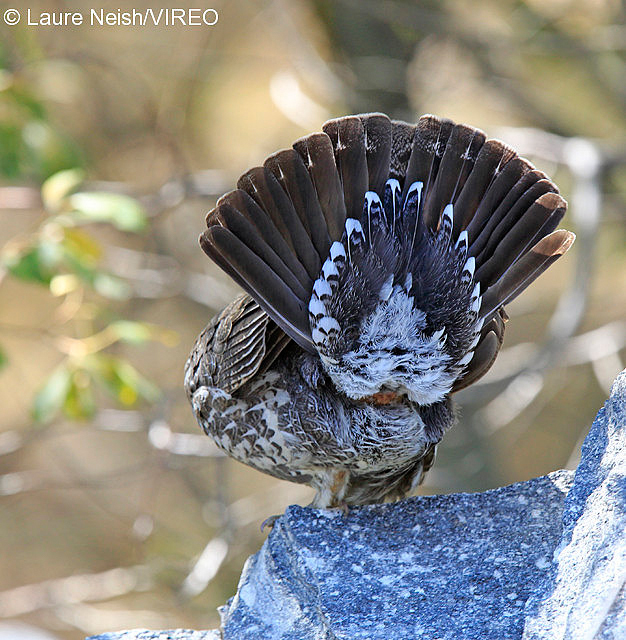
Dusky Grouse Dendragapus obscurus
underwing coverts
The ventral feathers covering the base of the remiges
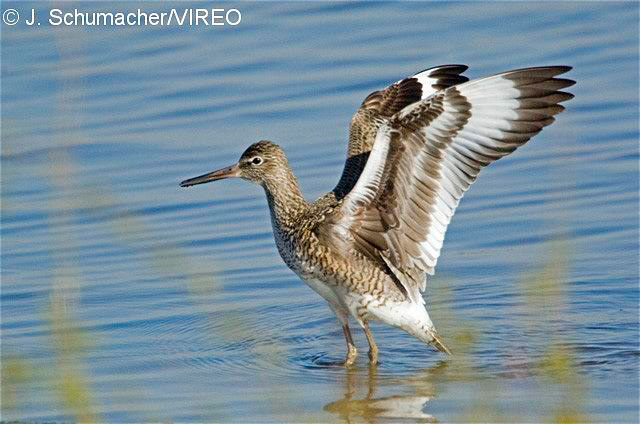
Willet Catoptrophorus semipalmatus
uppertail coverts
The dorsal feathers covering the base of the retrices
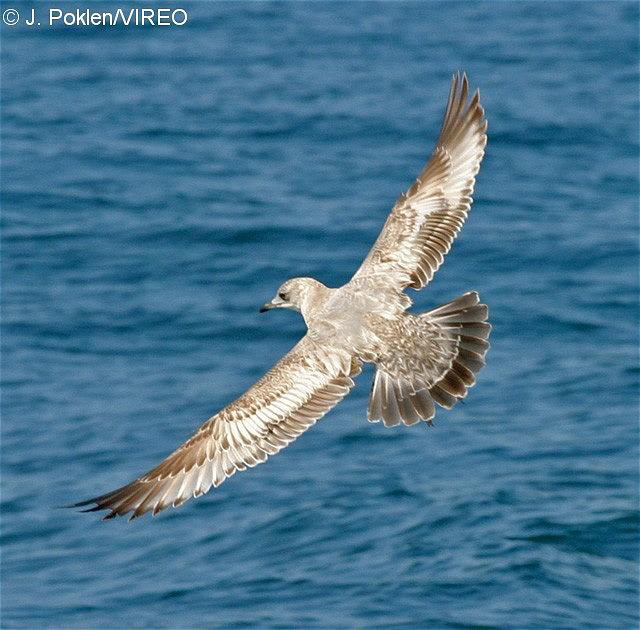
Mew Gull Larus canus
uric acid
A pasty white excretory product equivalent to urine, but less wasteful of water
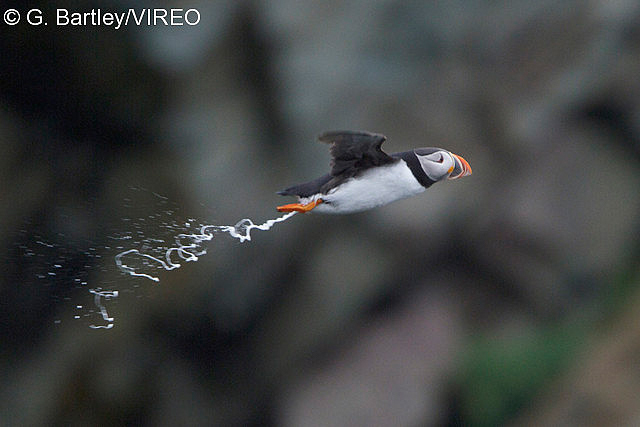
Atlantic Puffin Fratercula arctica
uropygial gland
The preen gland located near the dorsal base of the tail, which secretes oily substances to protect the feathers
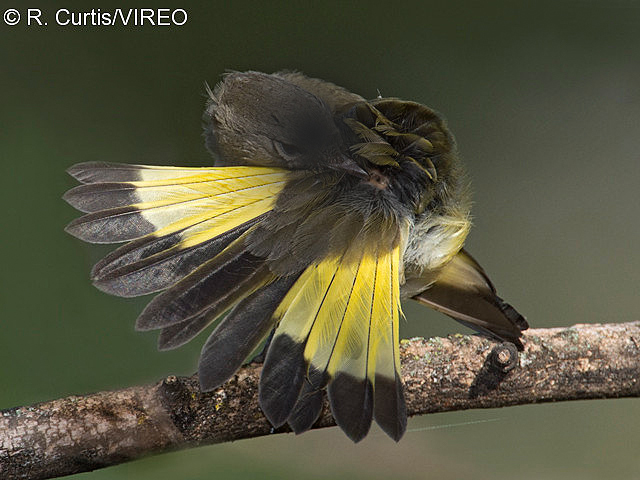
American Redstart Setophaga ruticilla
Vvane
The sides of the feather extending from the shaft
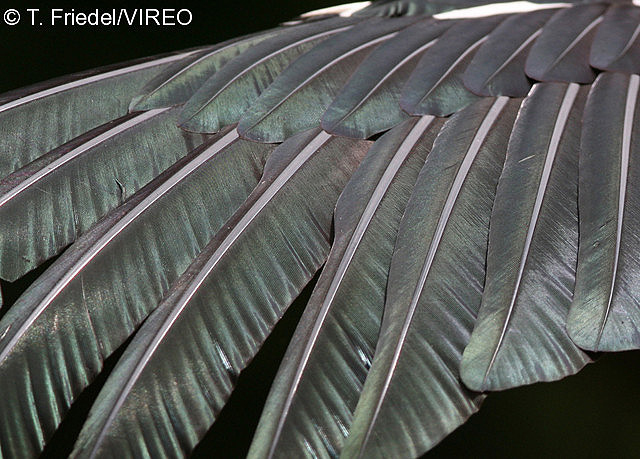
Wood Stork Mycteria americana
vent
The opening of the cloaca
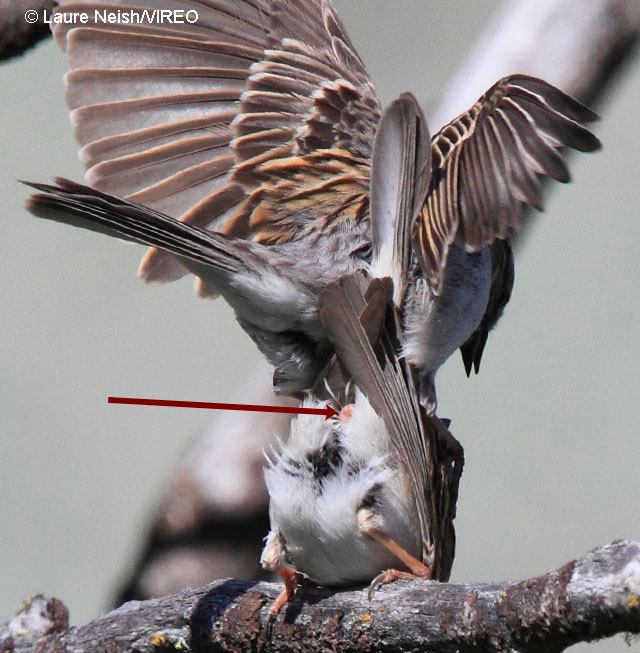
Chipping Sparrow Spizella passerina
vitelline membrane
The thin layered structure around the egg yolk, which following fertilization forms a barrier to new spermatozoa
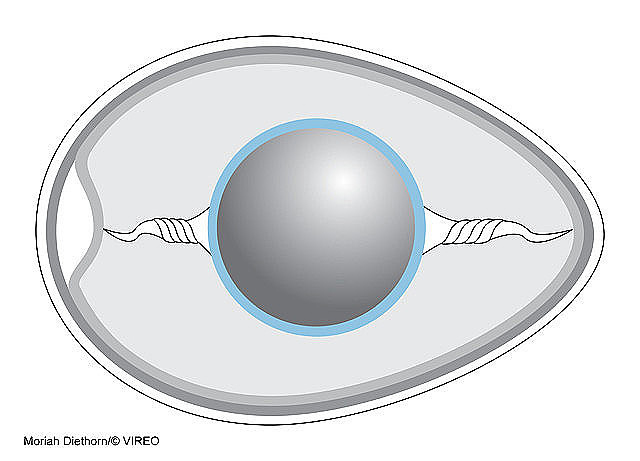
vitelline membrane
Wwing bar
A stripe formed on the wing by light-colored tips to coverts
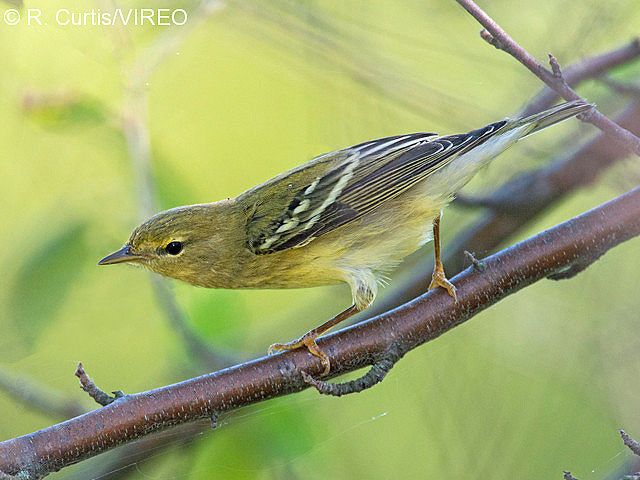
Blackpoll Warbler Setophaga striata
wing spurs
Sharp bony projections on the wings of certain birds such as jacanas, screamers and some plovers
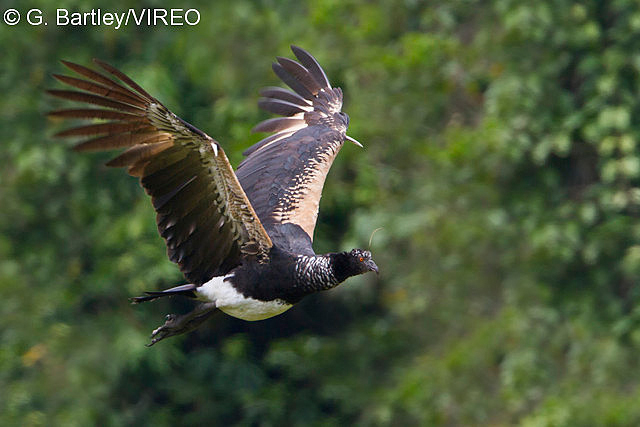
Horned Screamer Anhima cornuta
wingspread
The distance from one wingtip to the other
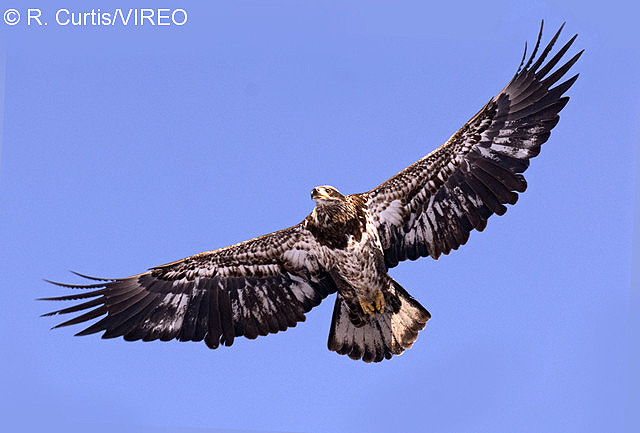
Bald Eagle Haliaeetus leucocephalus
wrist
The bend in the wing at the base of the primary feathers where the outmost segment of the wing starts--rusty-colored in this Great Blue Heron
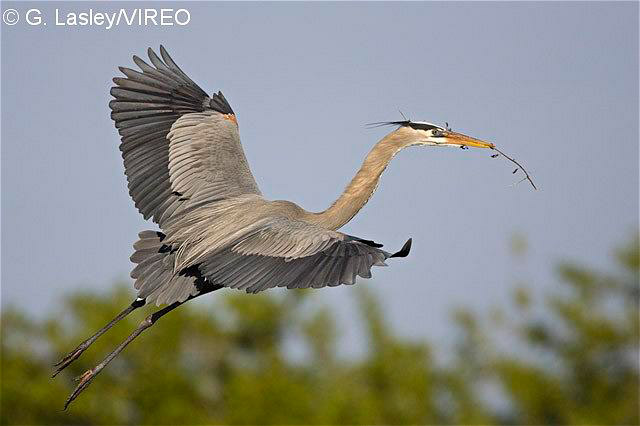
Great Blue Heron Ardea herodias
Xyolk
The yellow part of the egg which feeds the developing embryo. These men are cooking an ostrich egg.
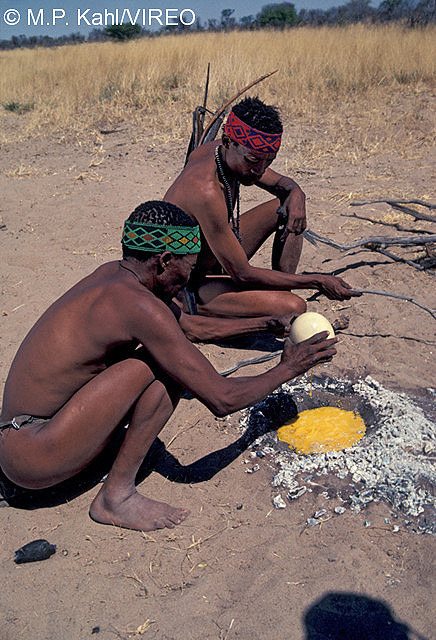
Common Ostrich Struthio camelus
Zzygodactyl feet
A foot in which the hallux and fourth toe face backward and second and third to face forward, as in woodpeckers and parrots
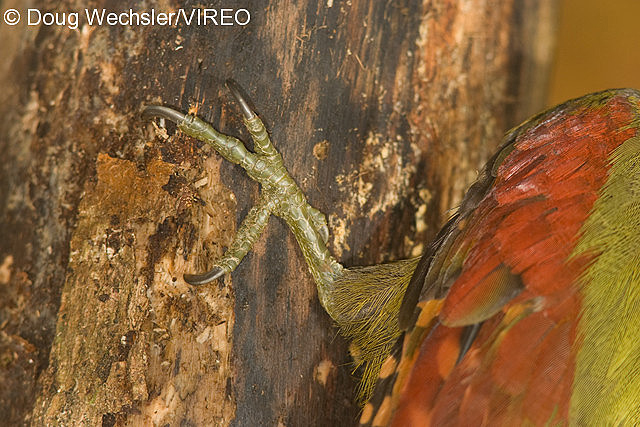
Checker-throated Woodpecker Picus mentalis
We value your feedback:
Suggest additional terms or information

